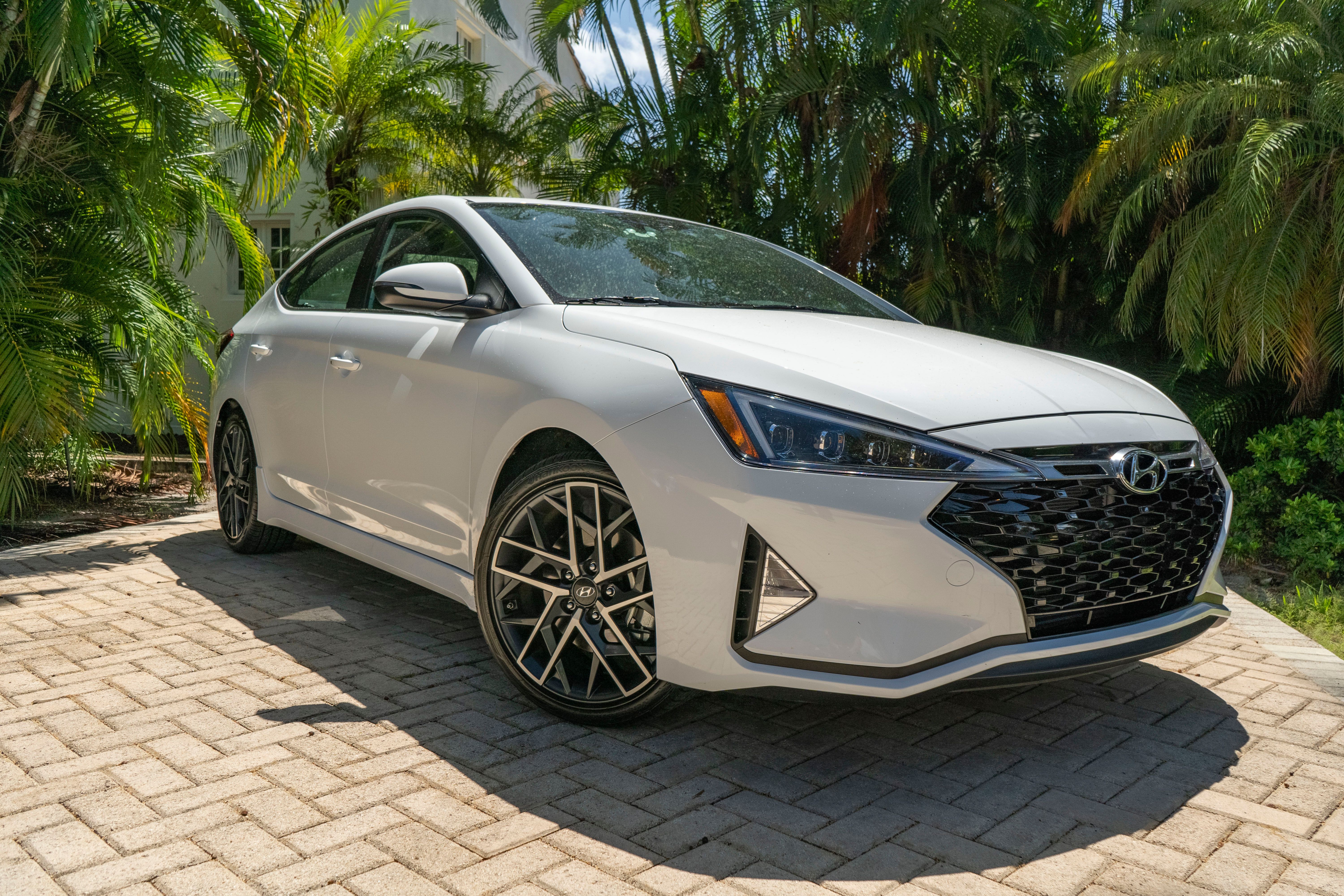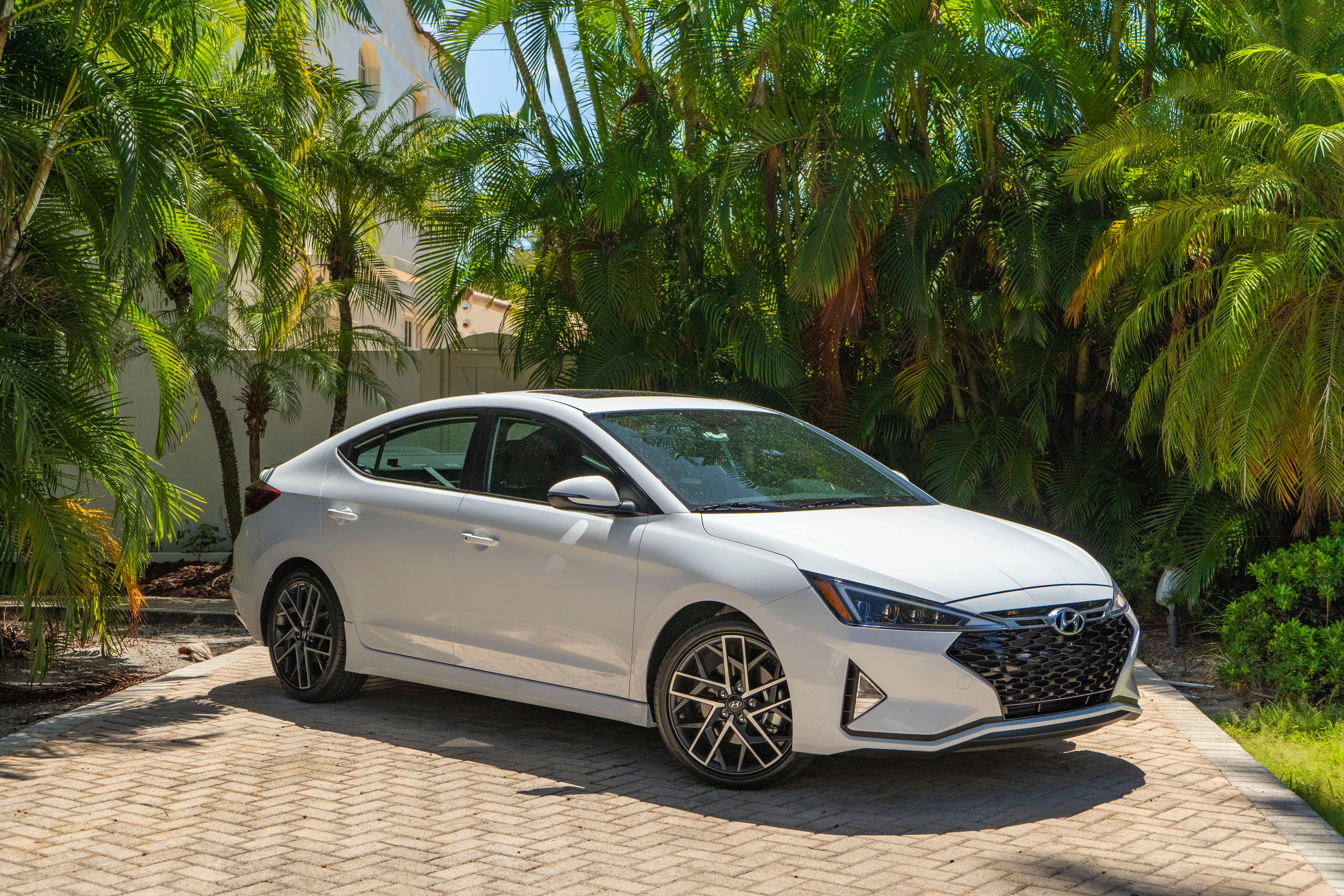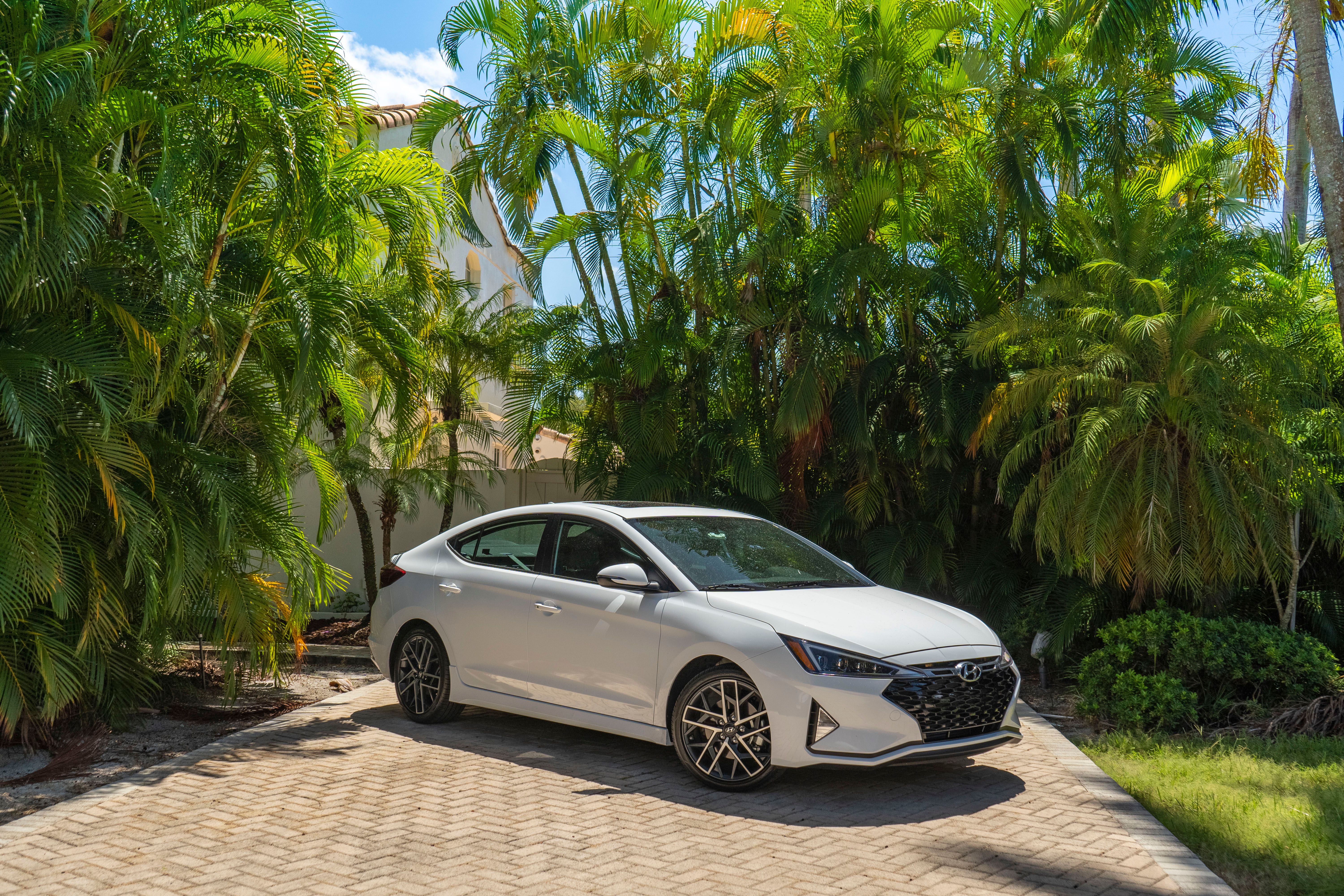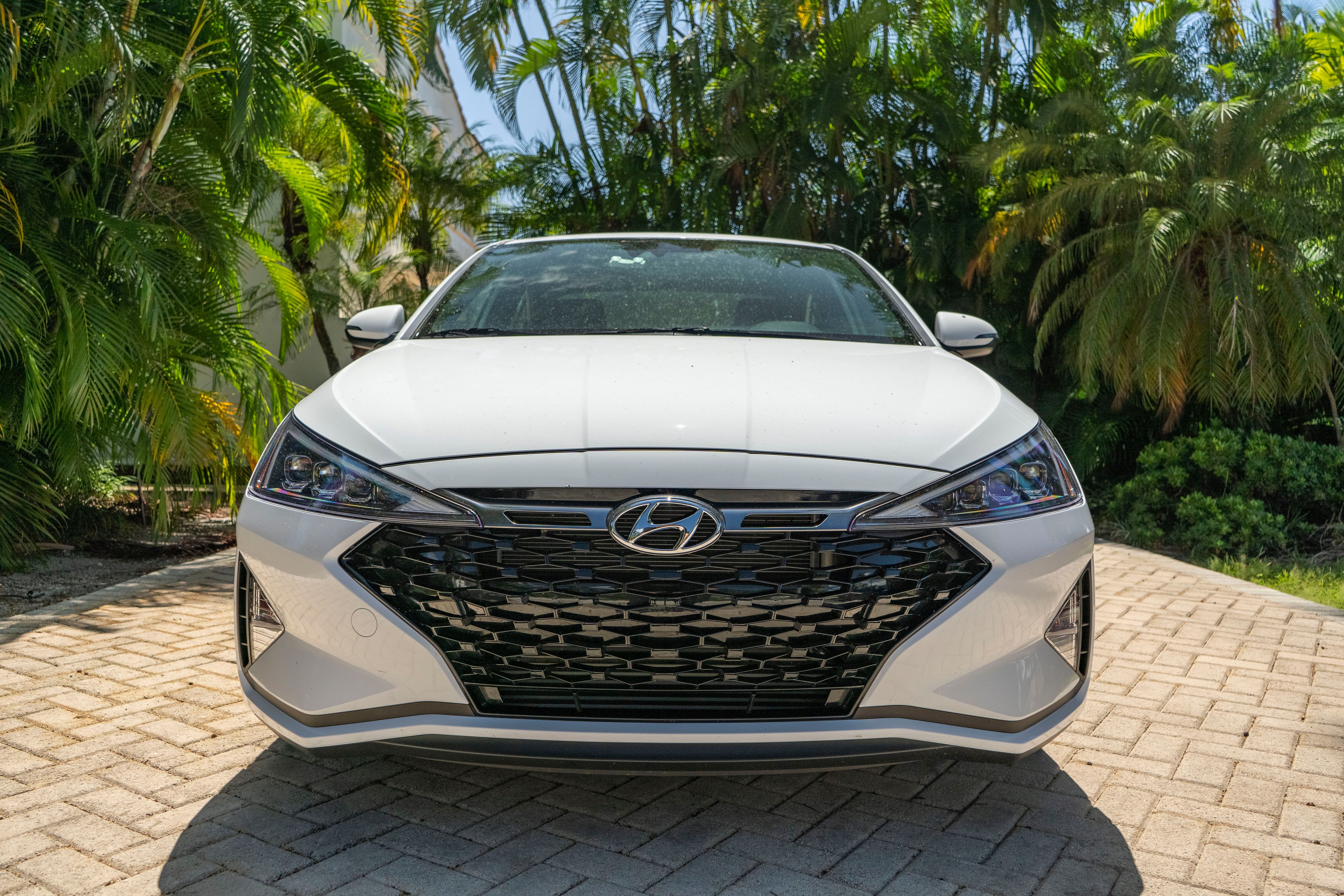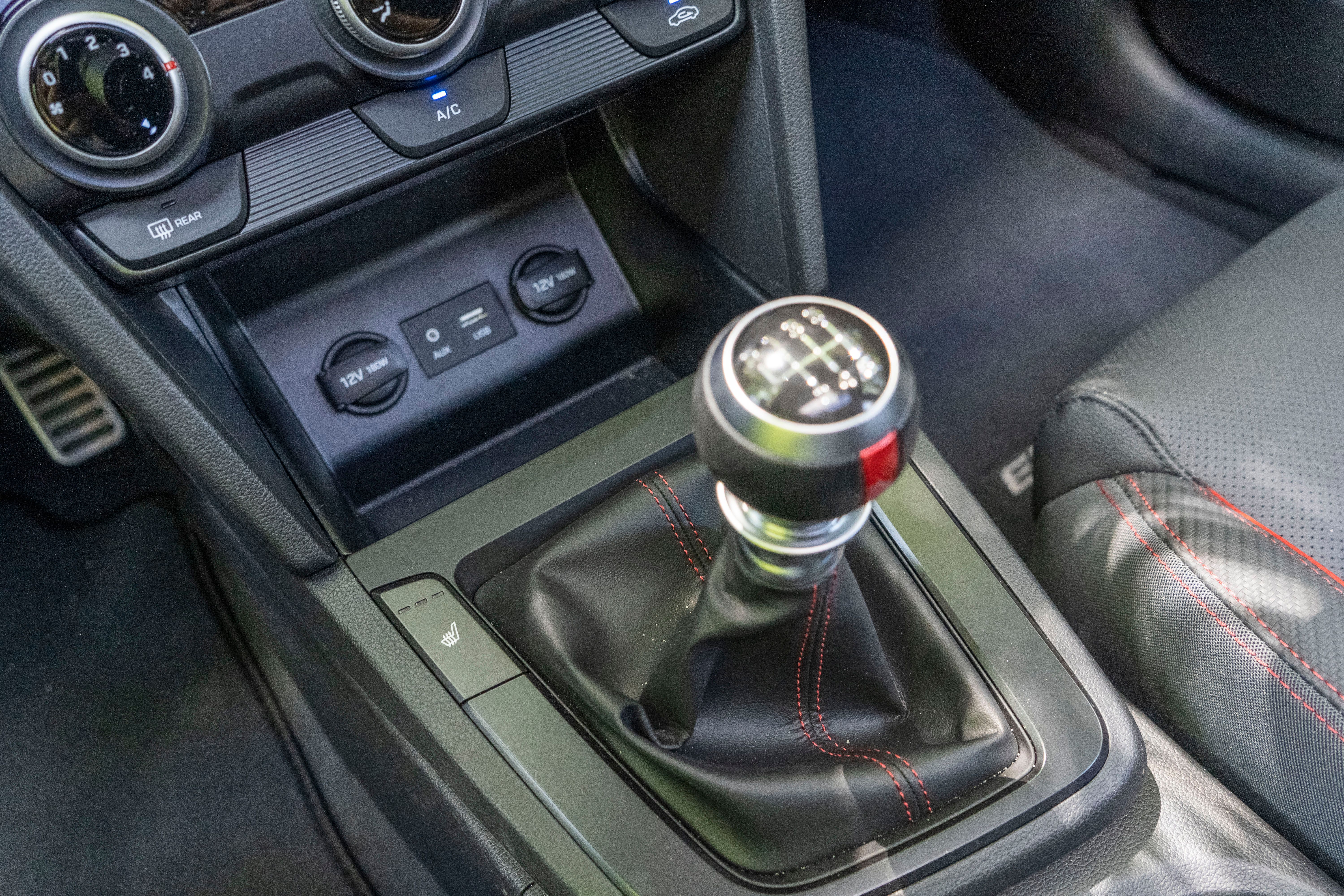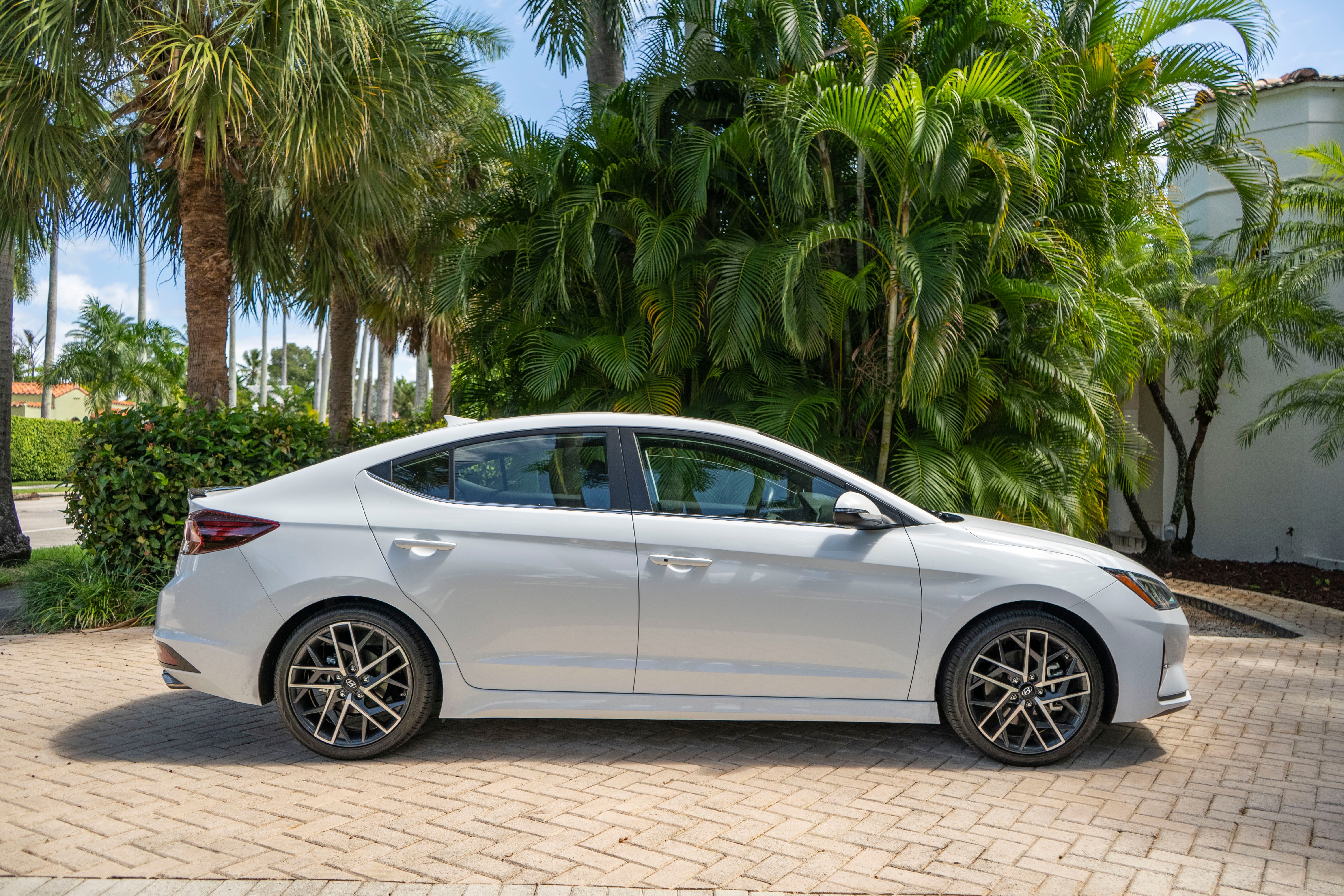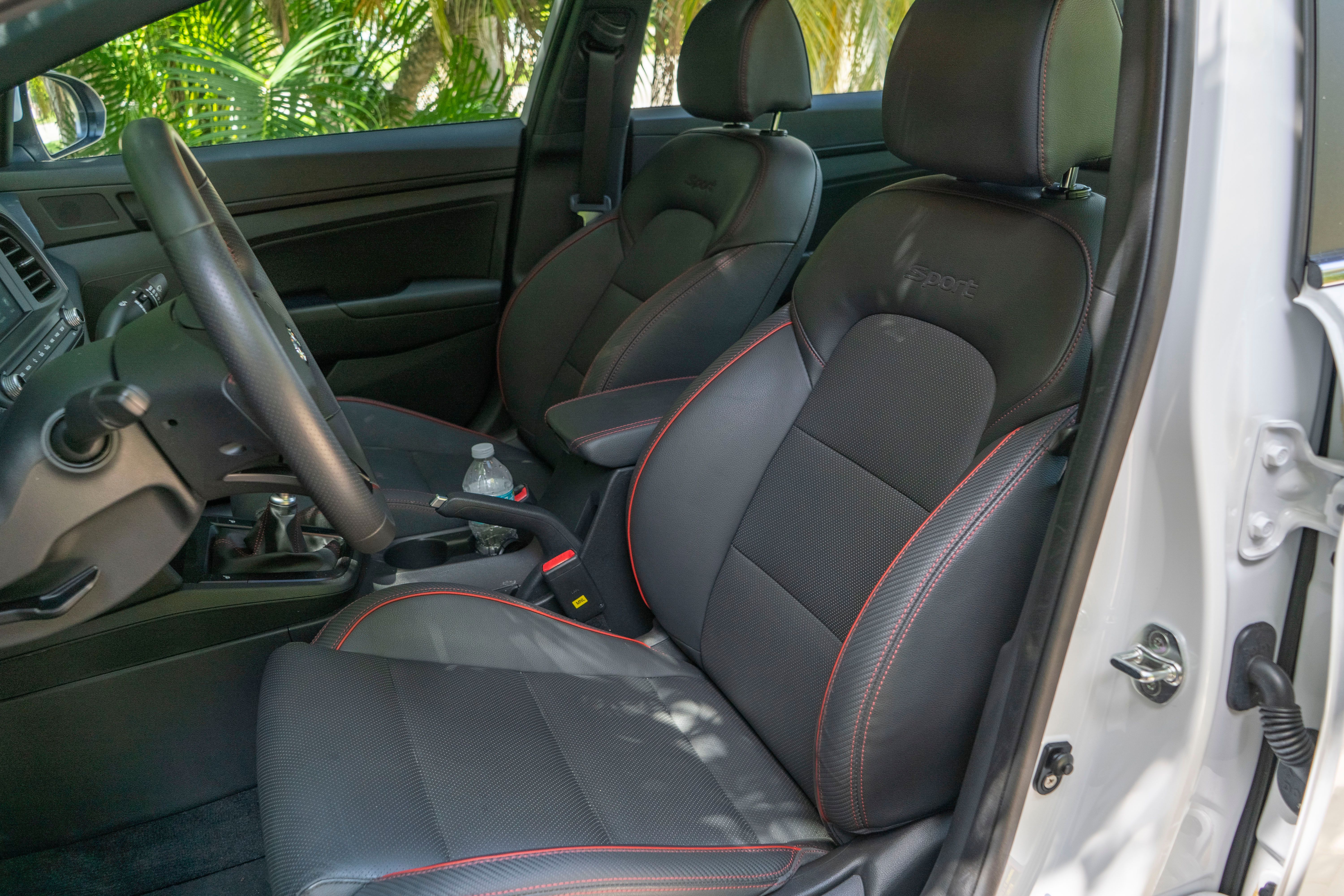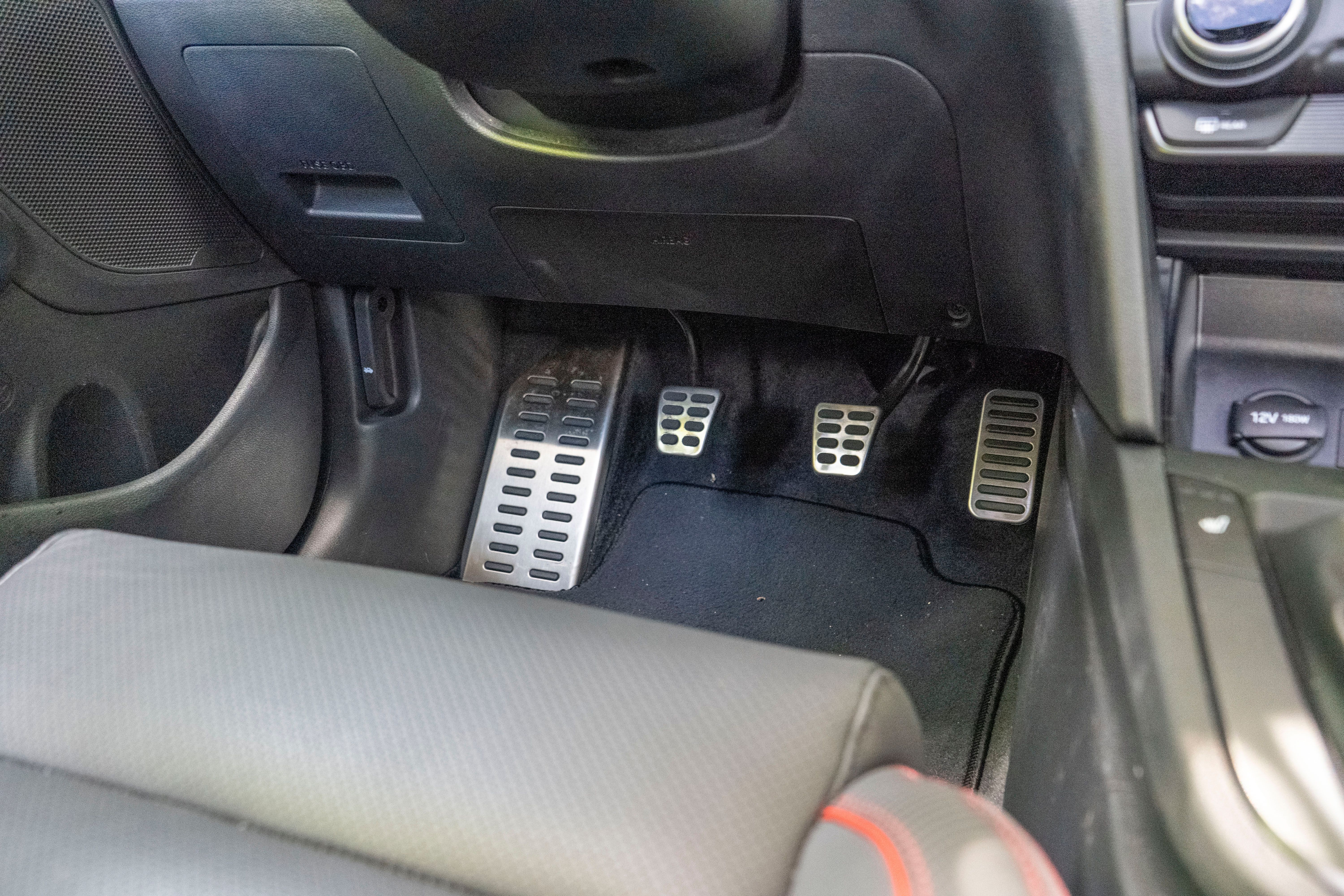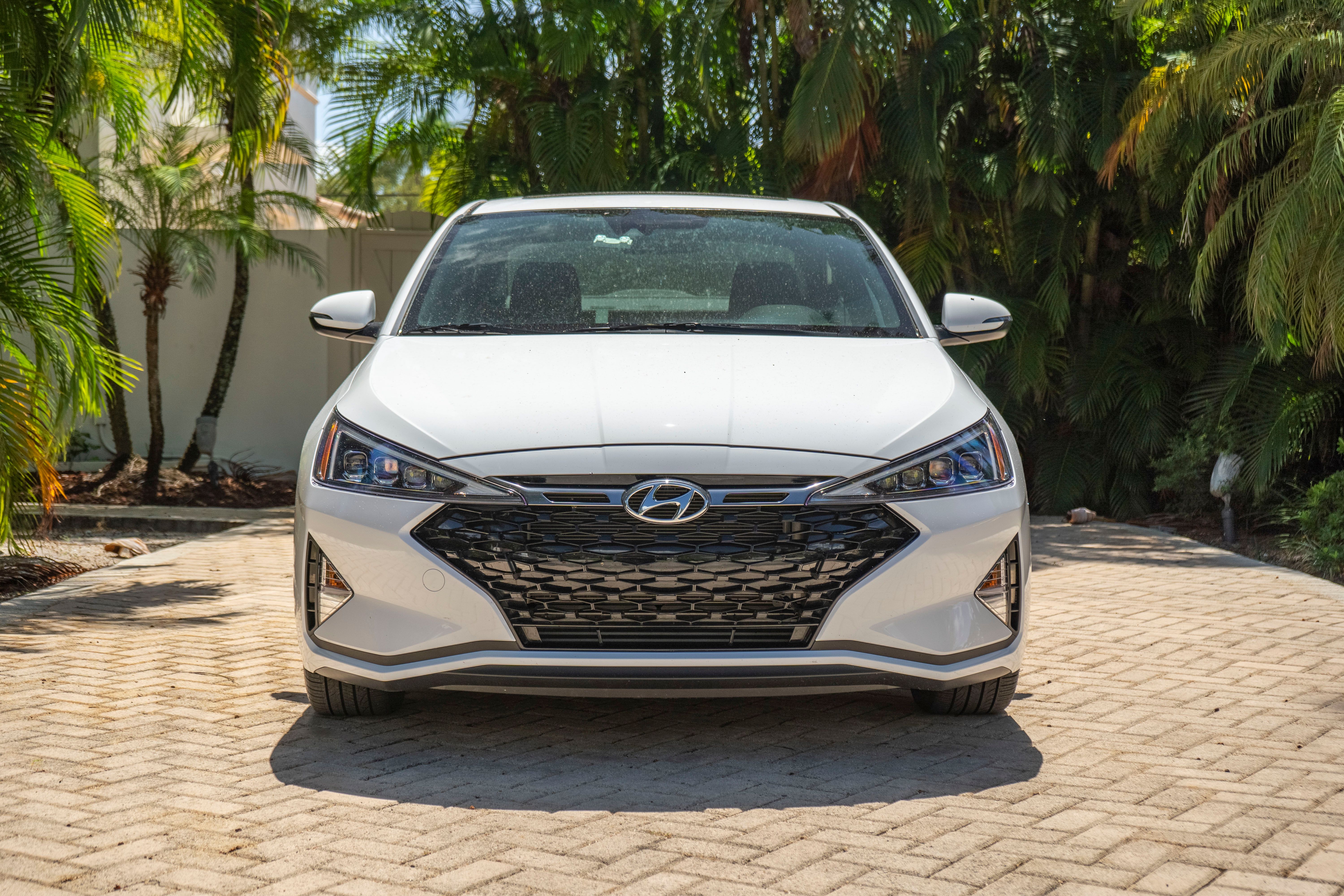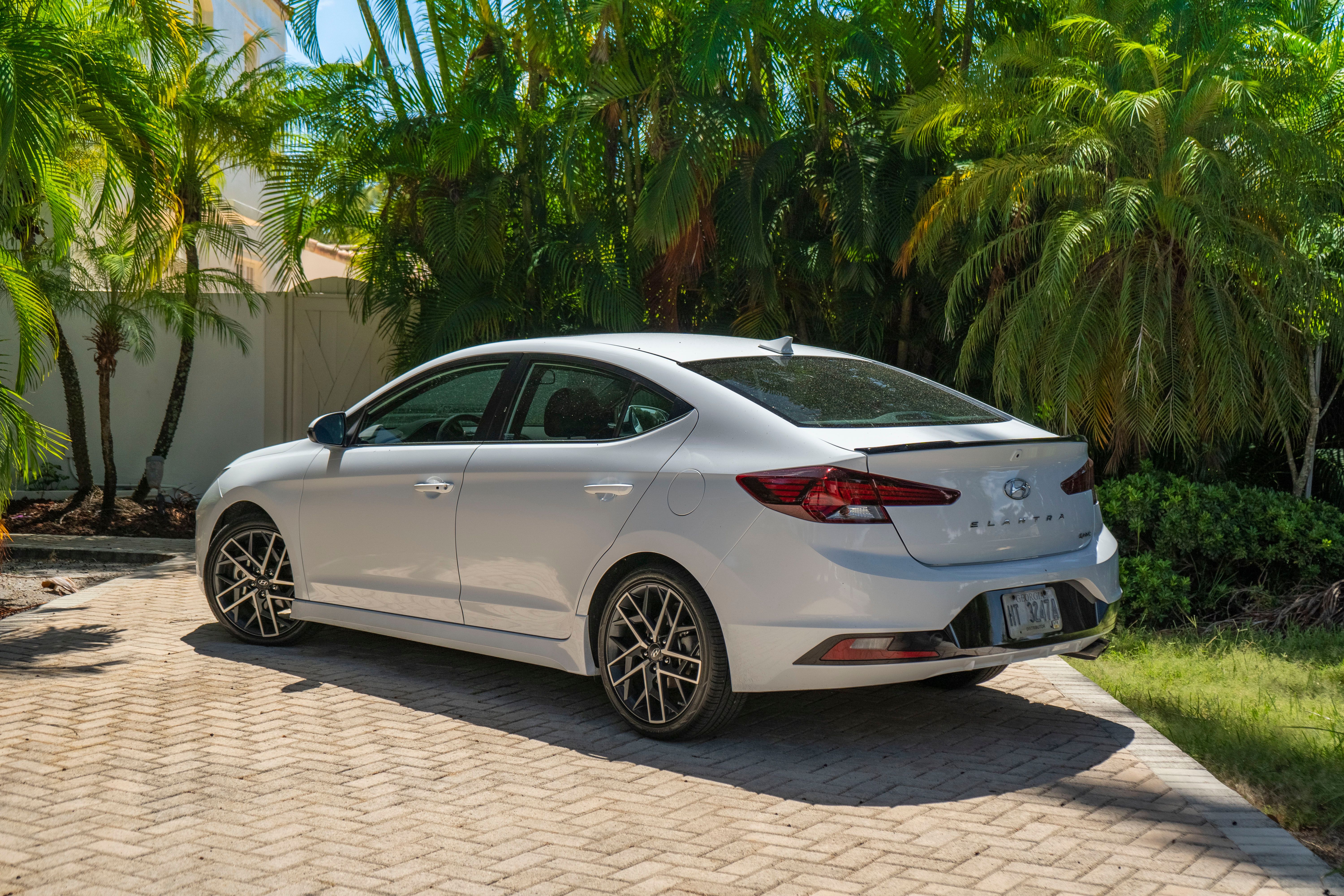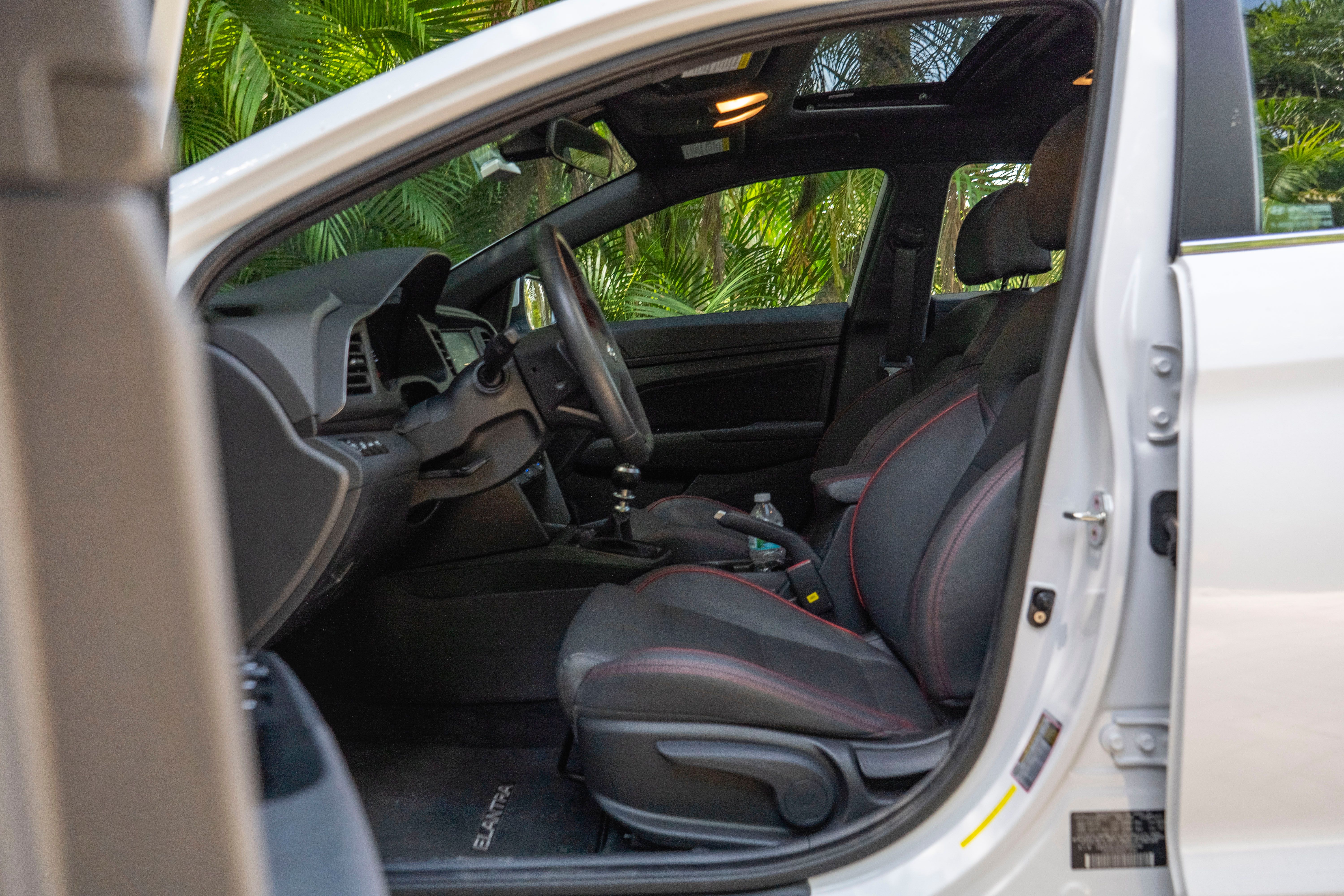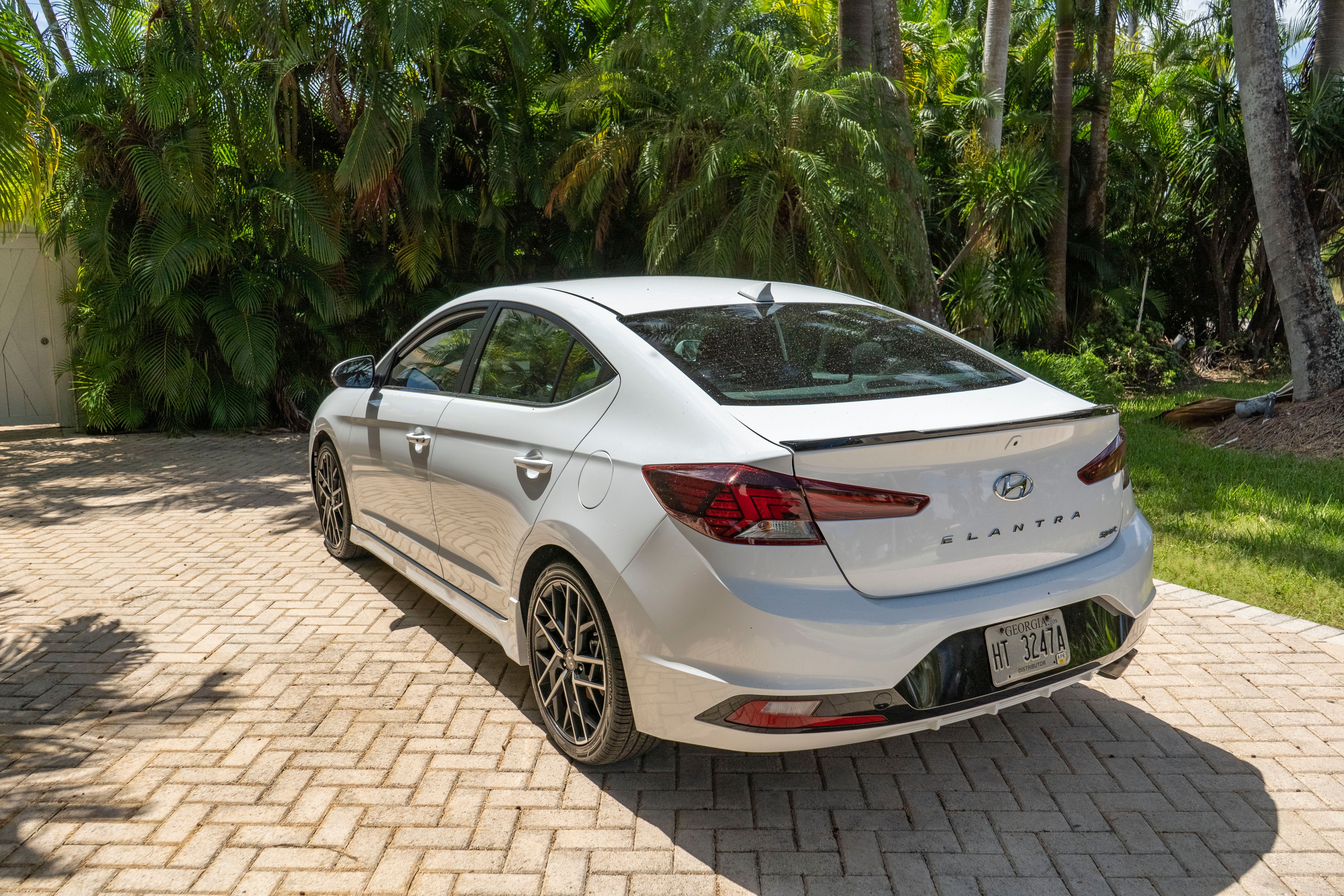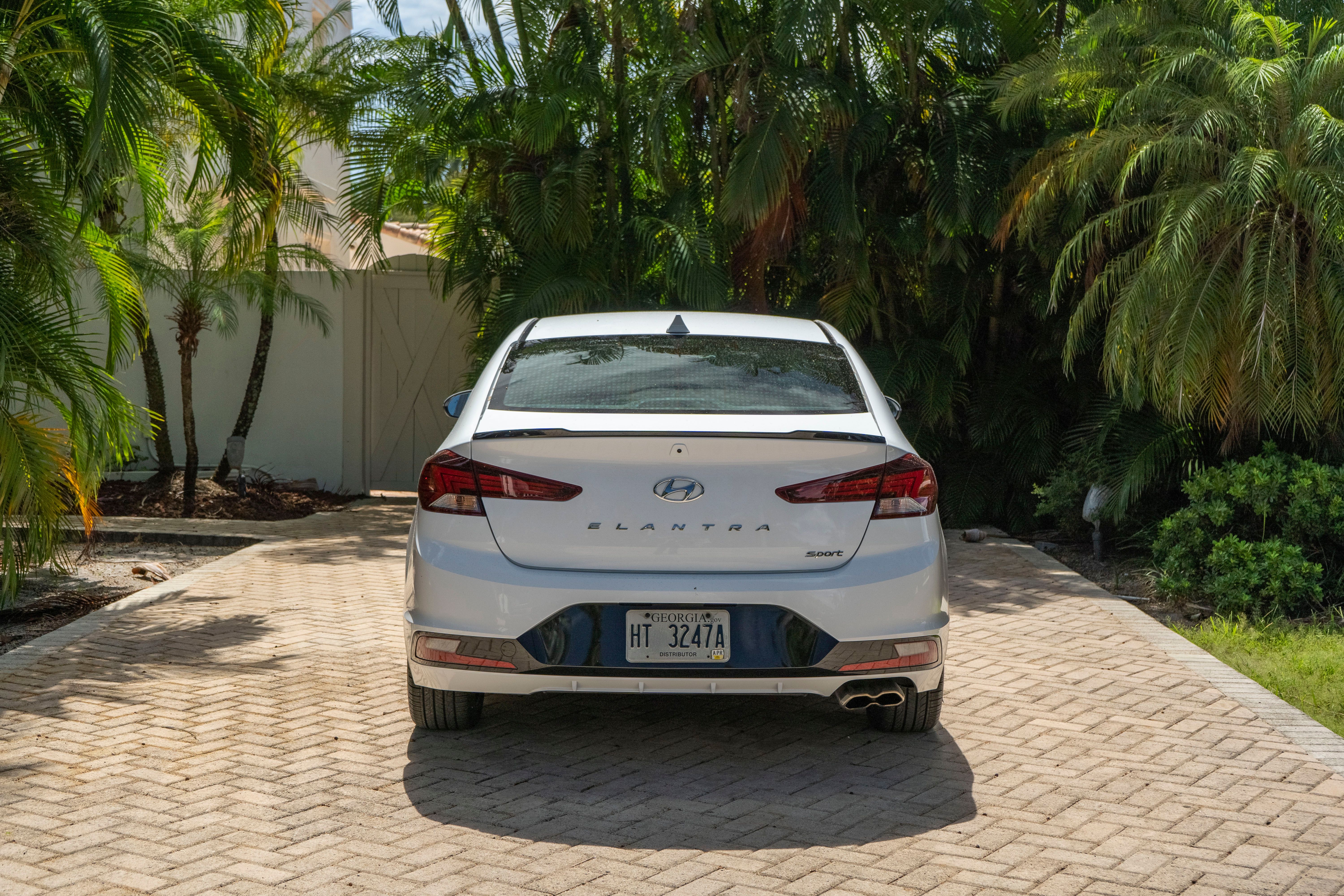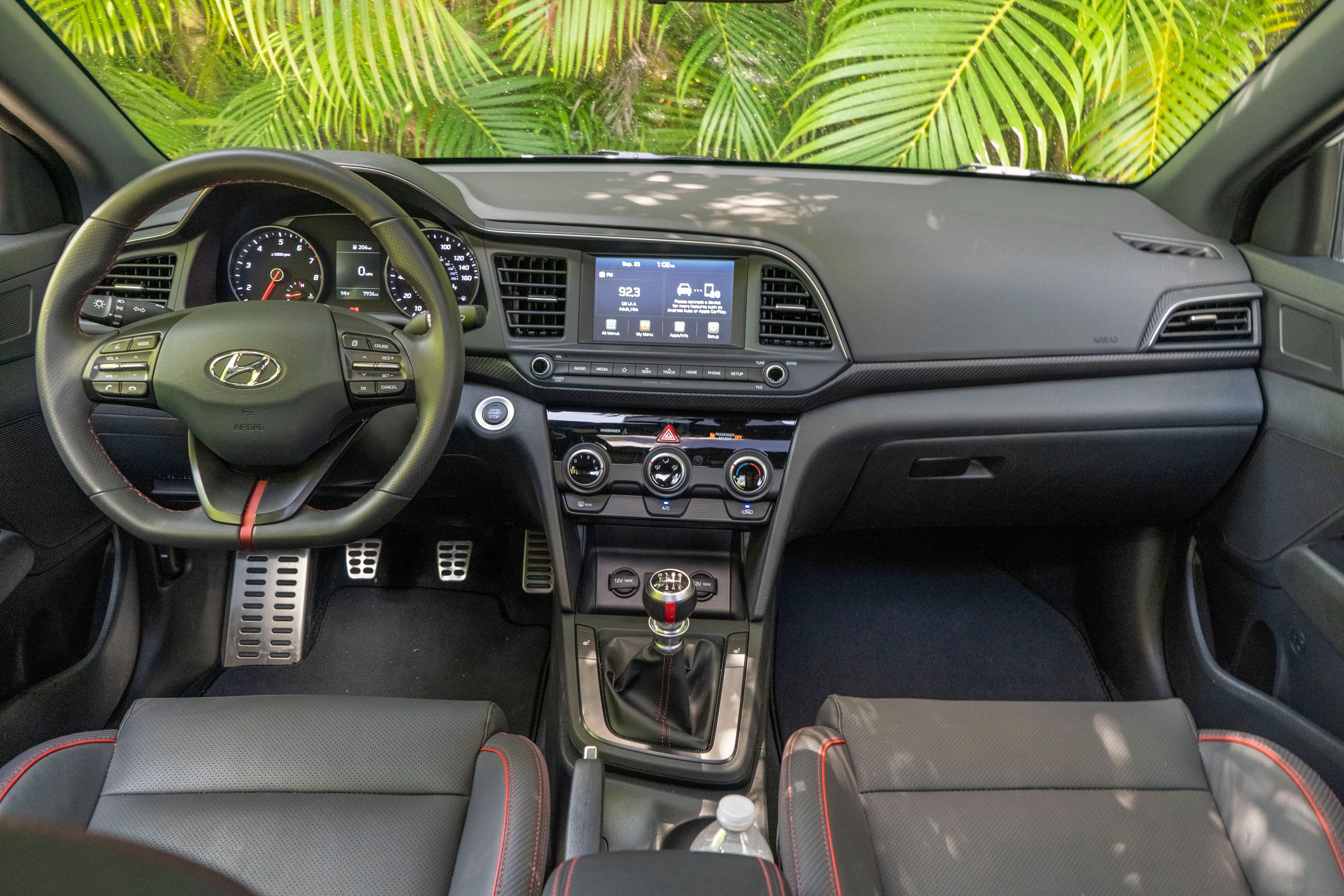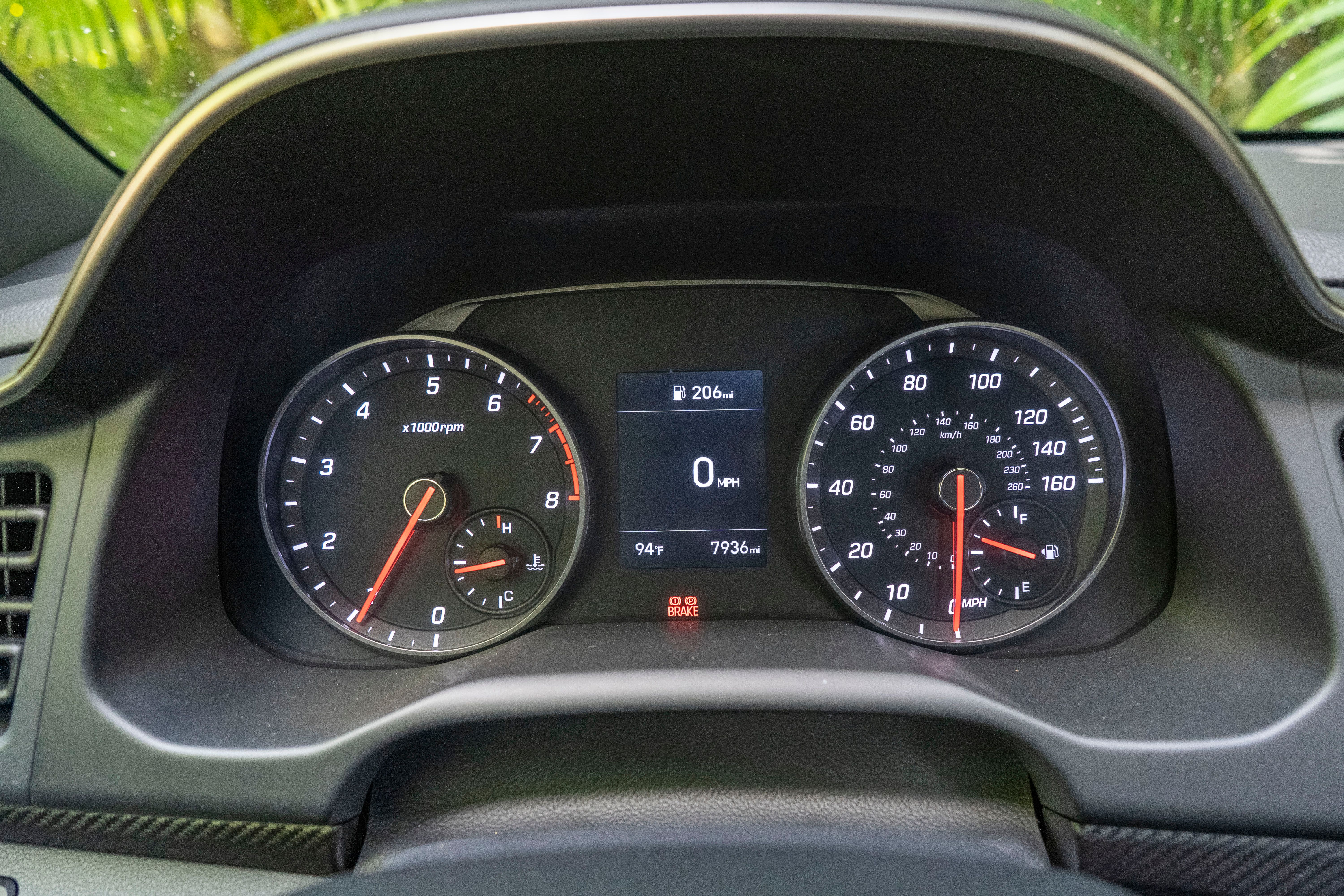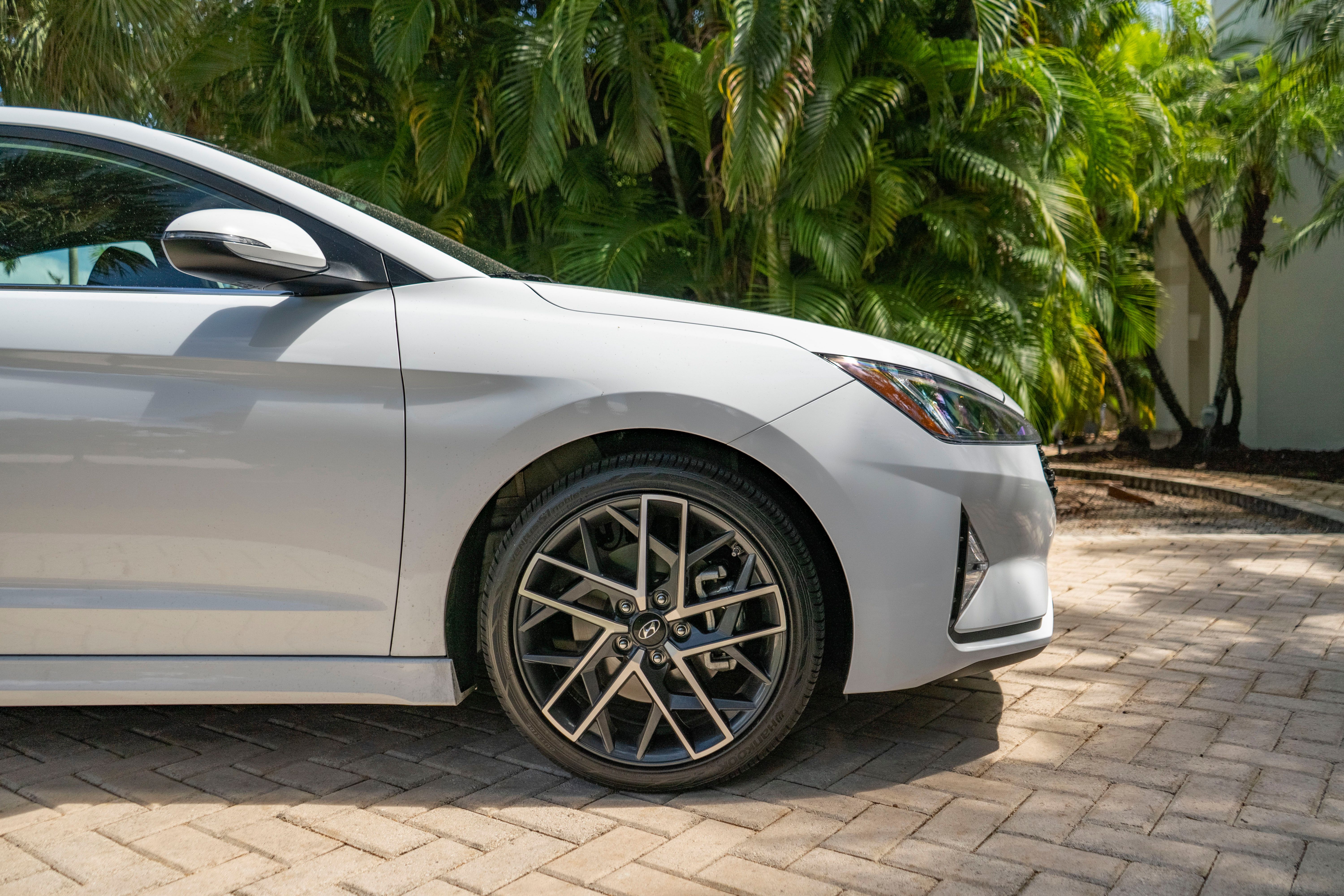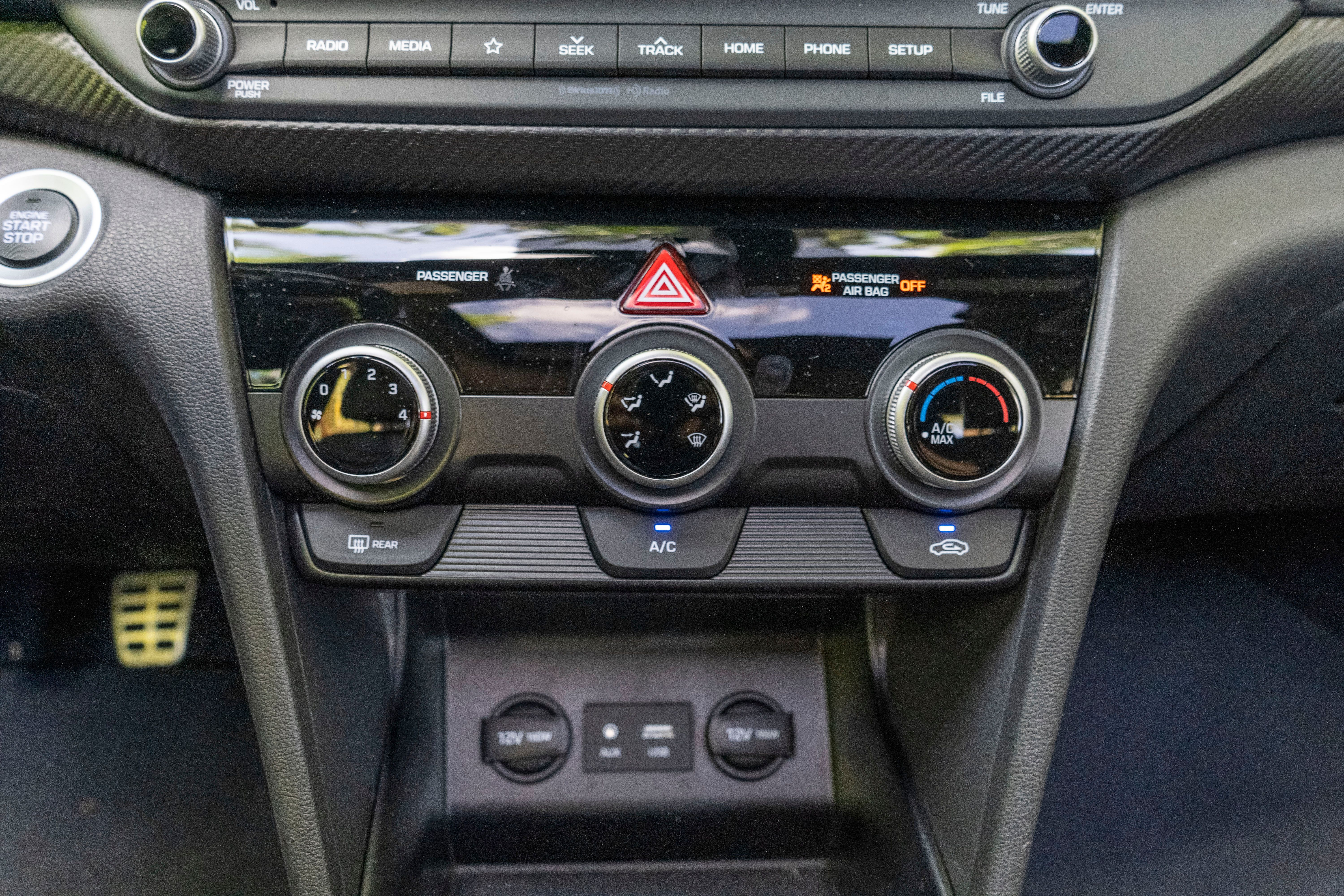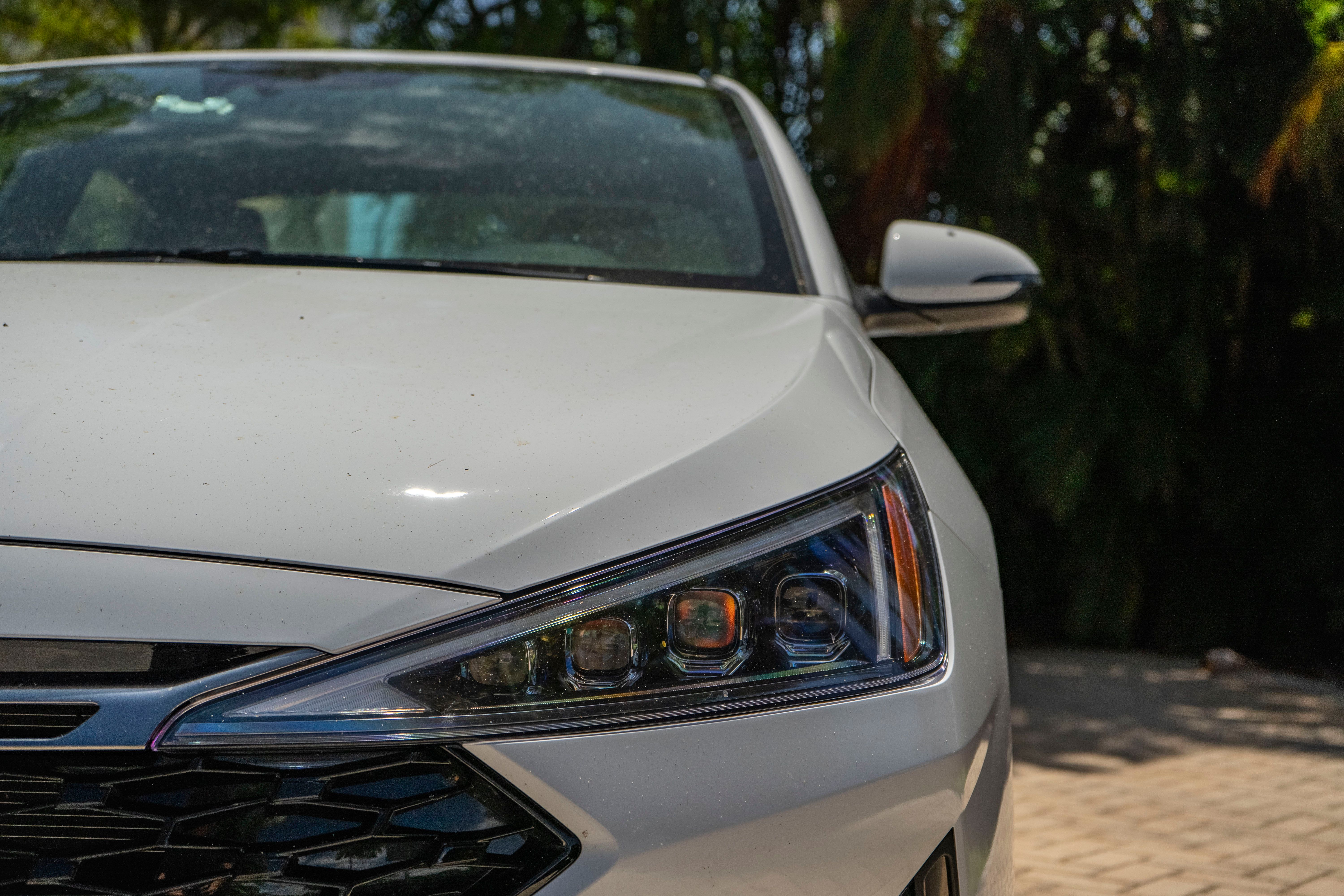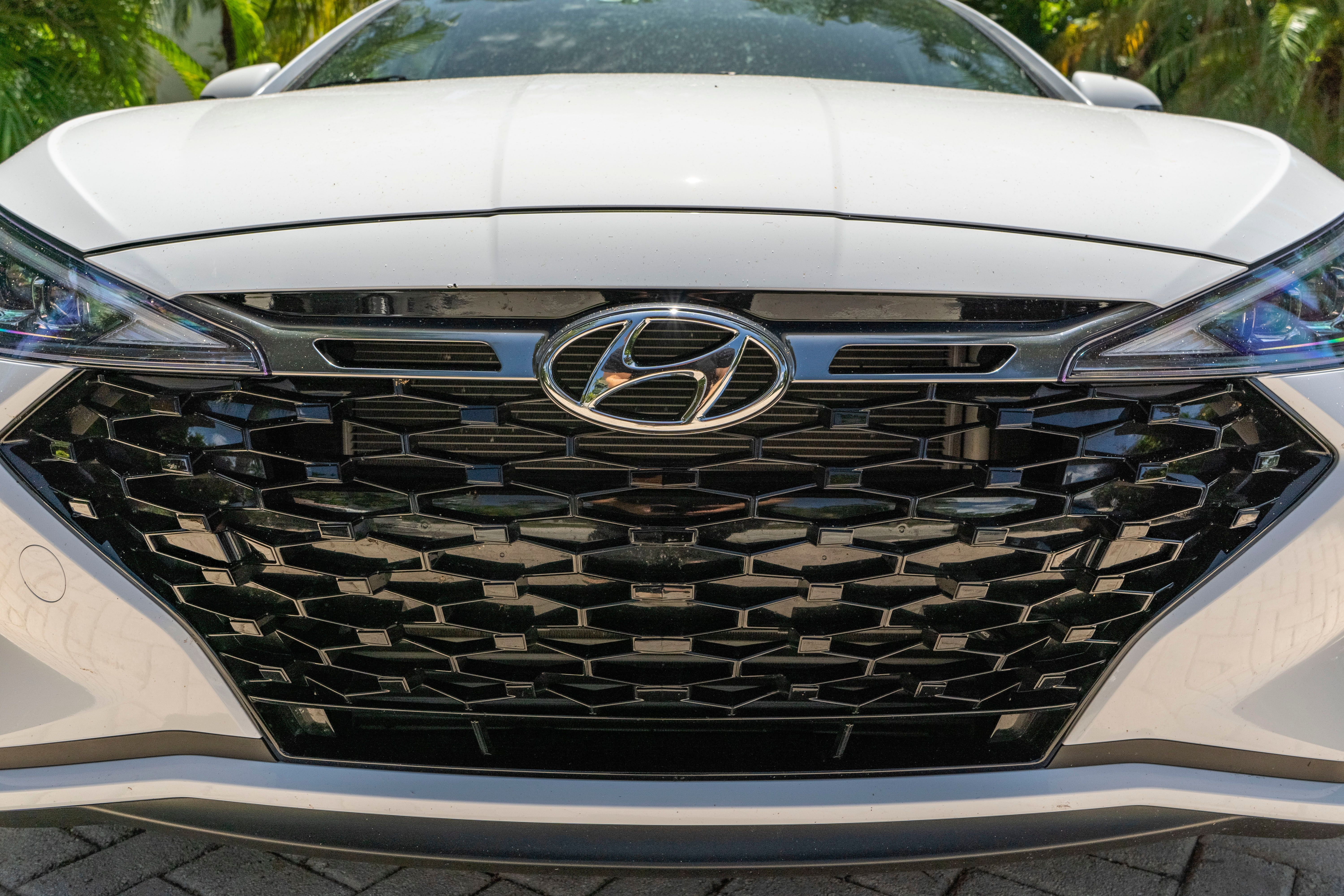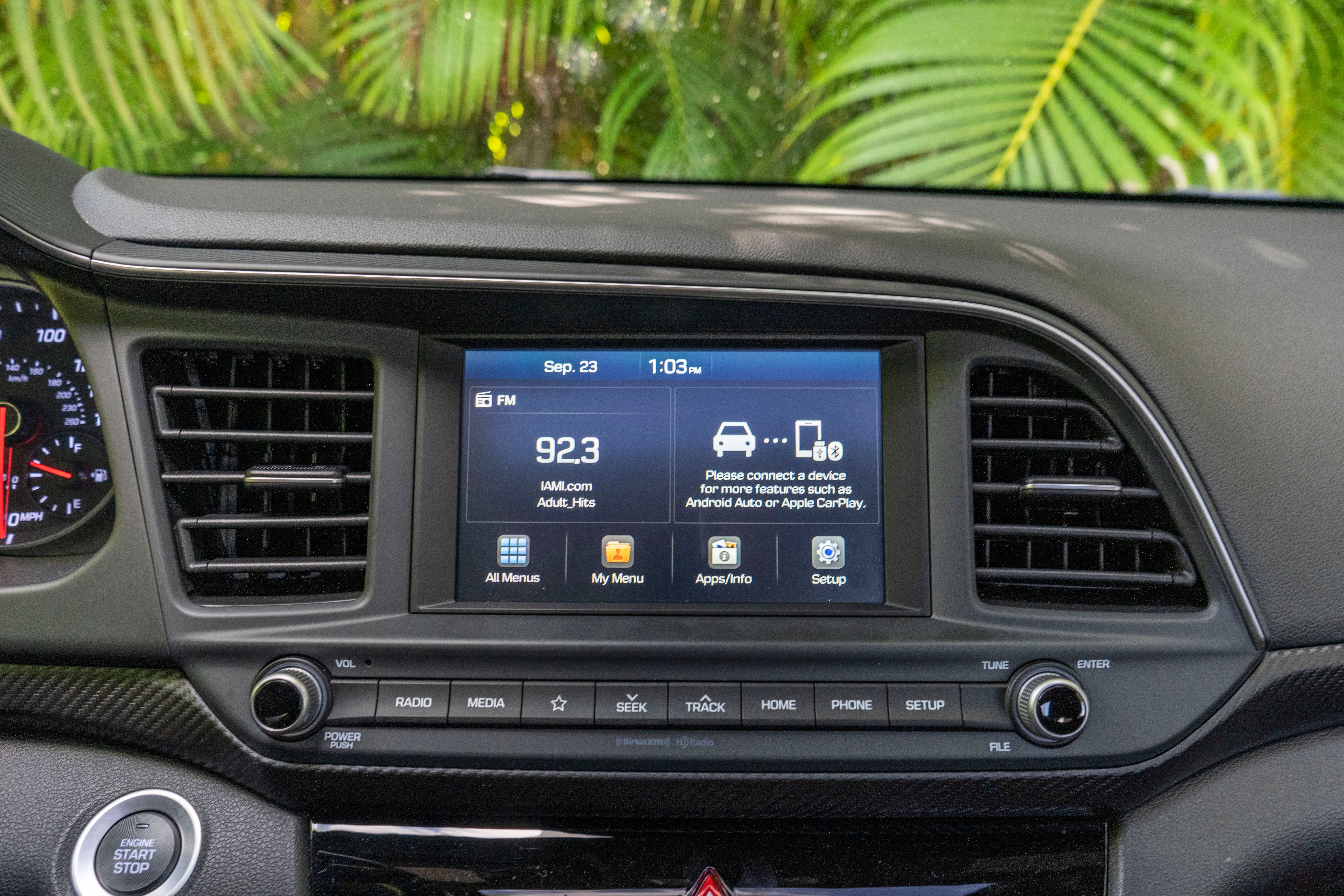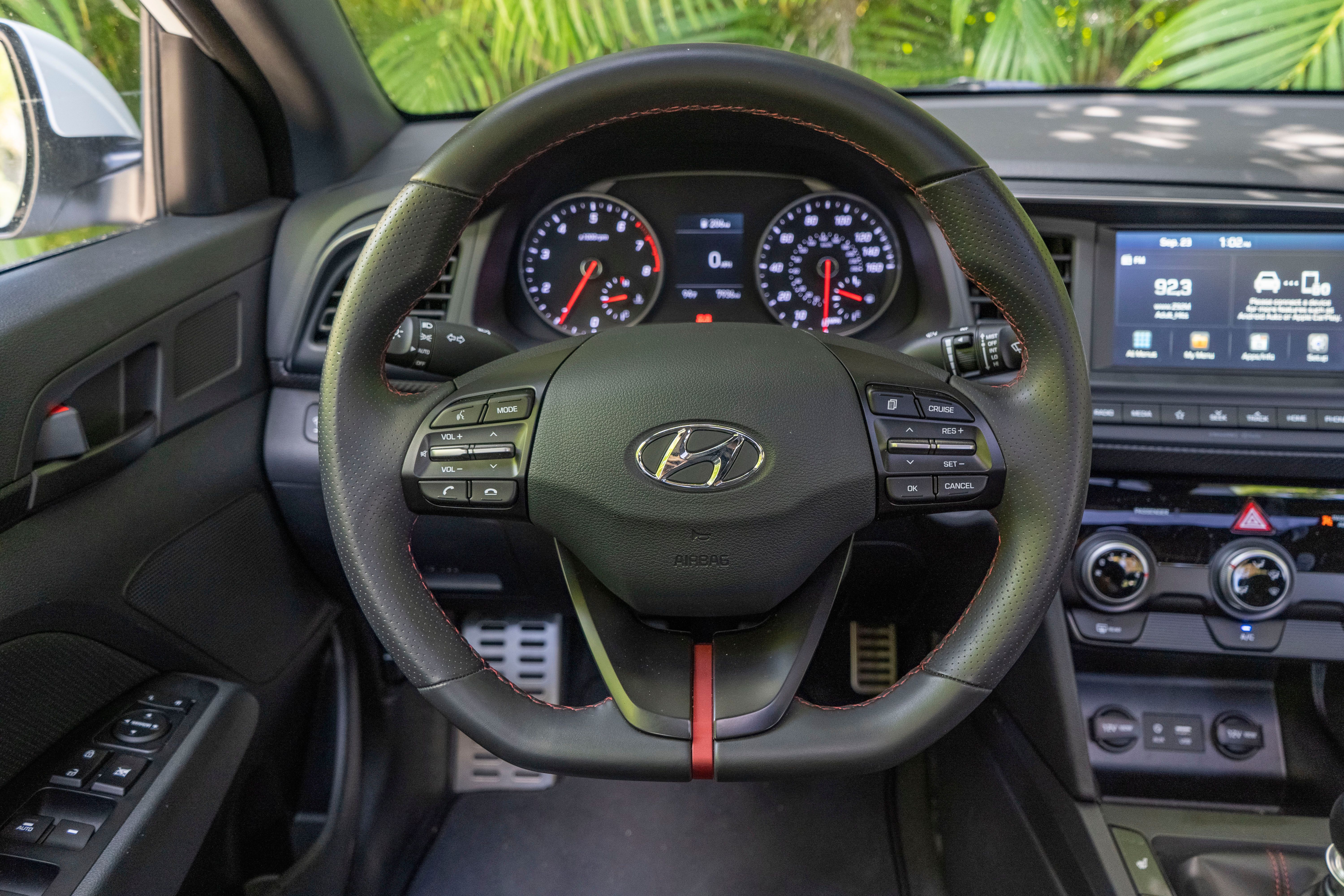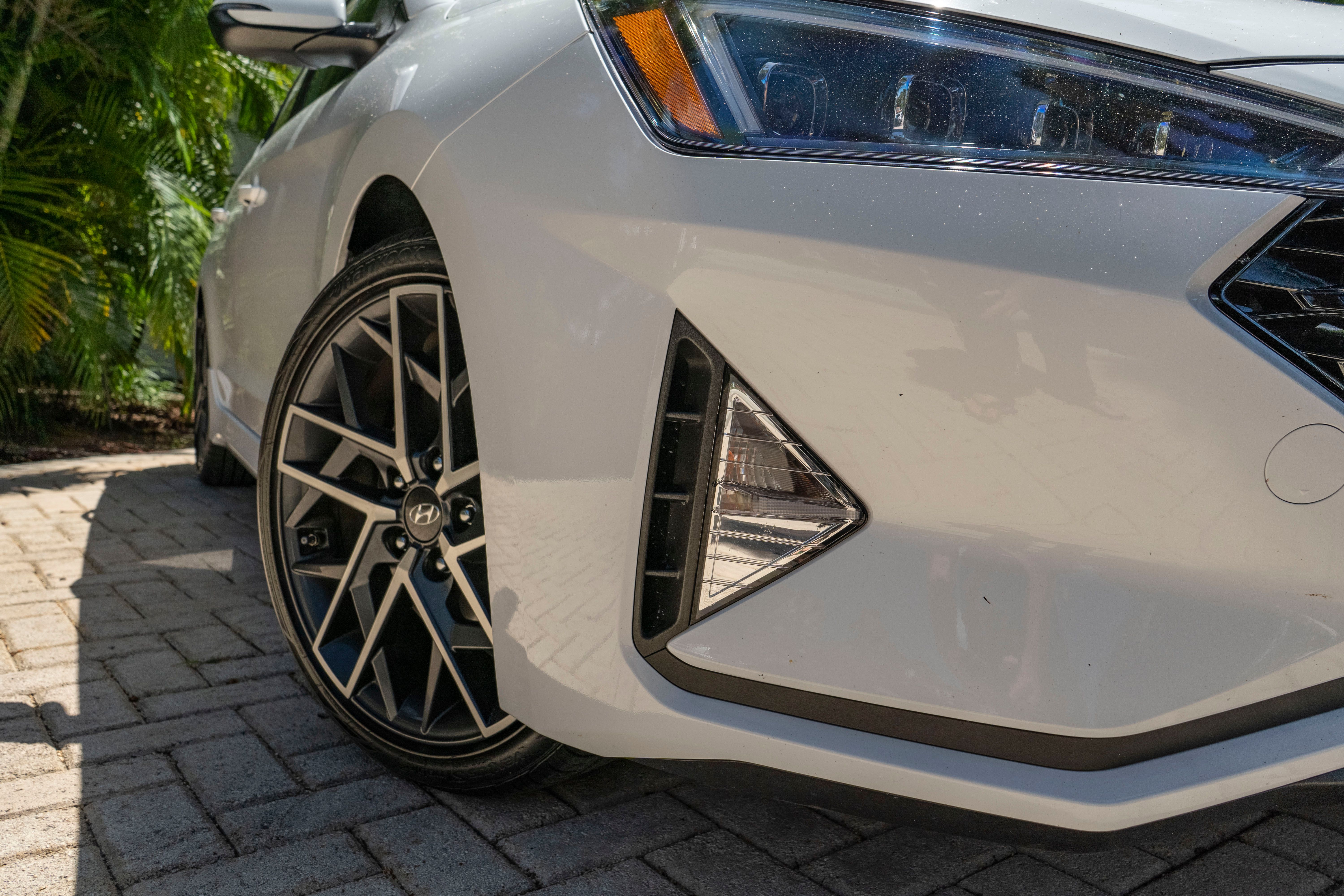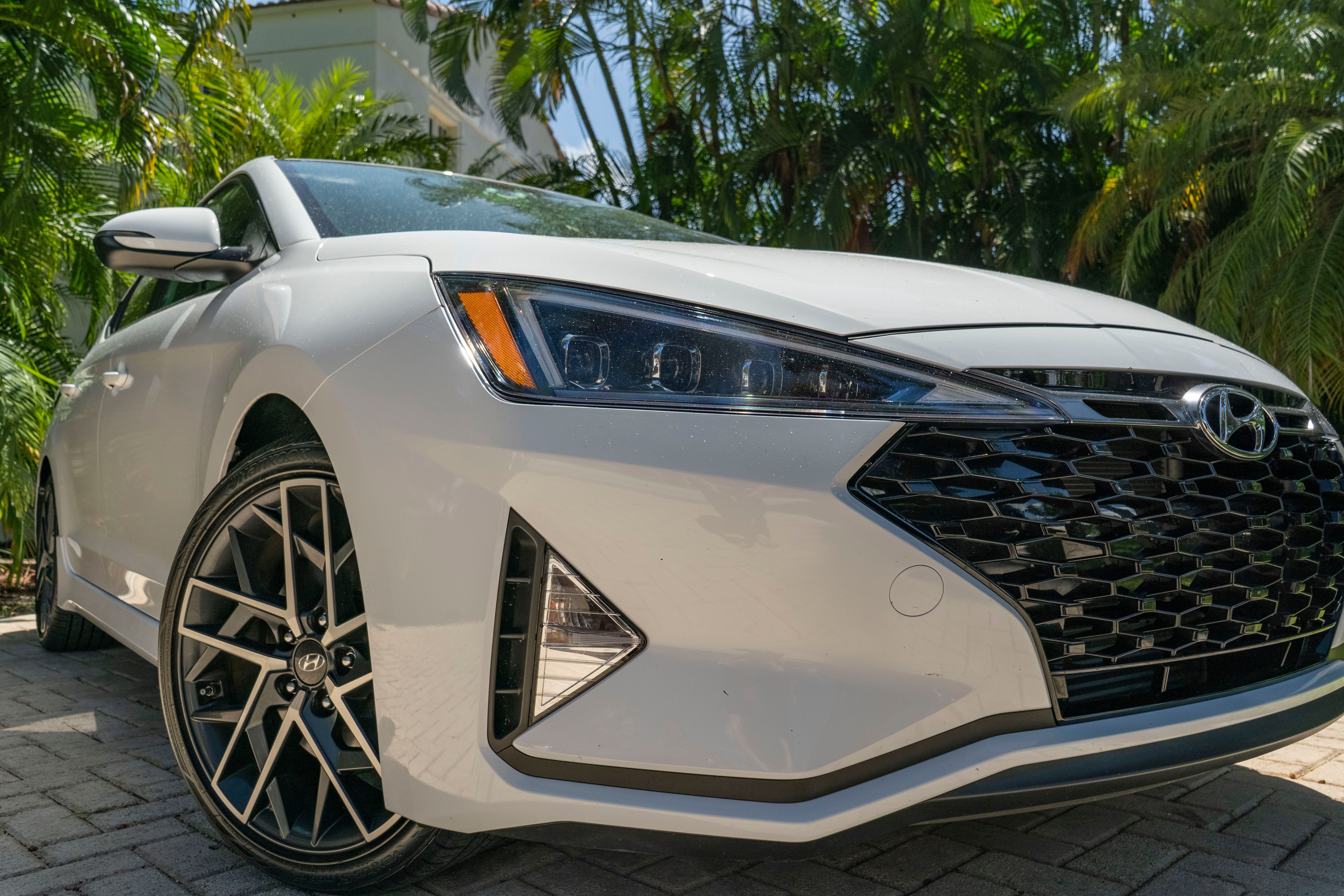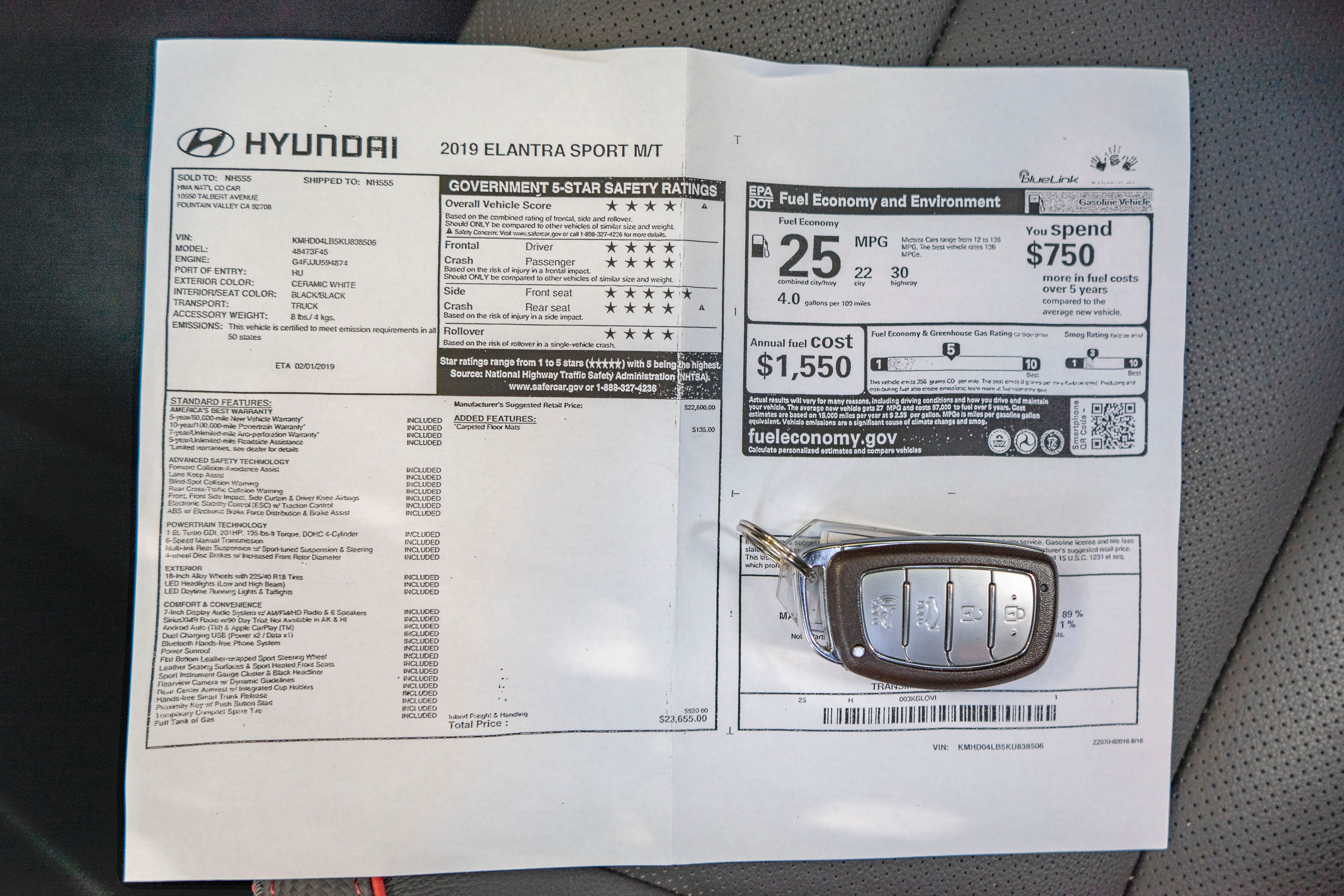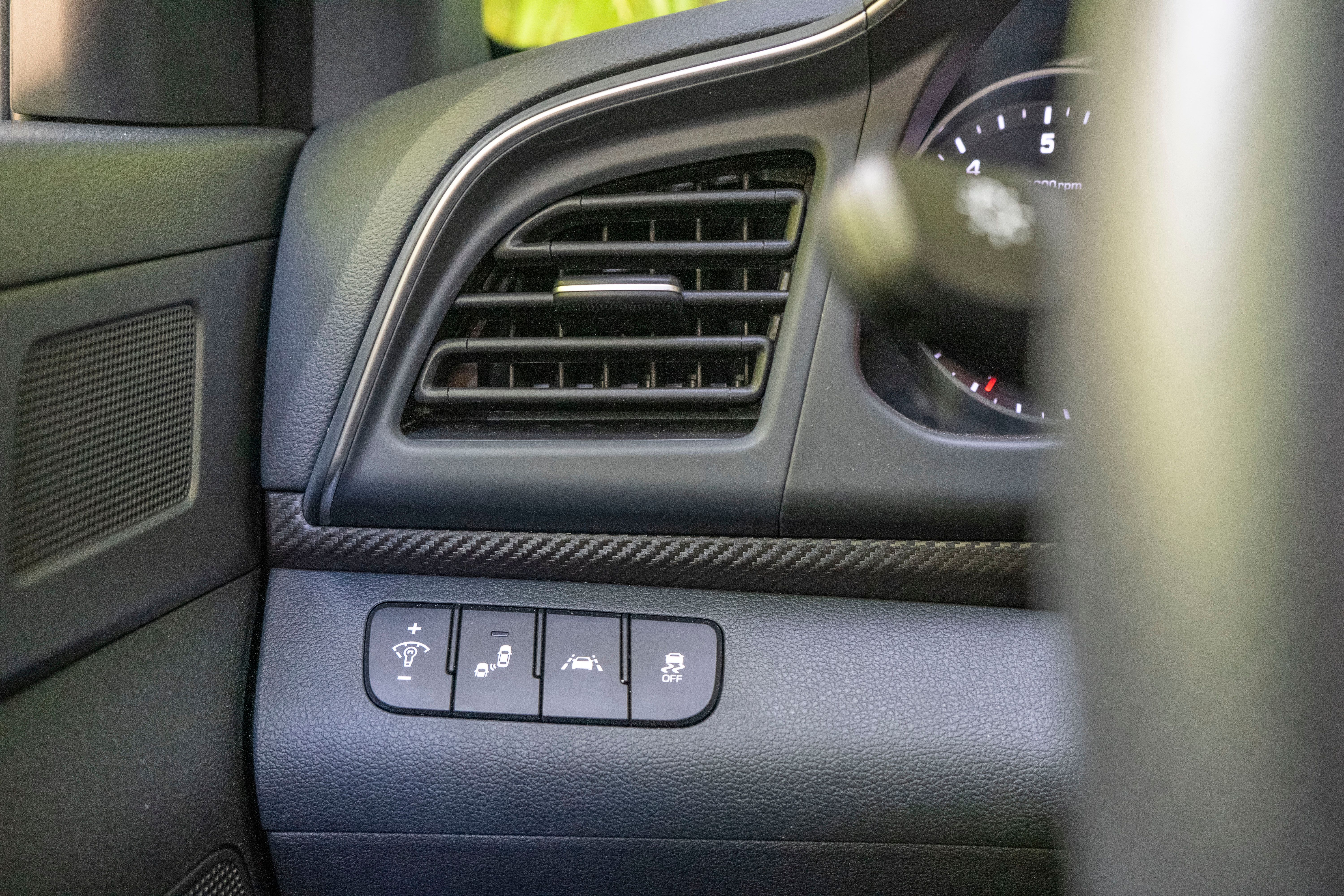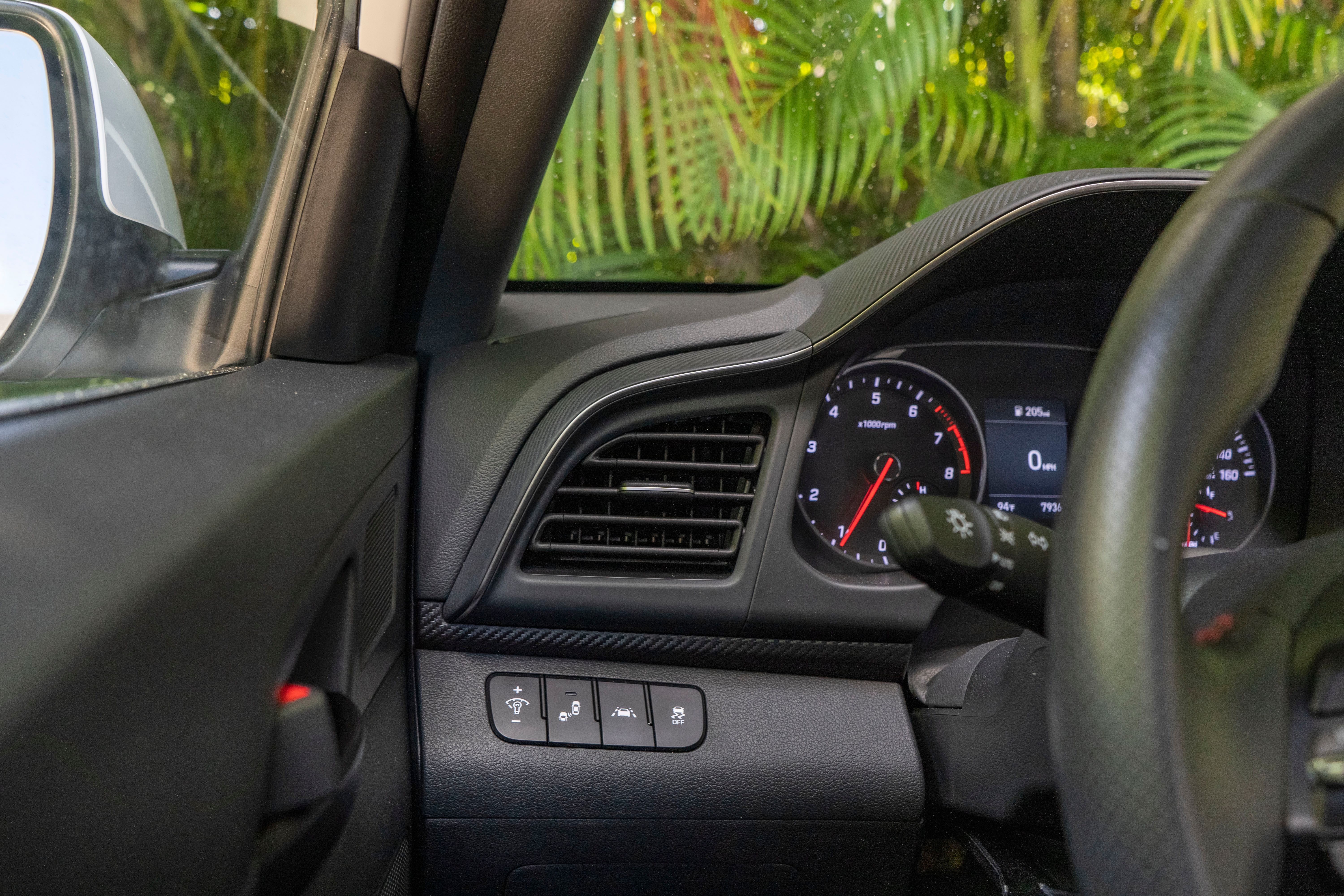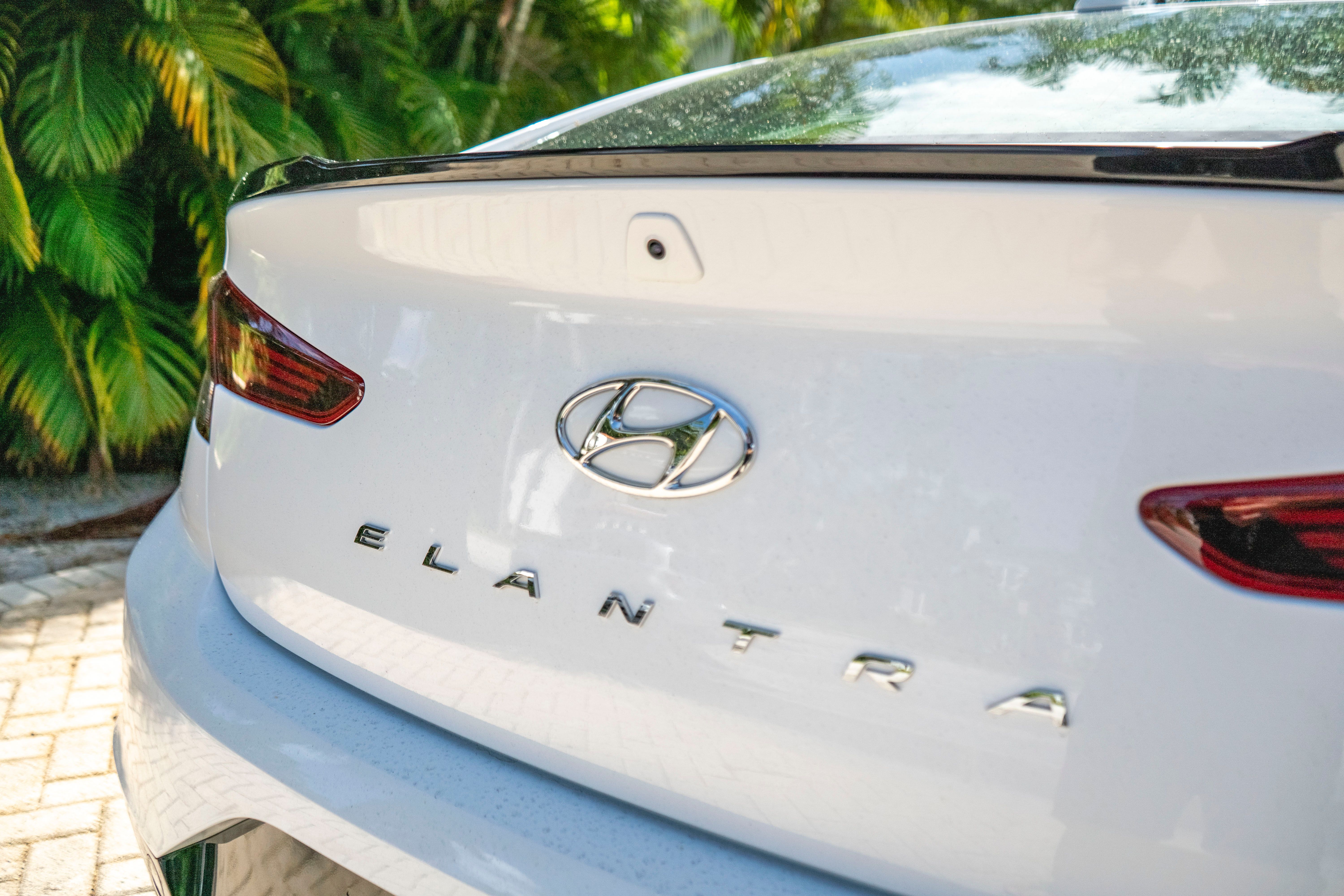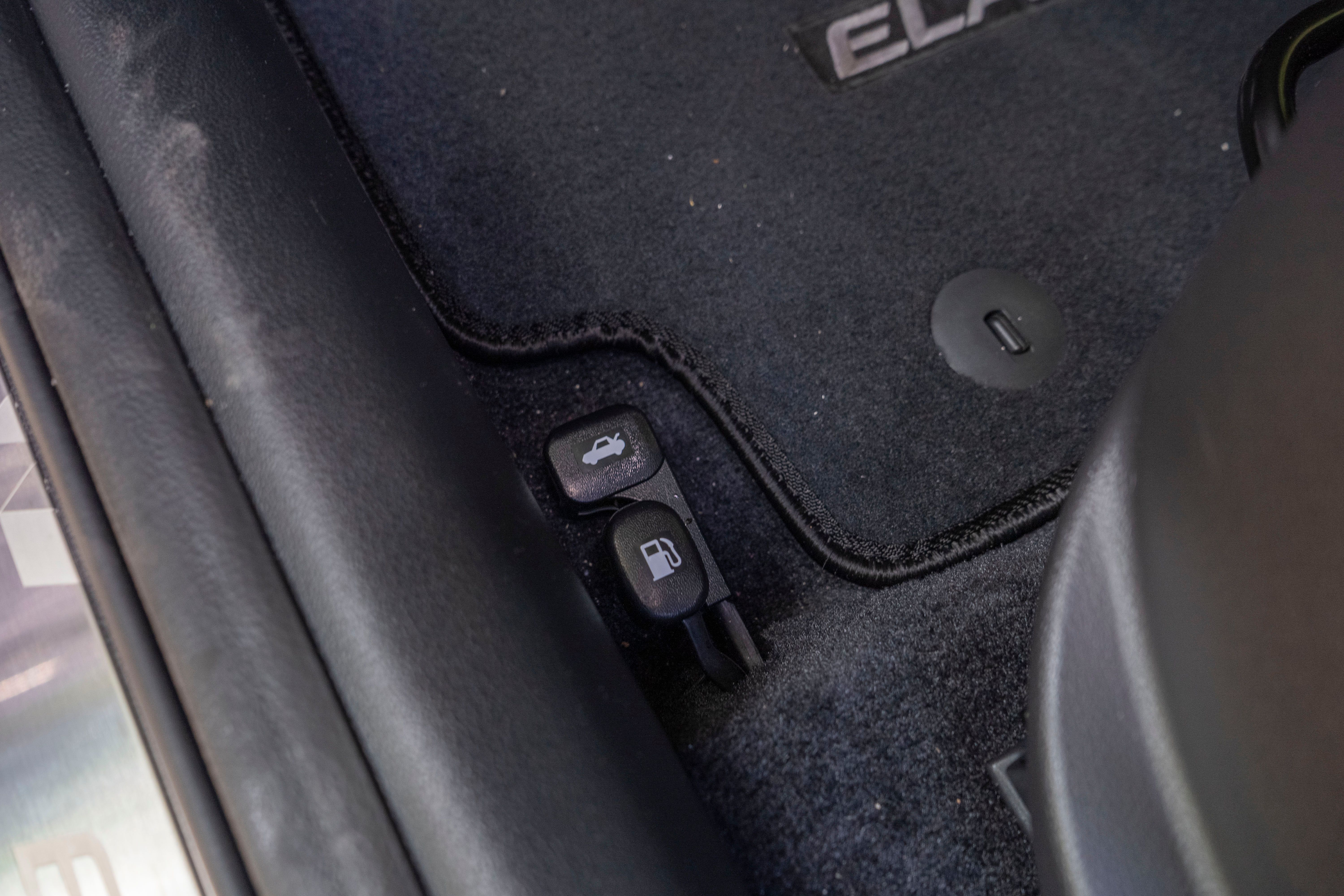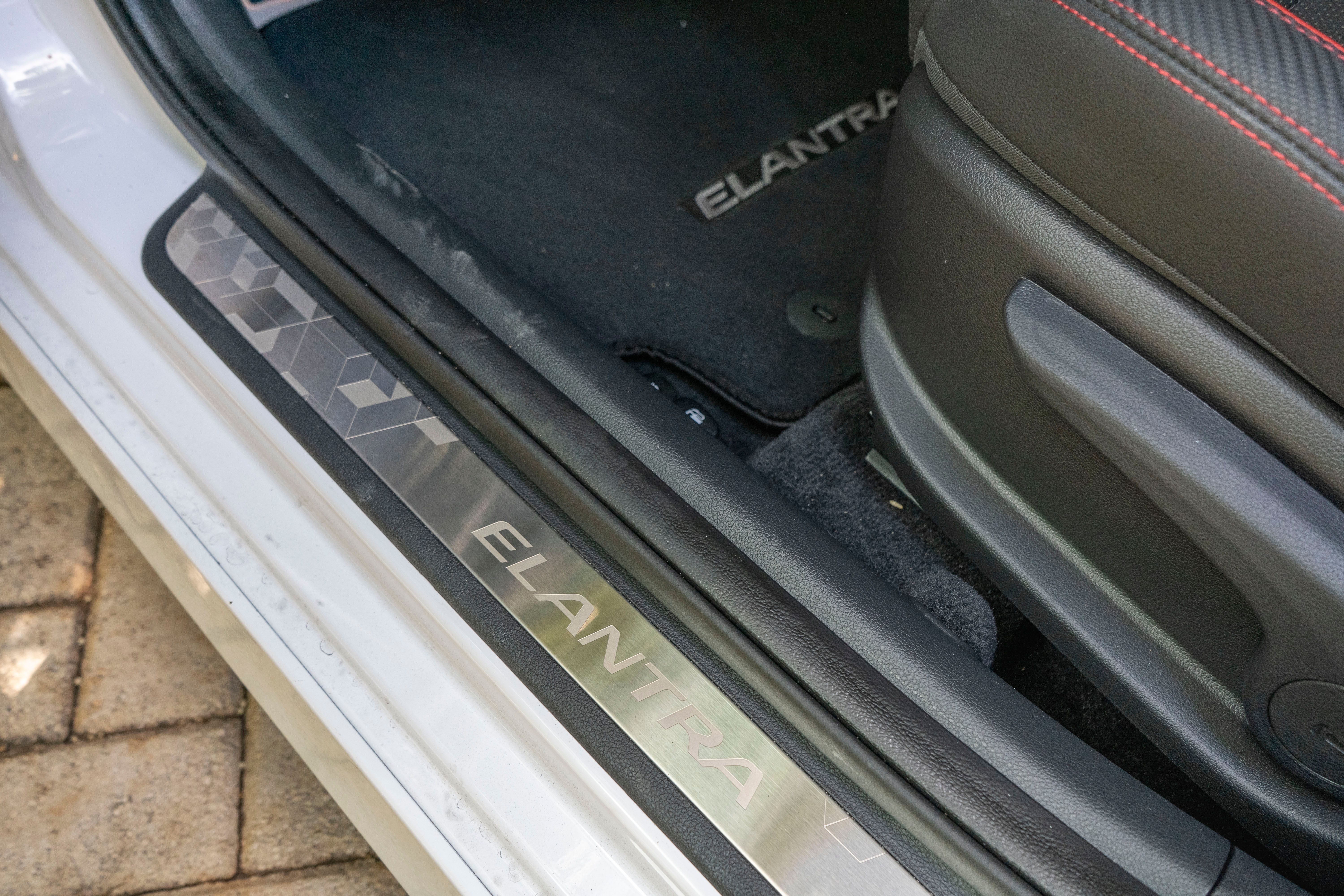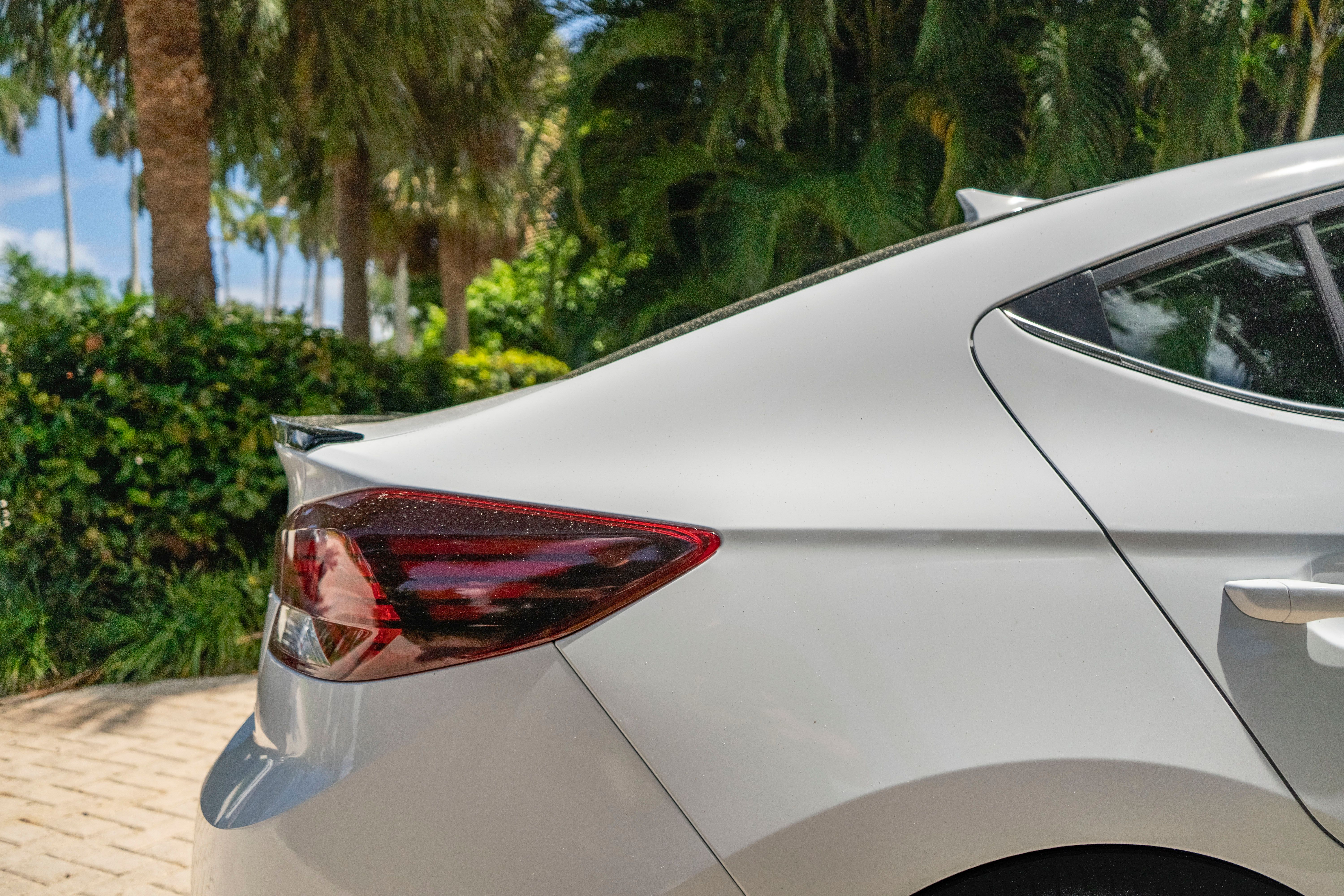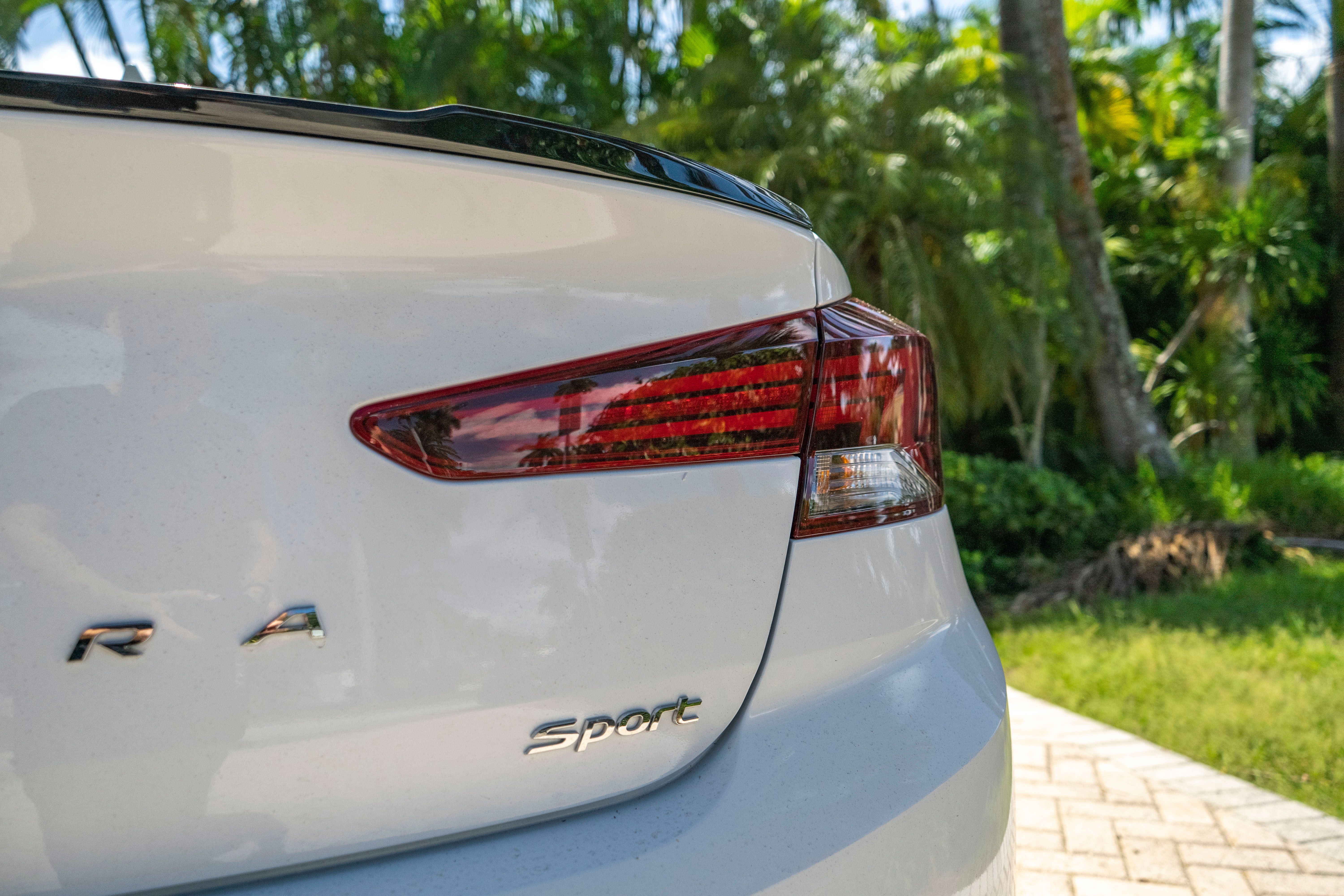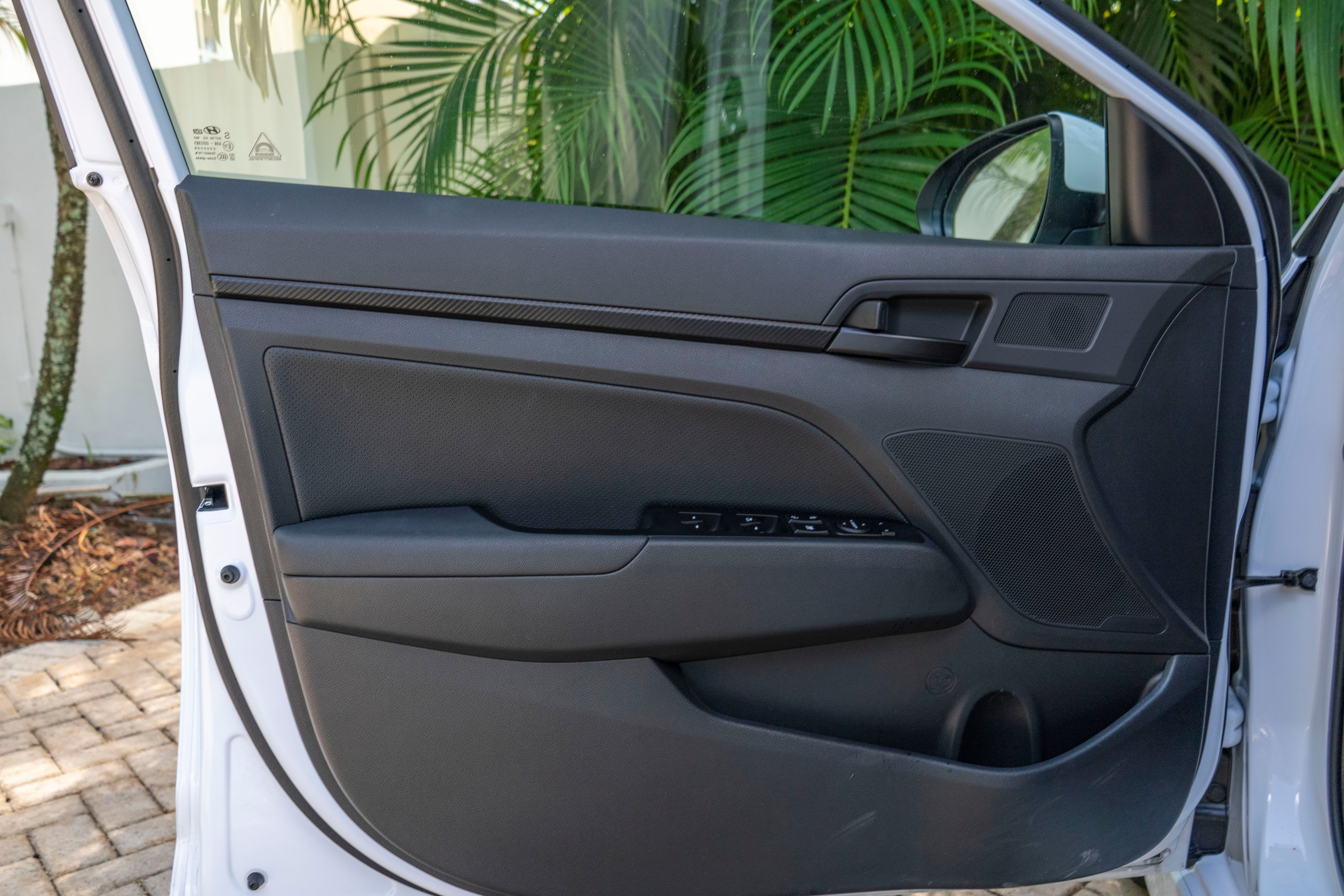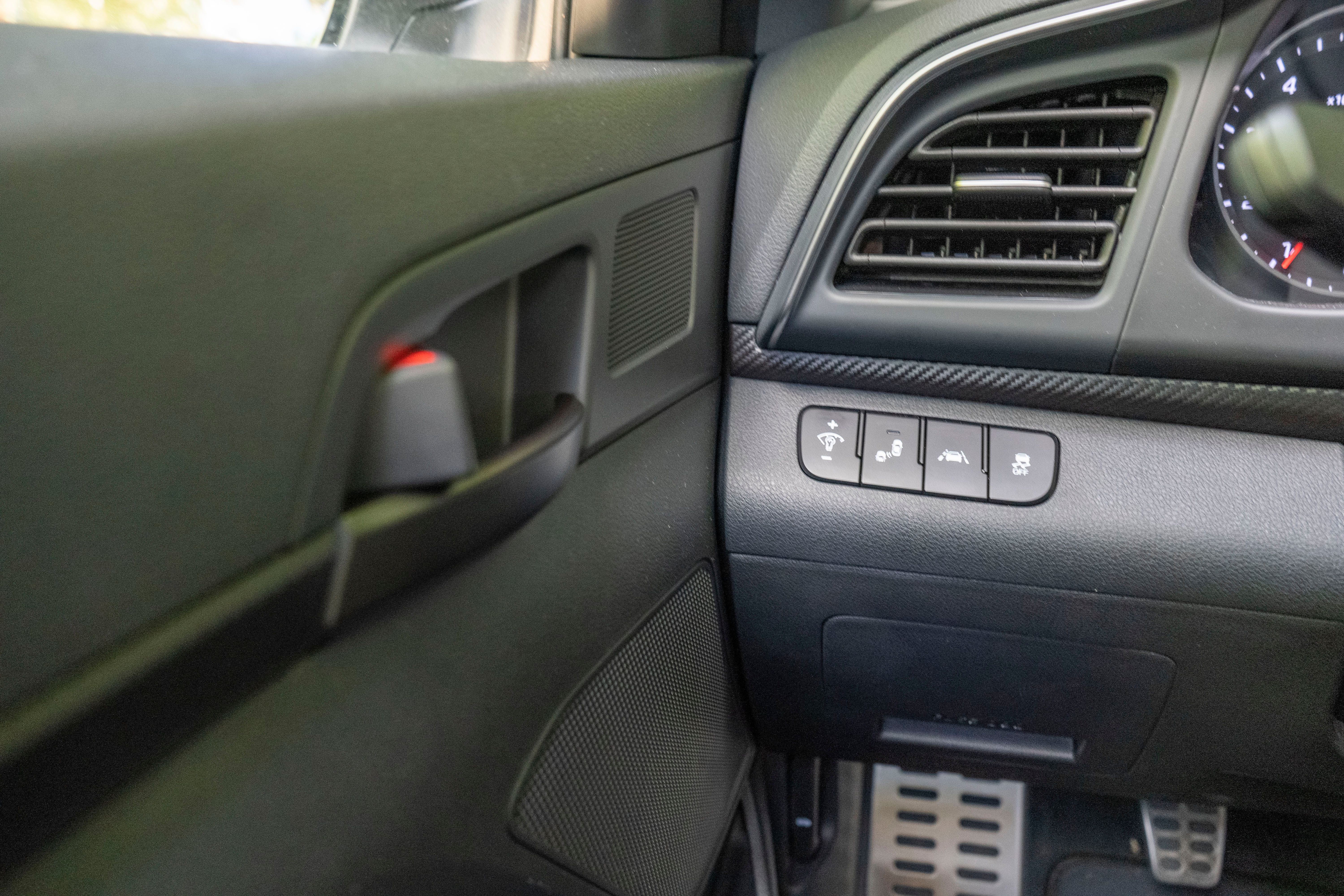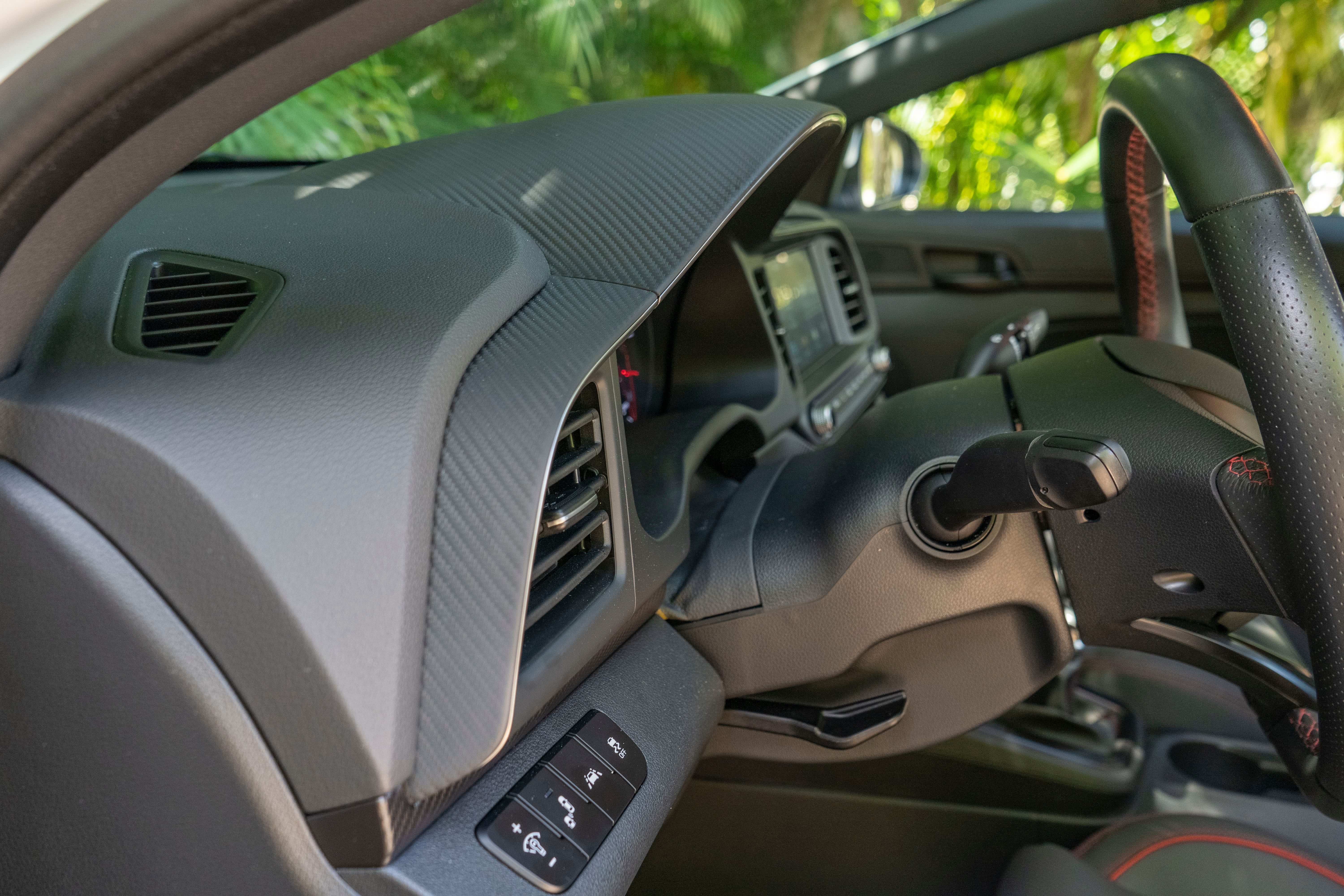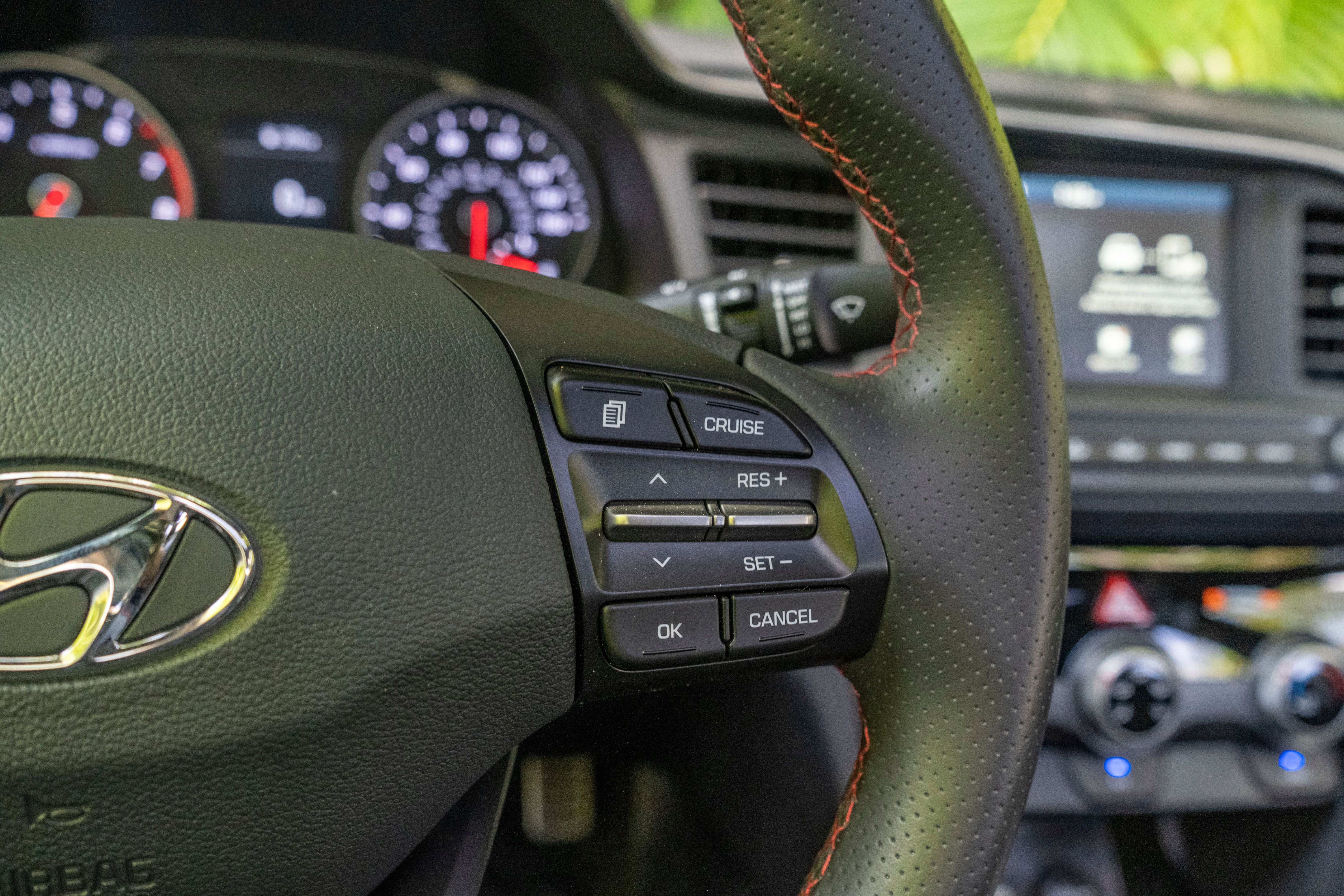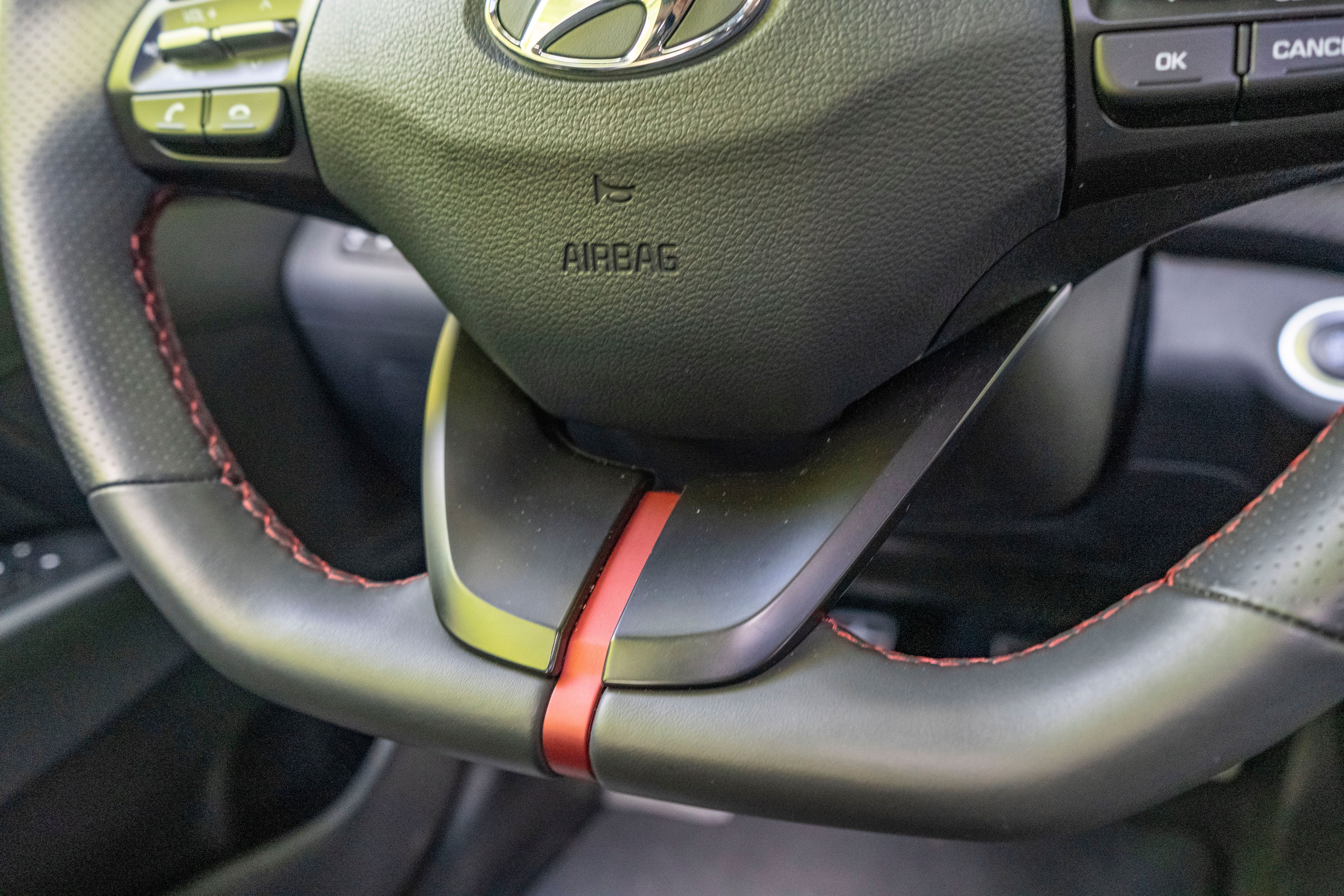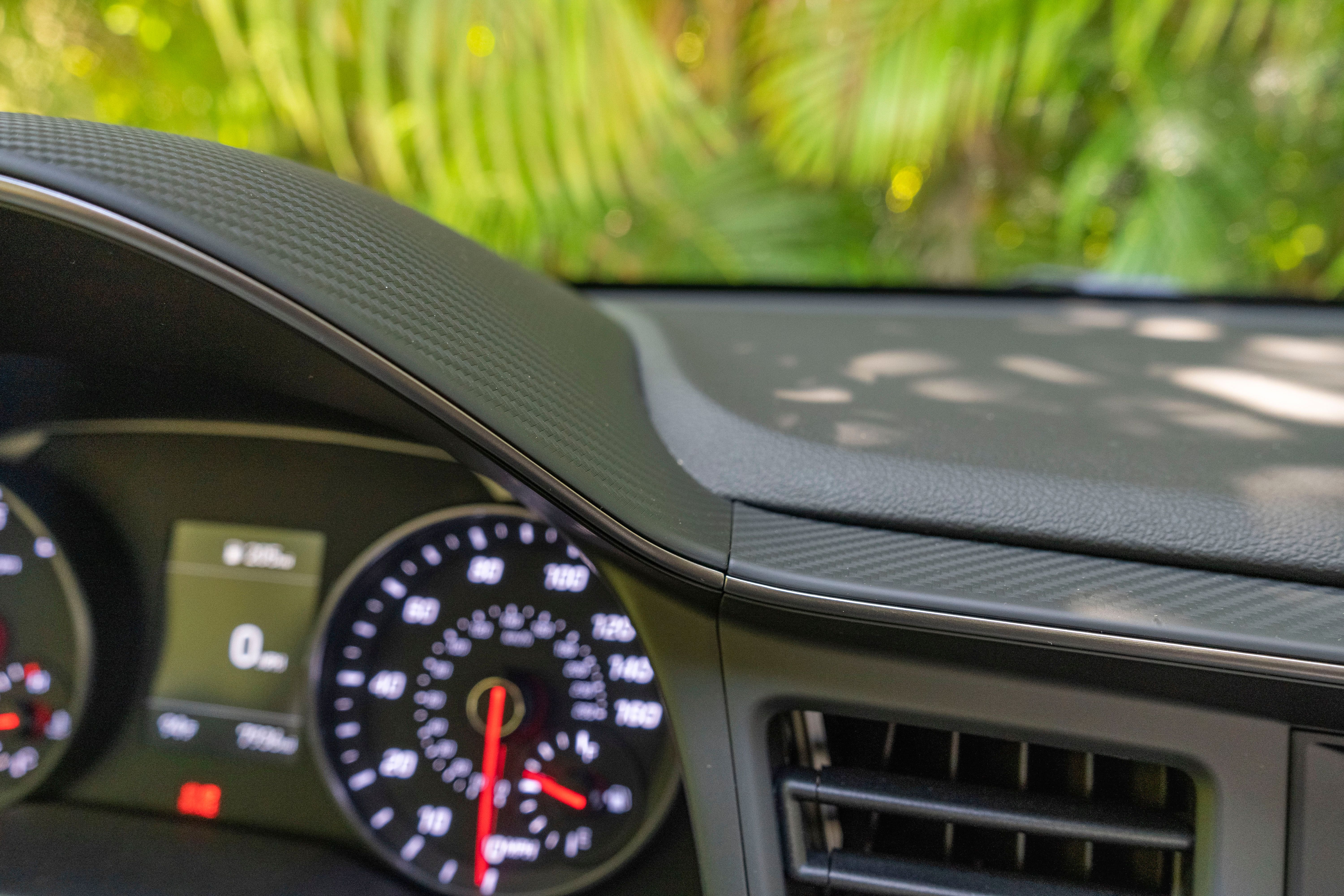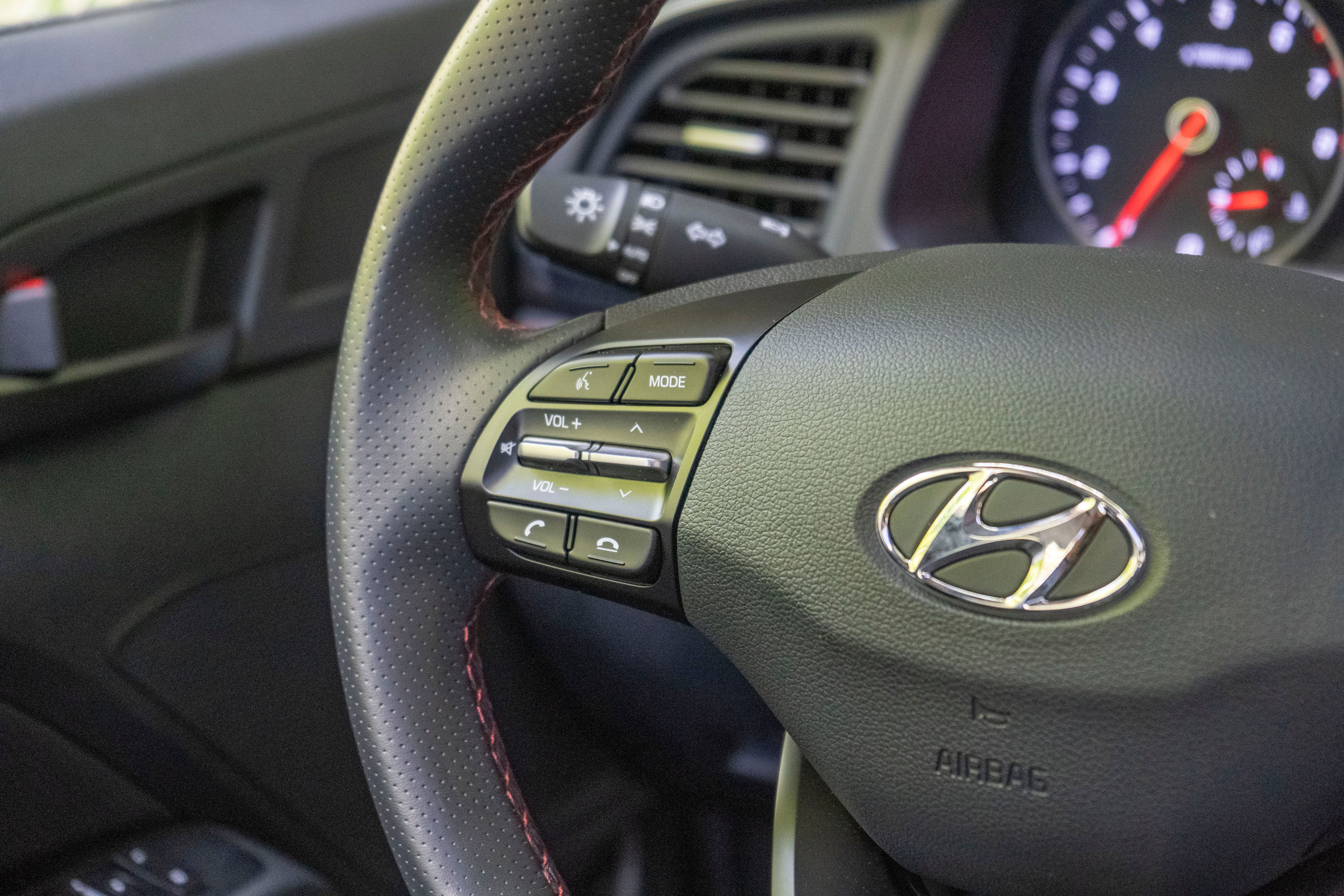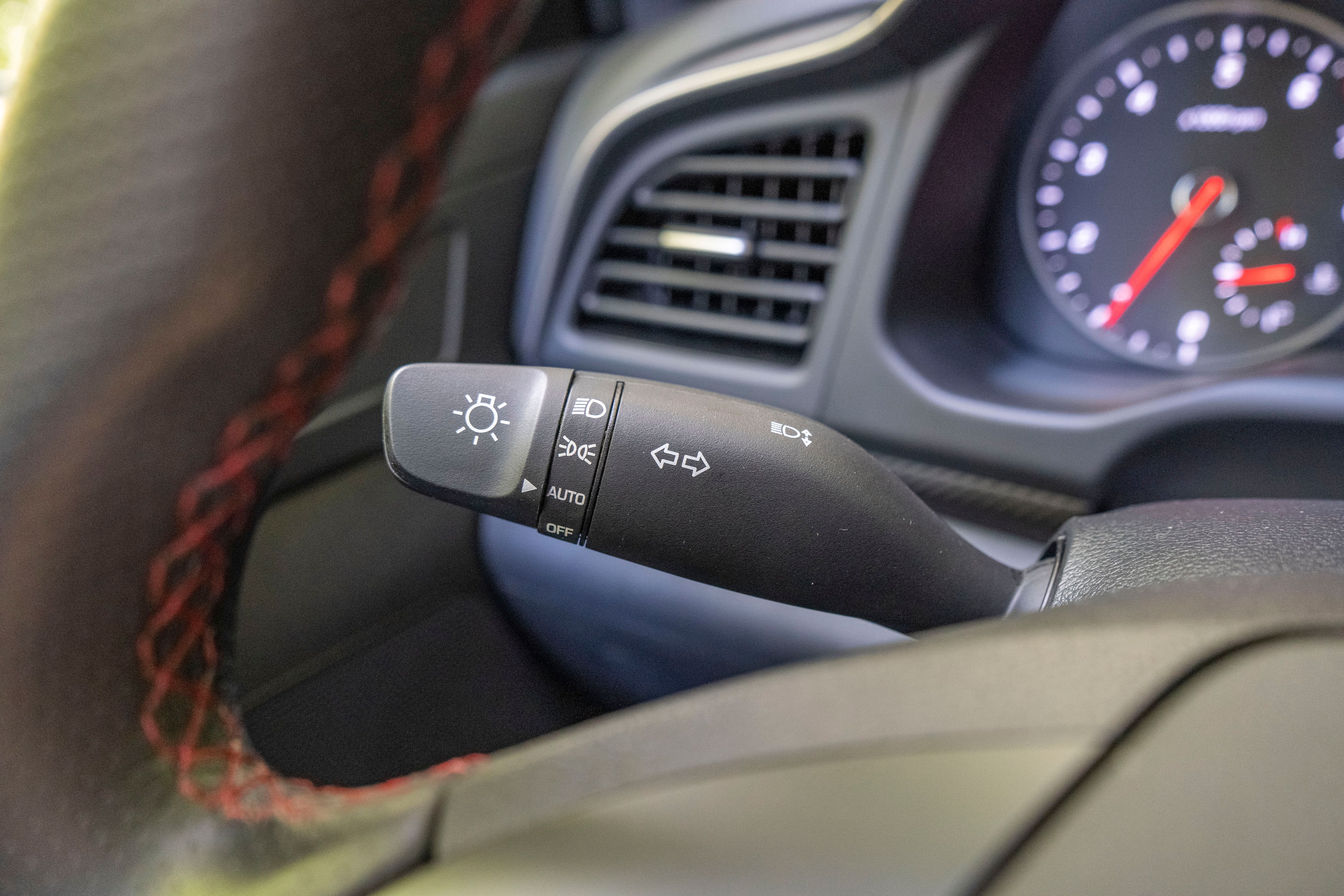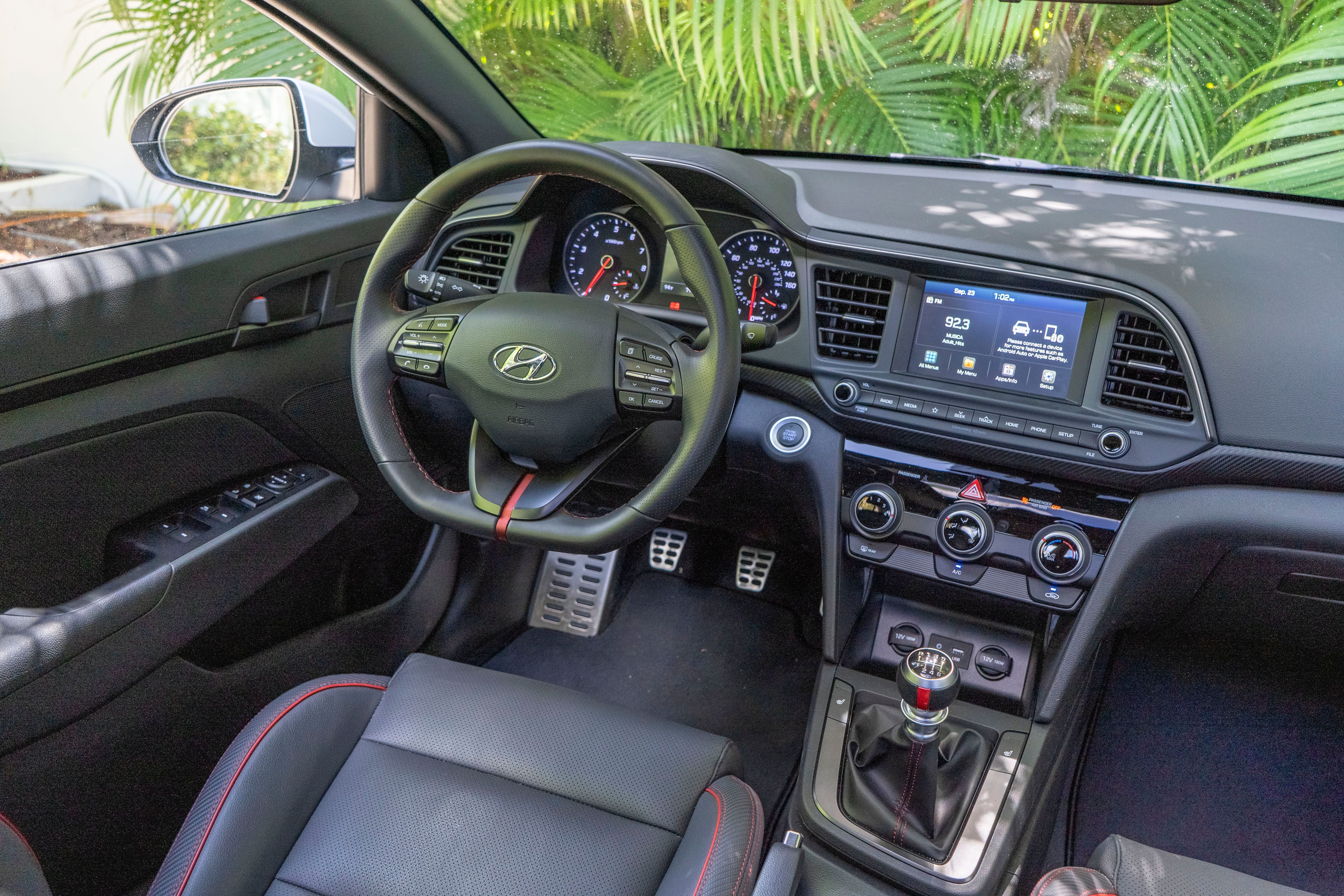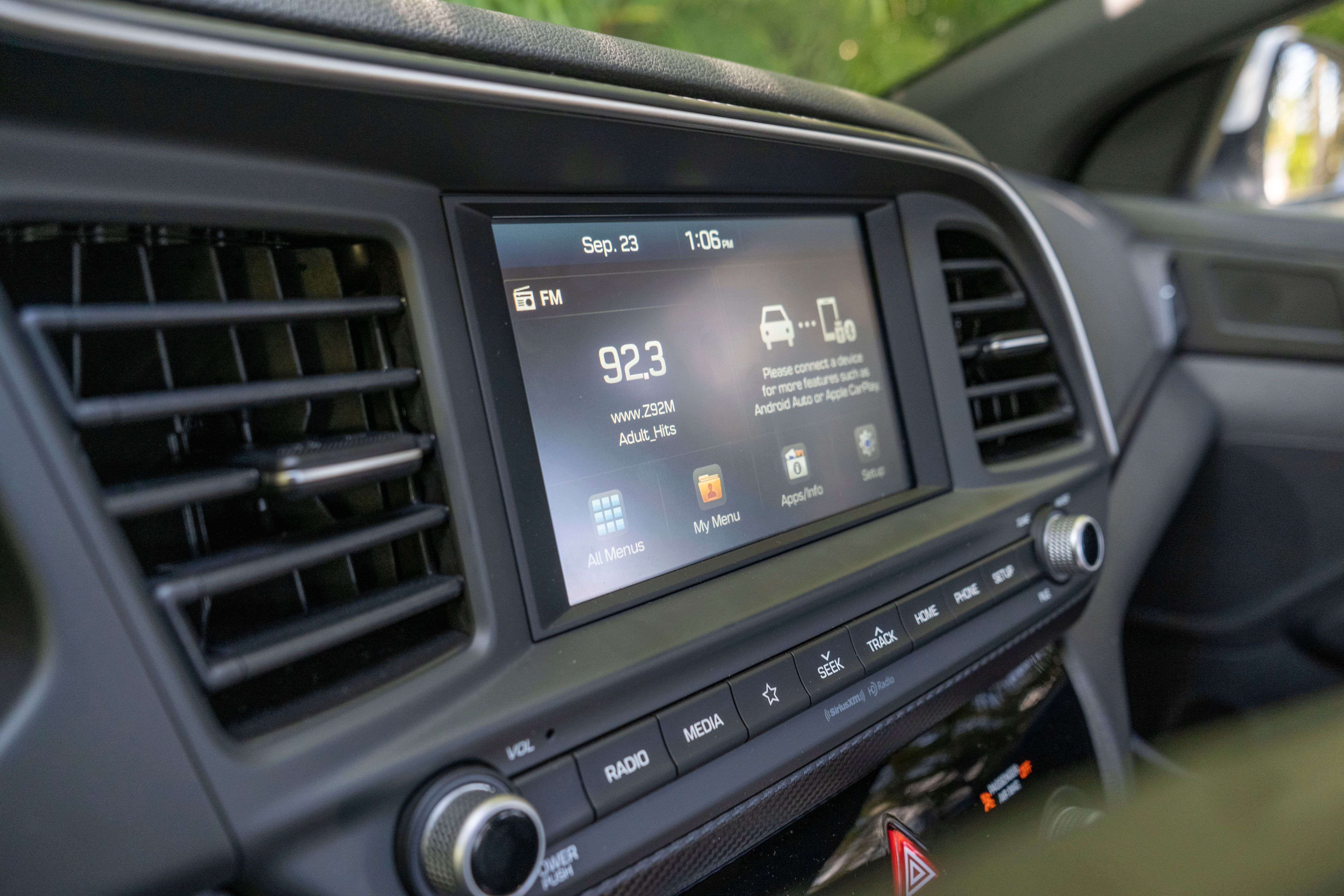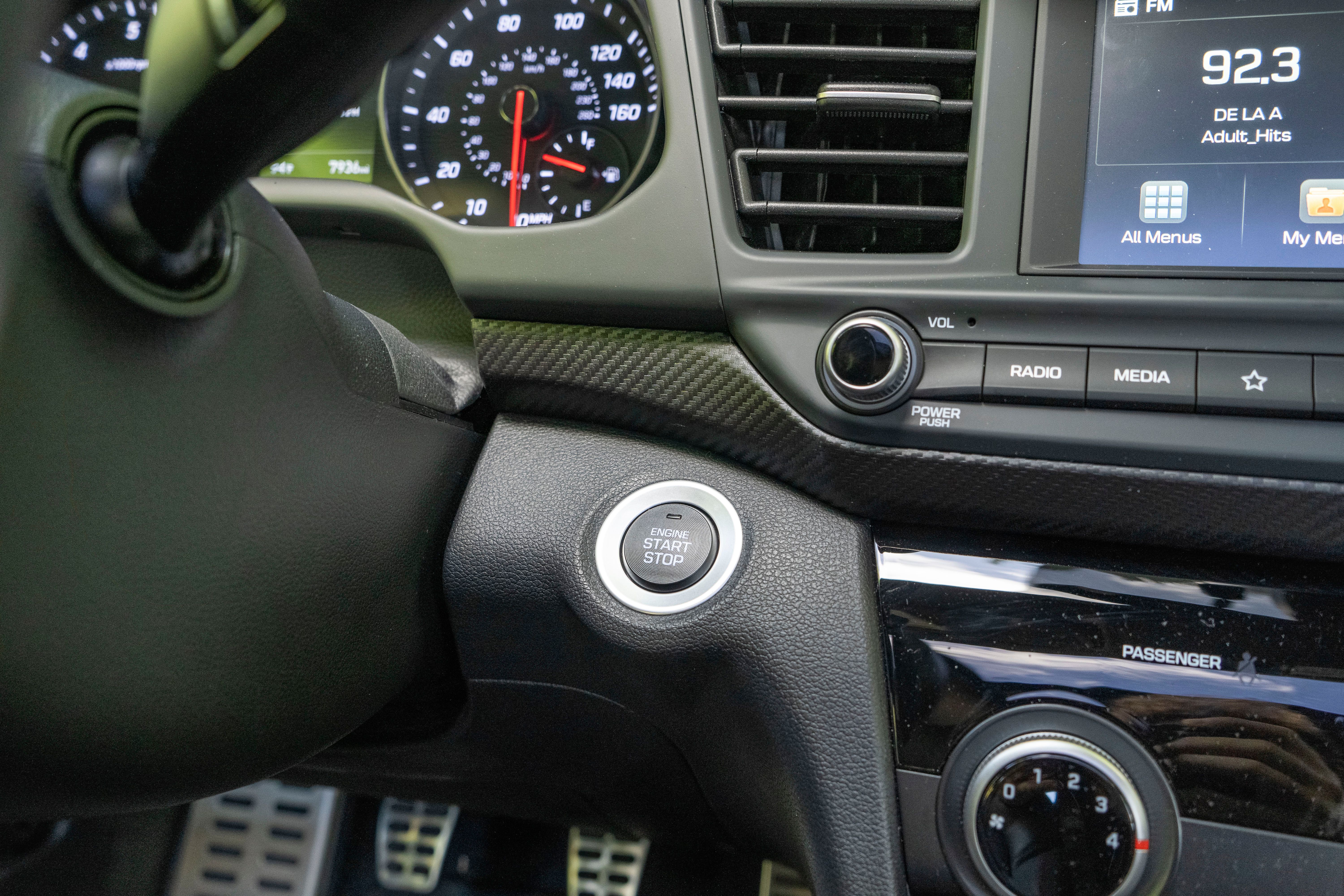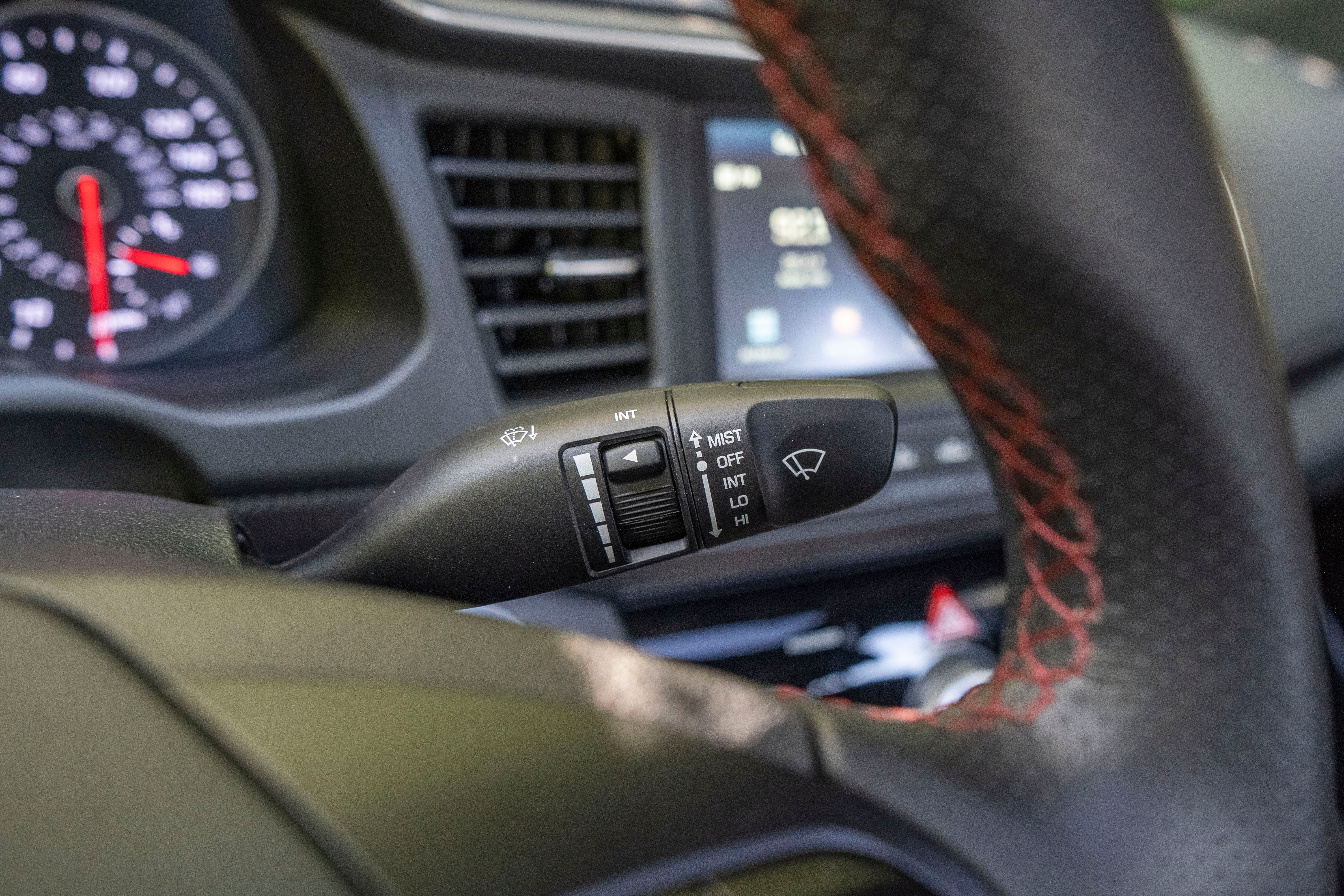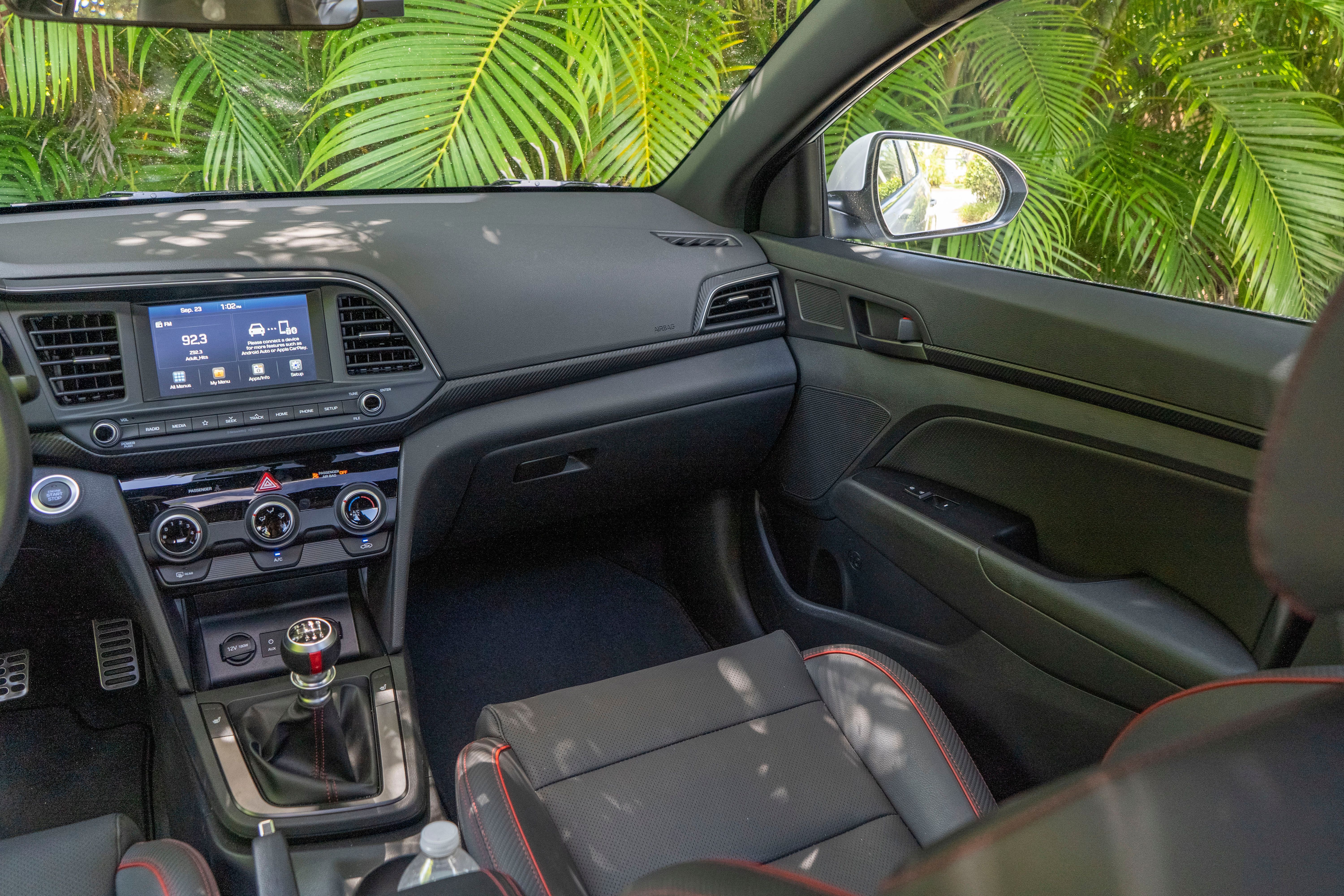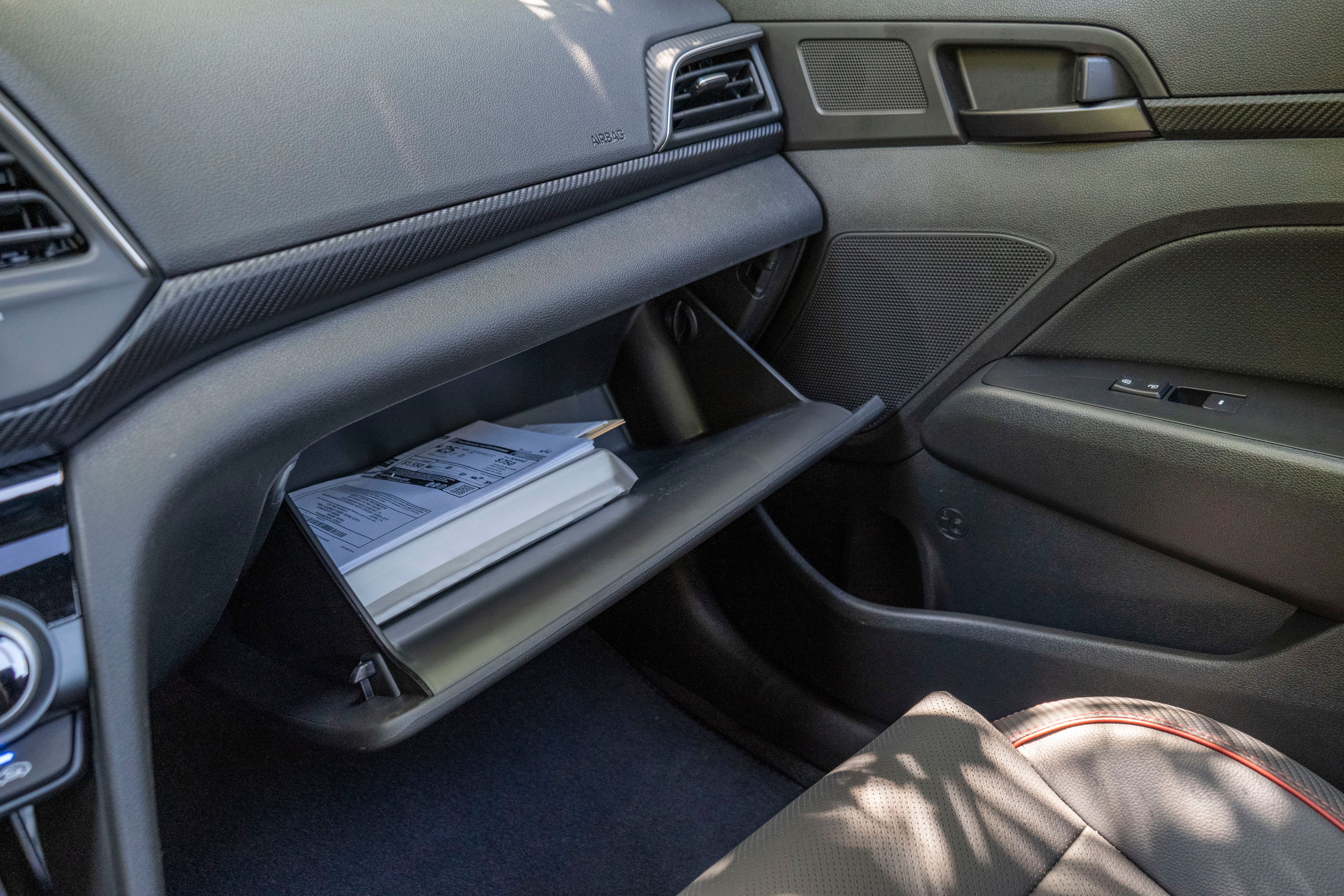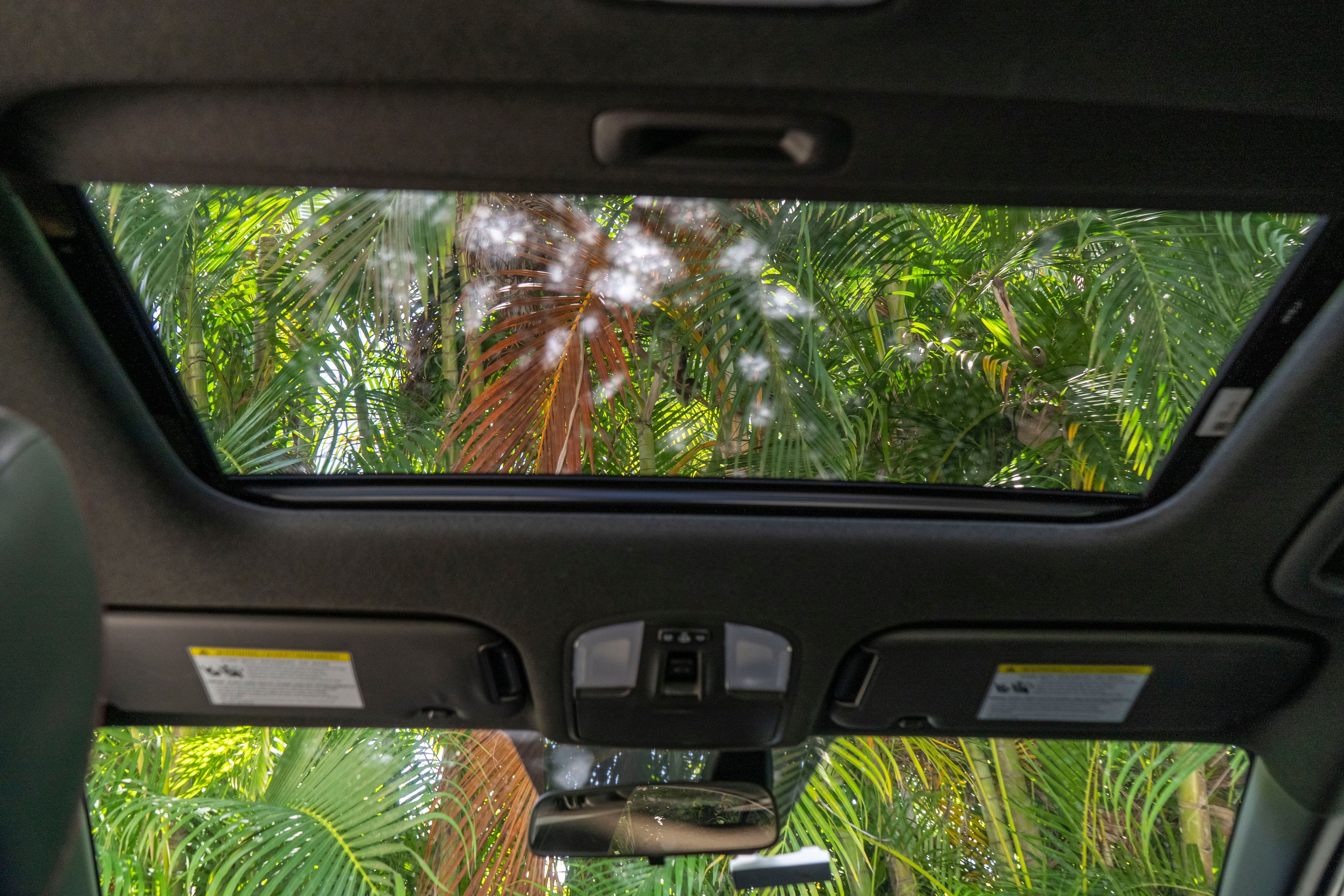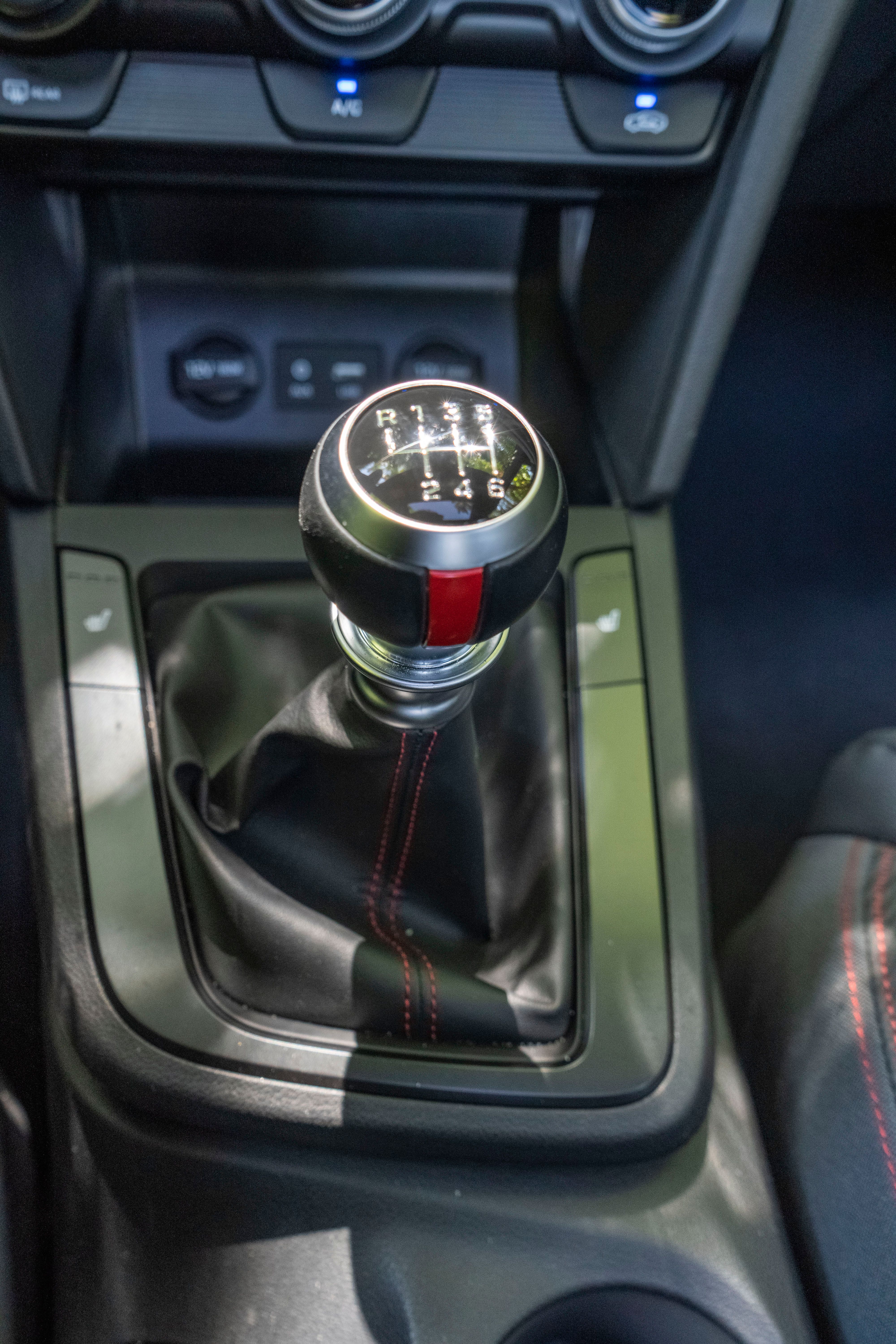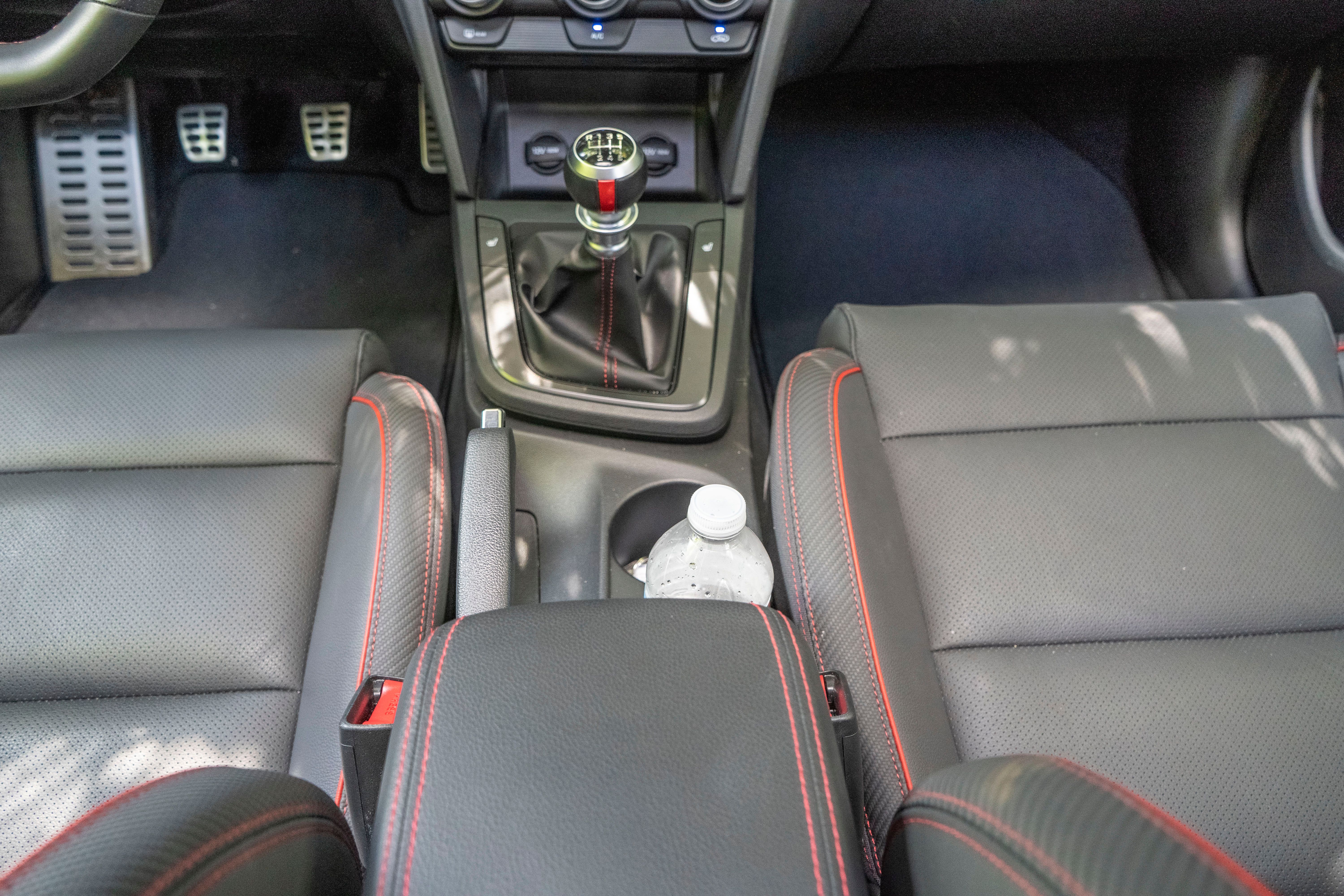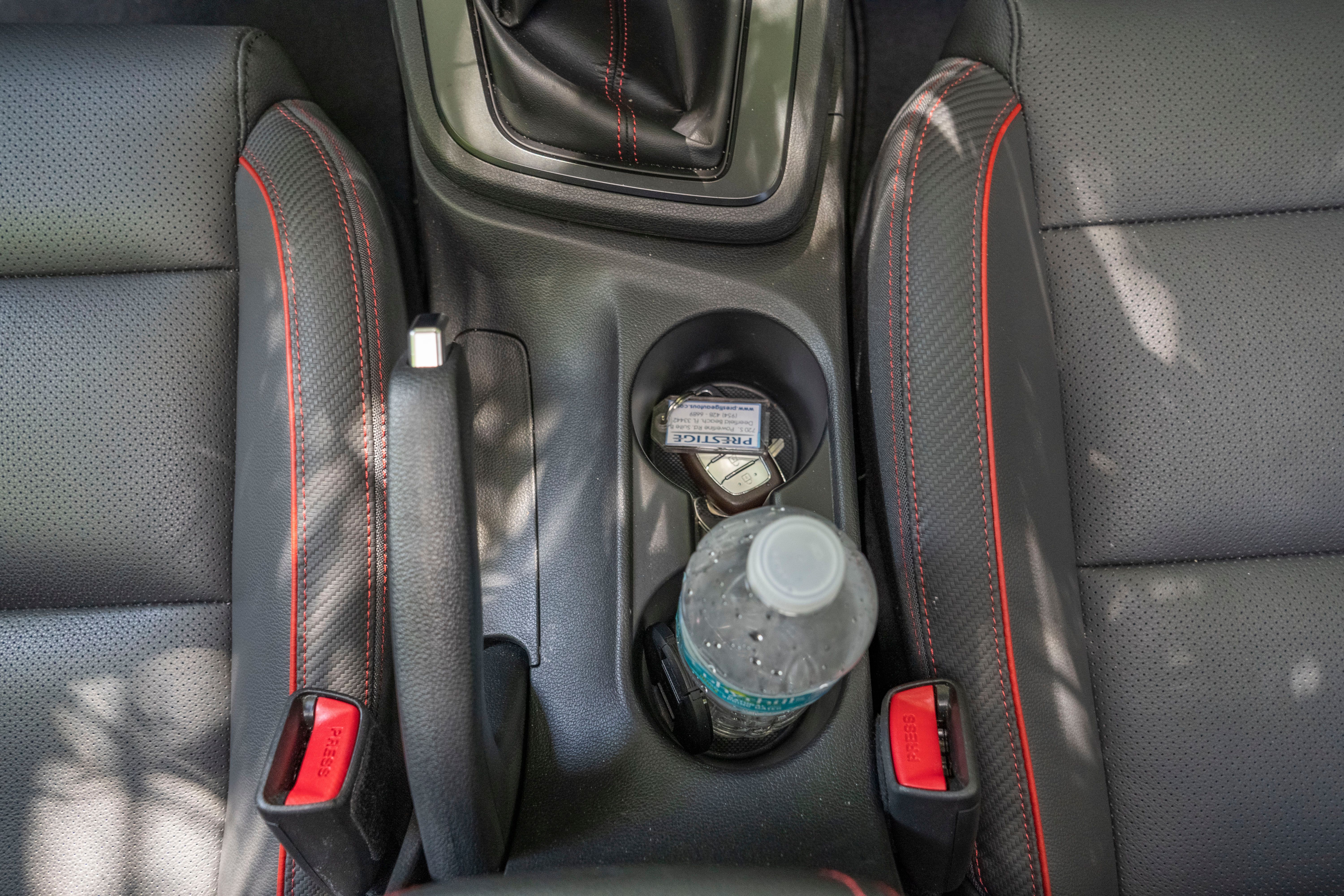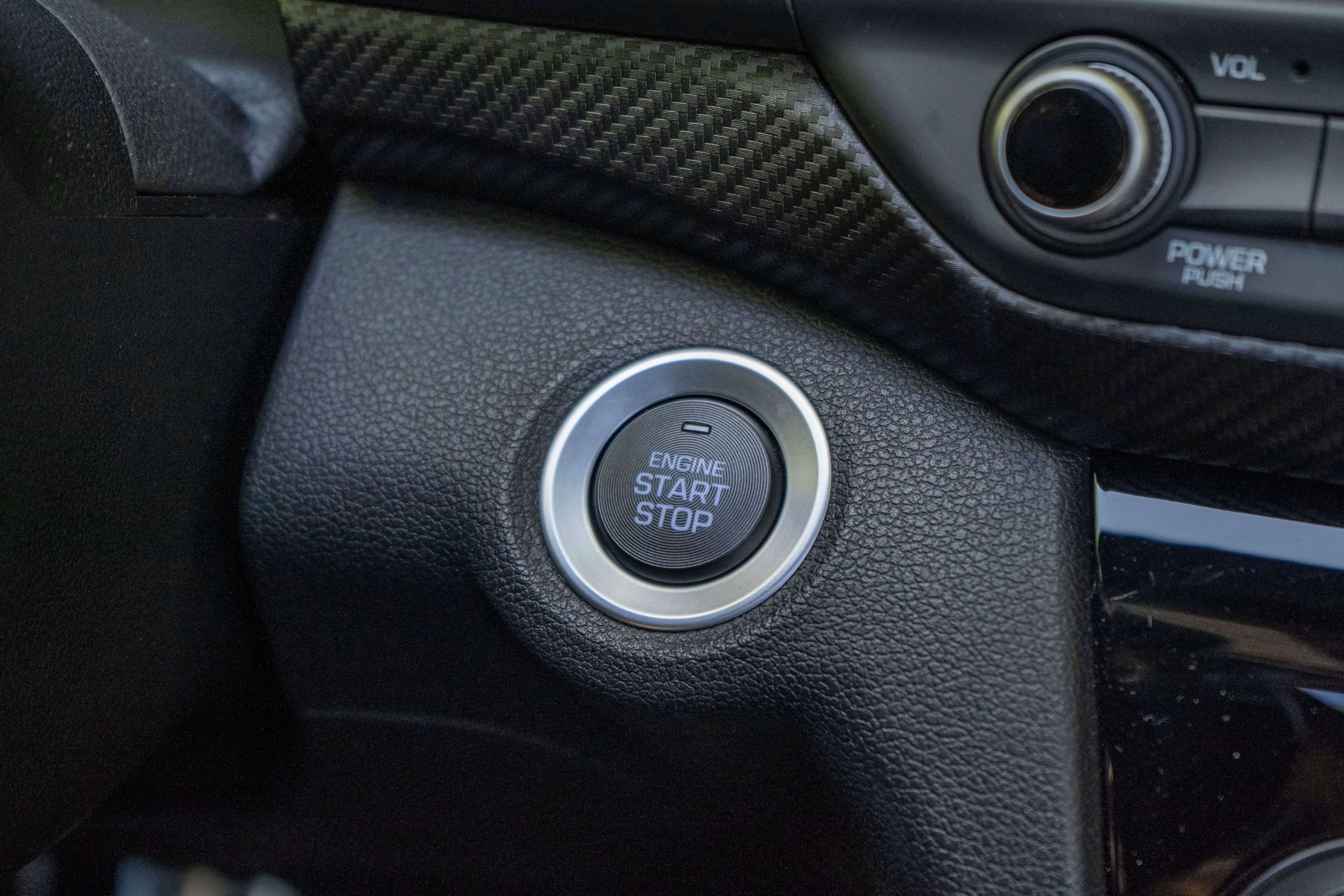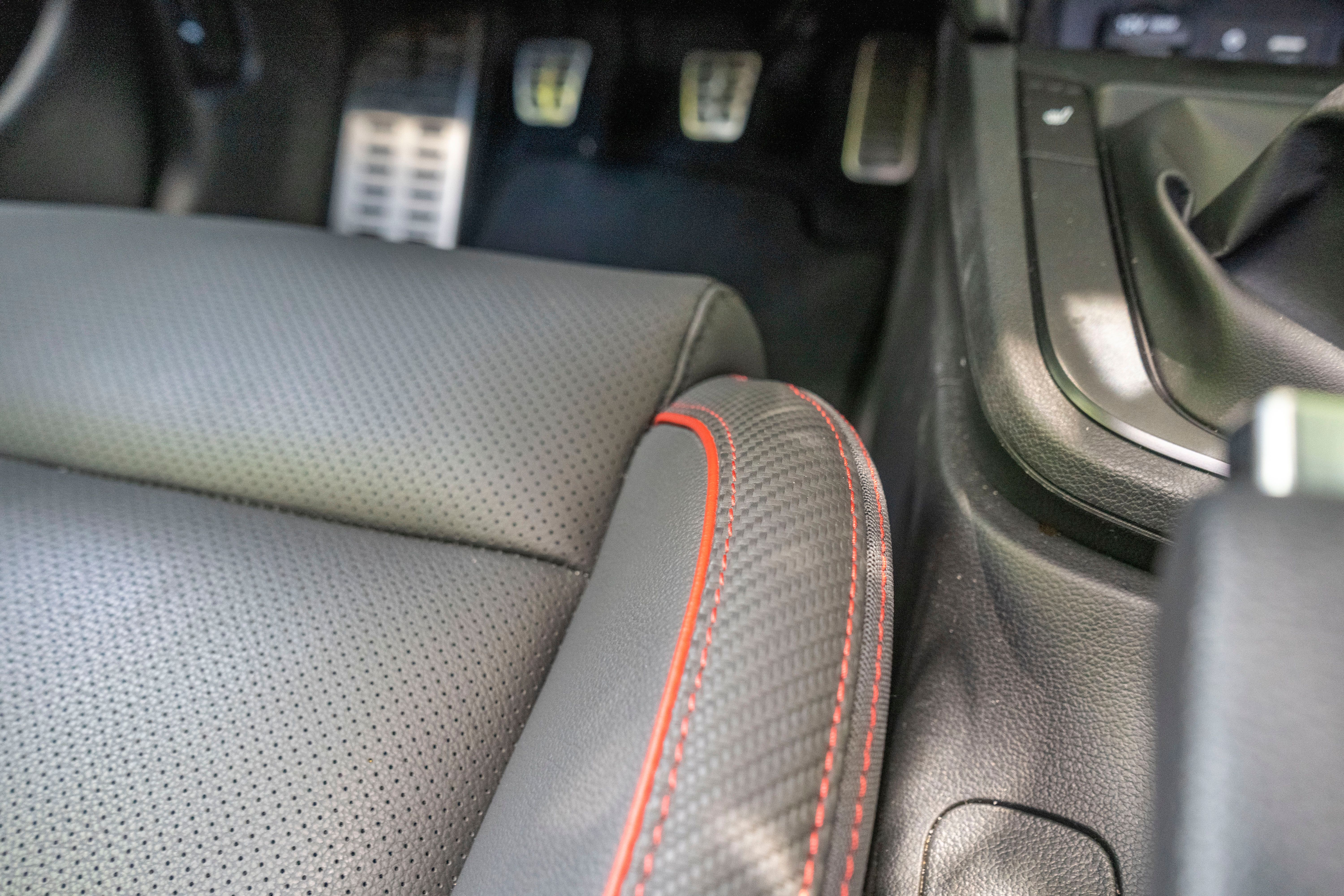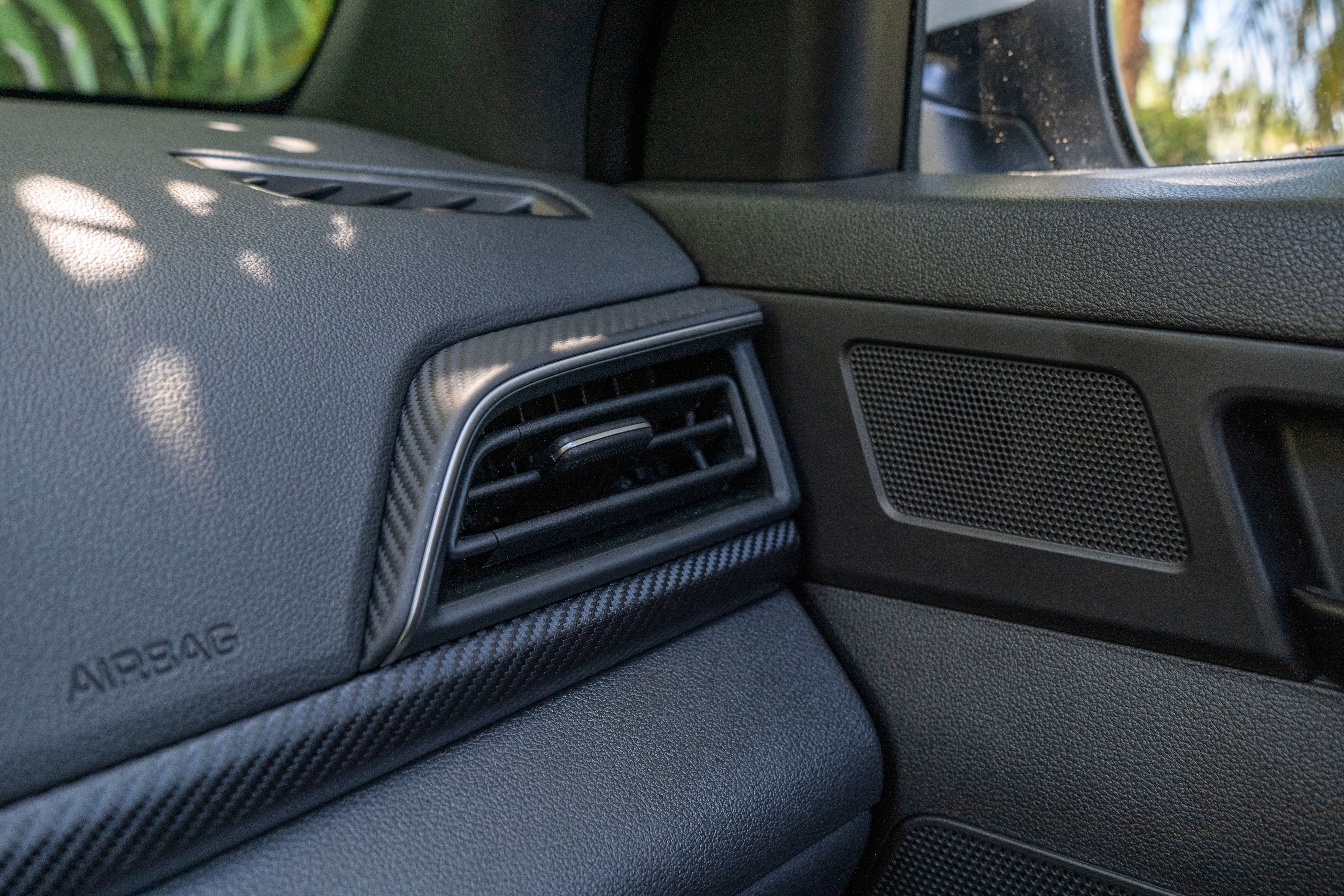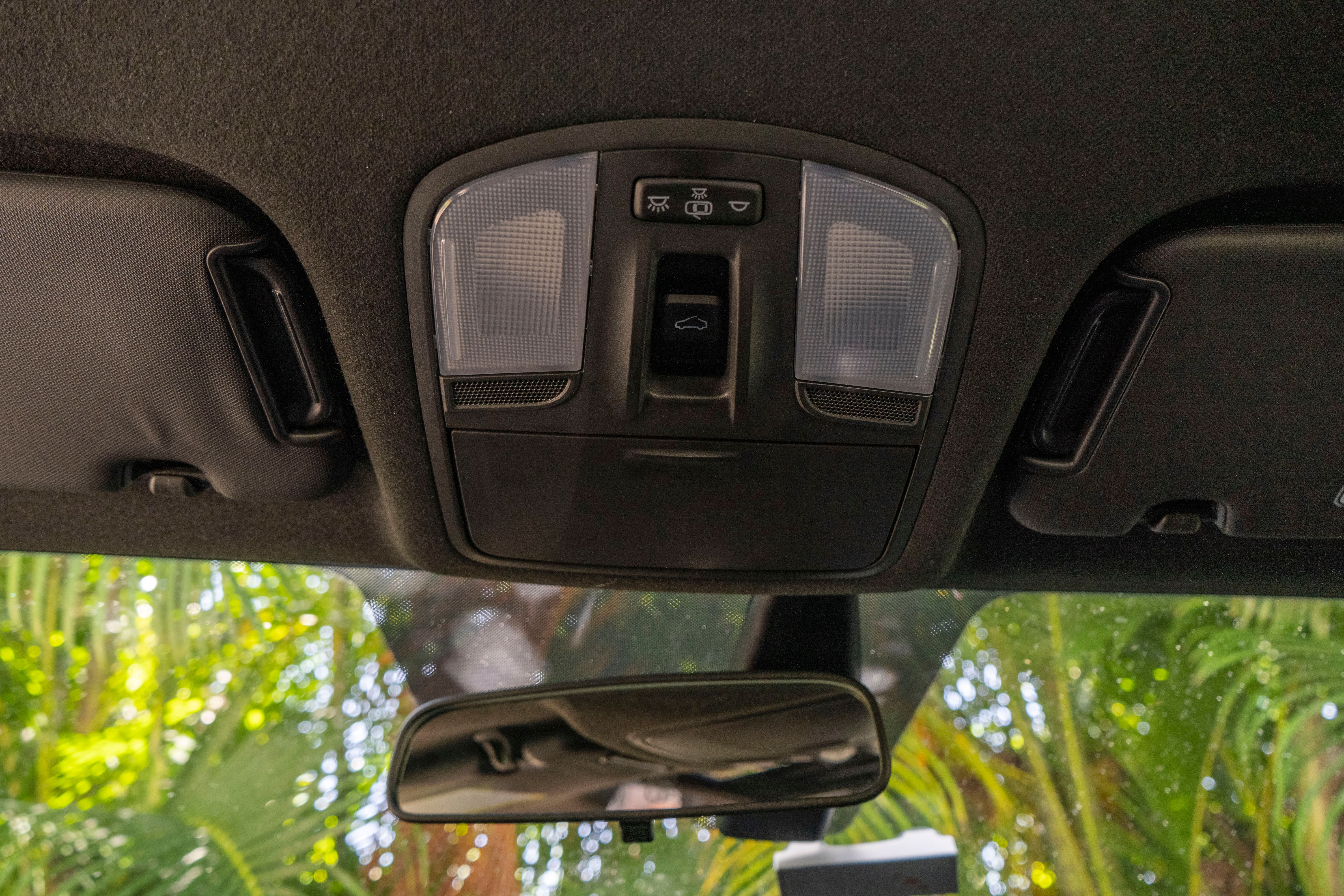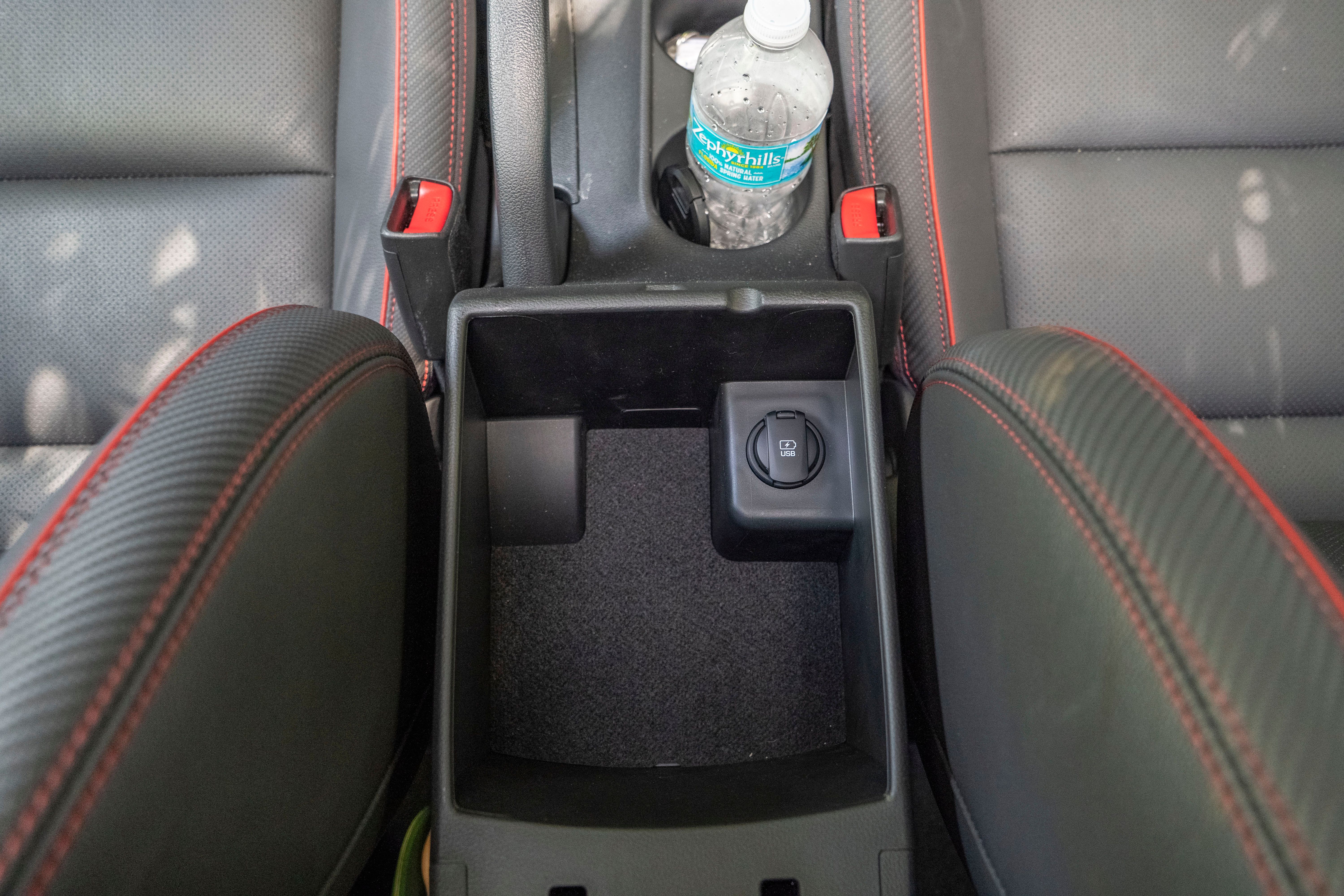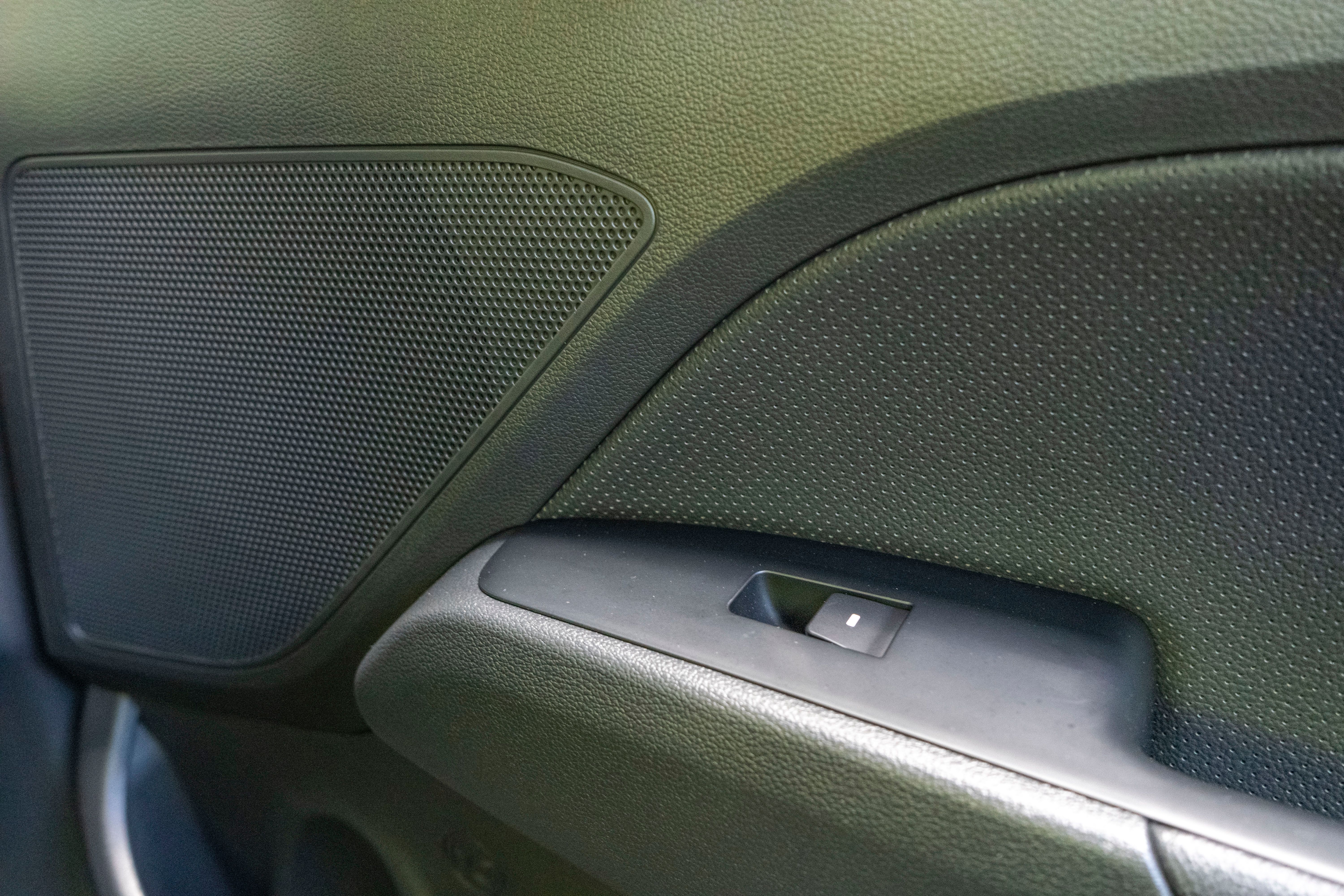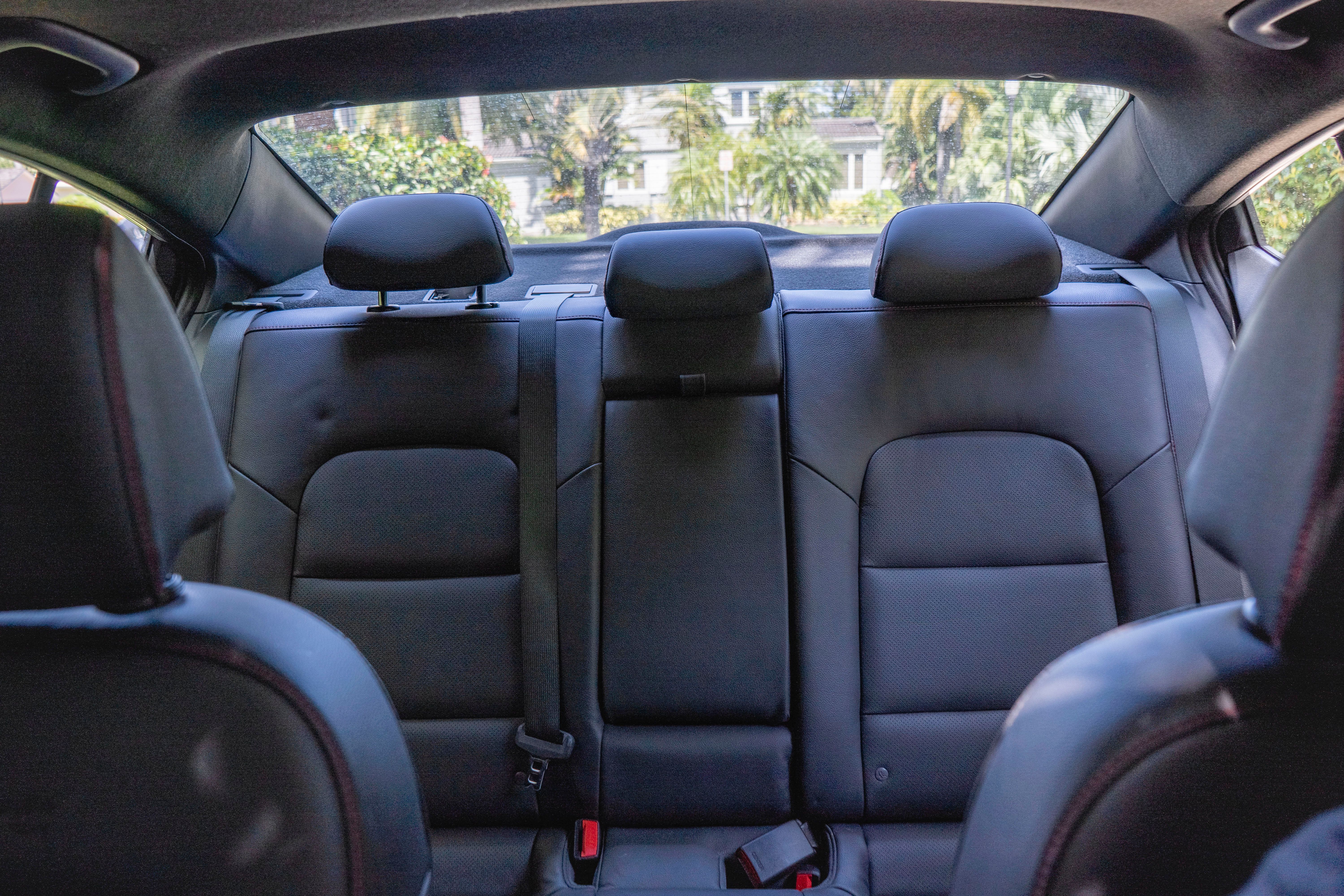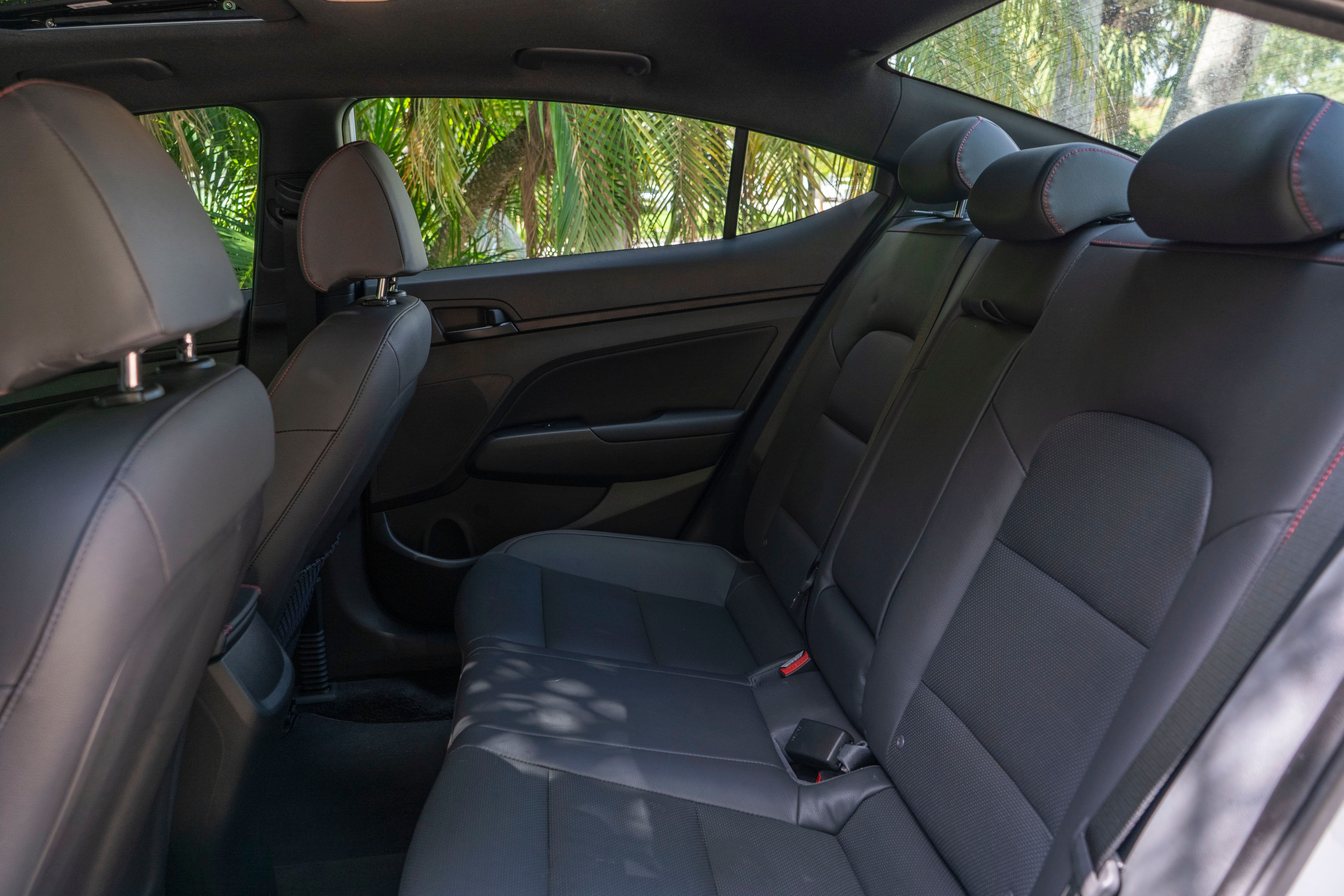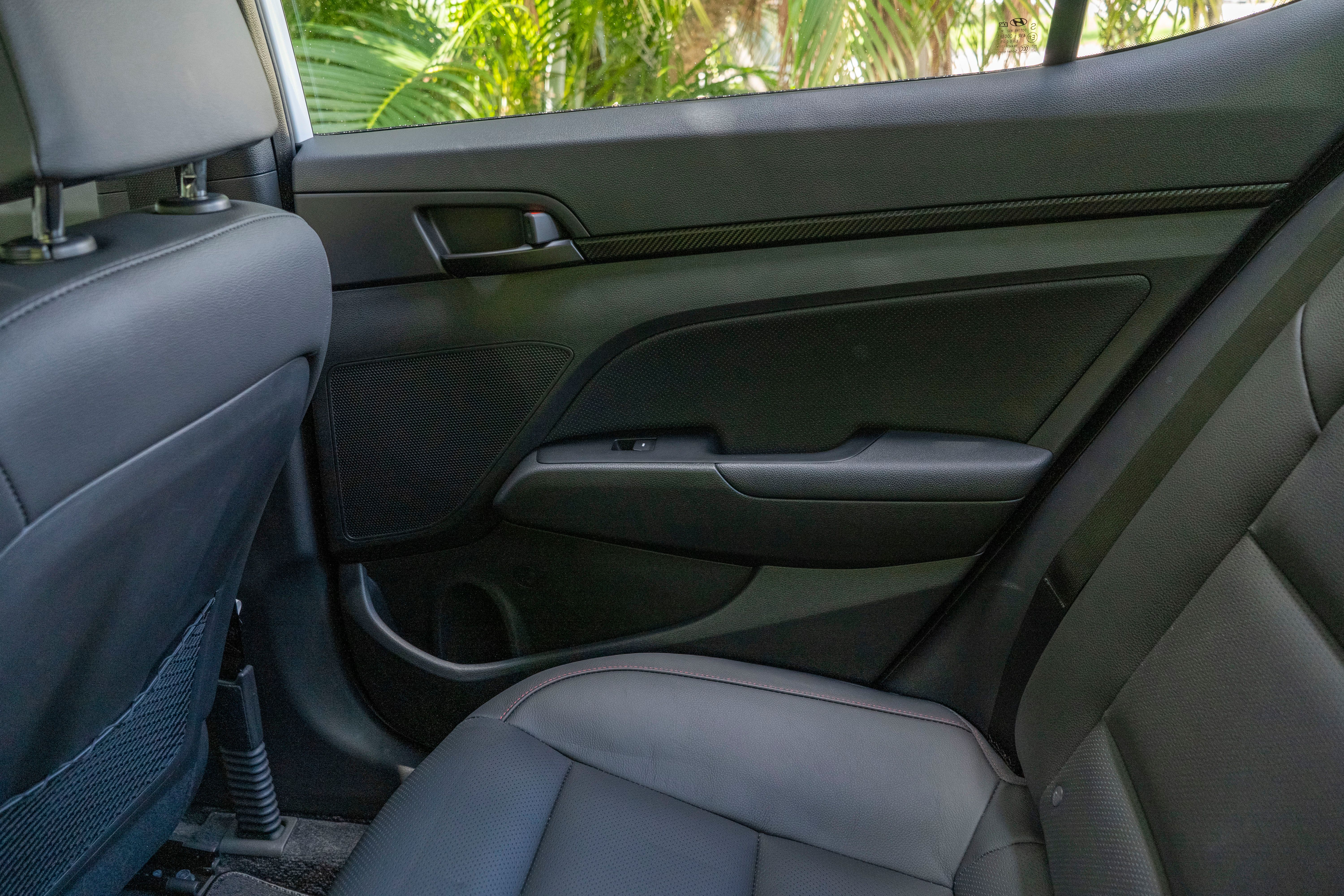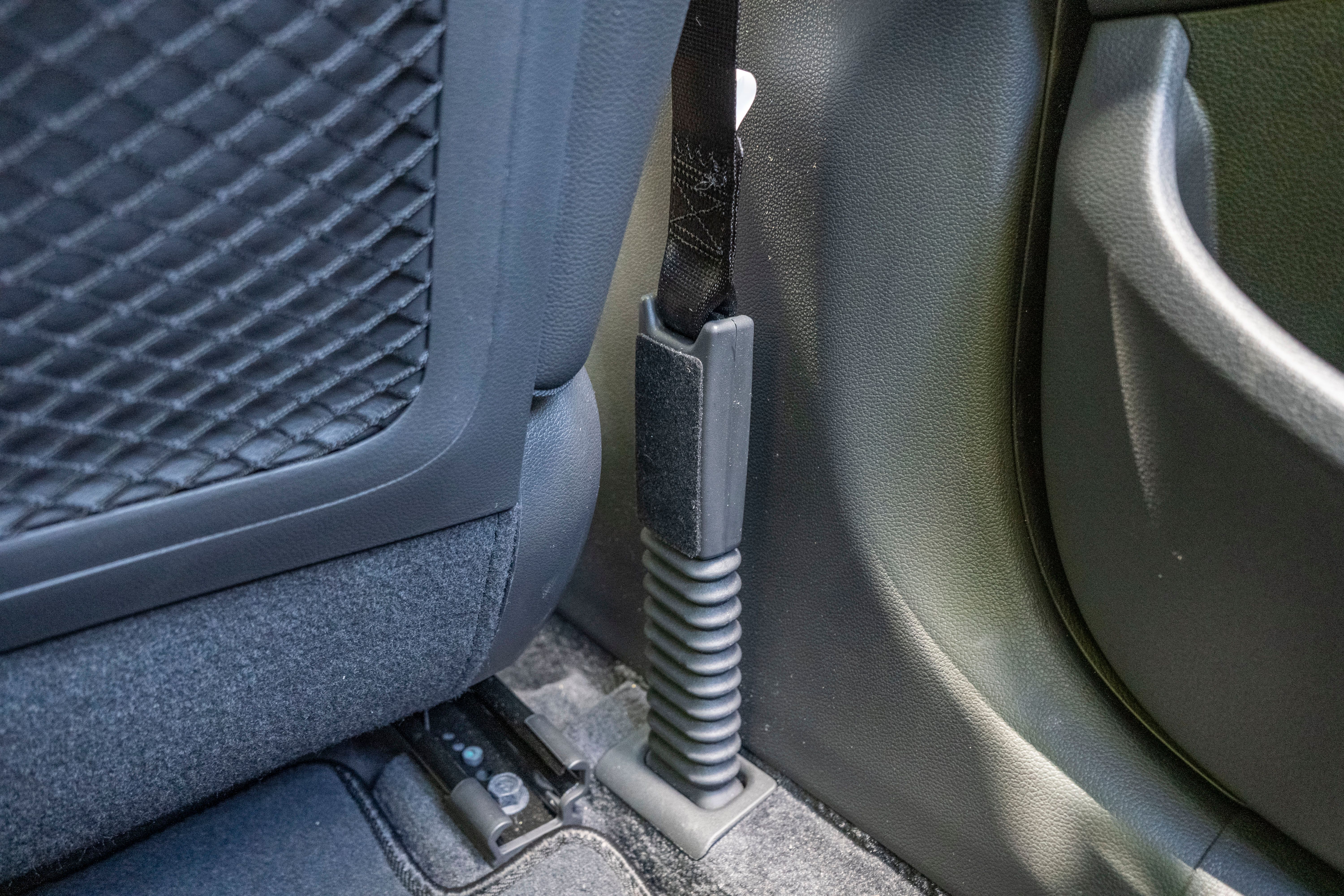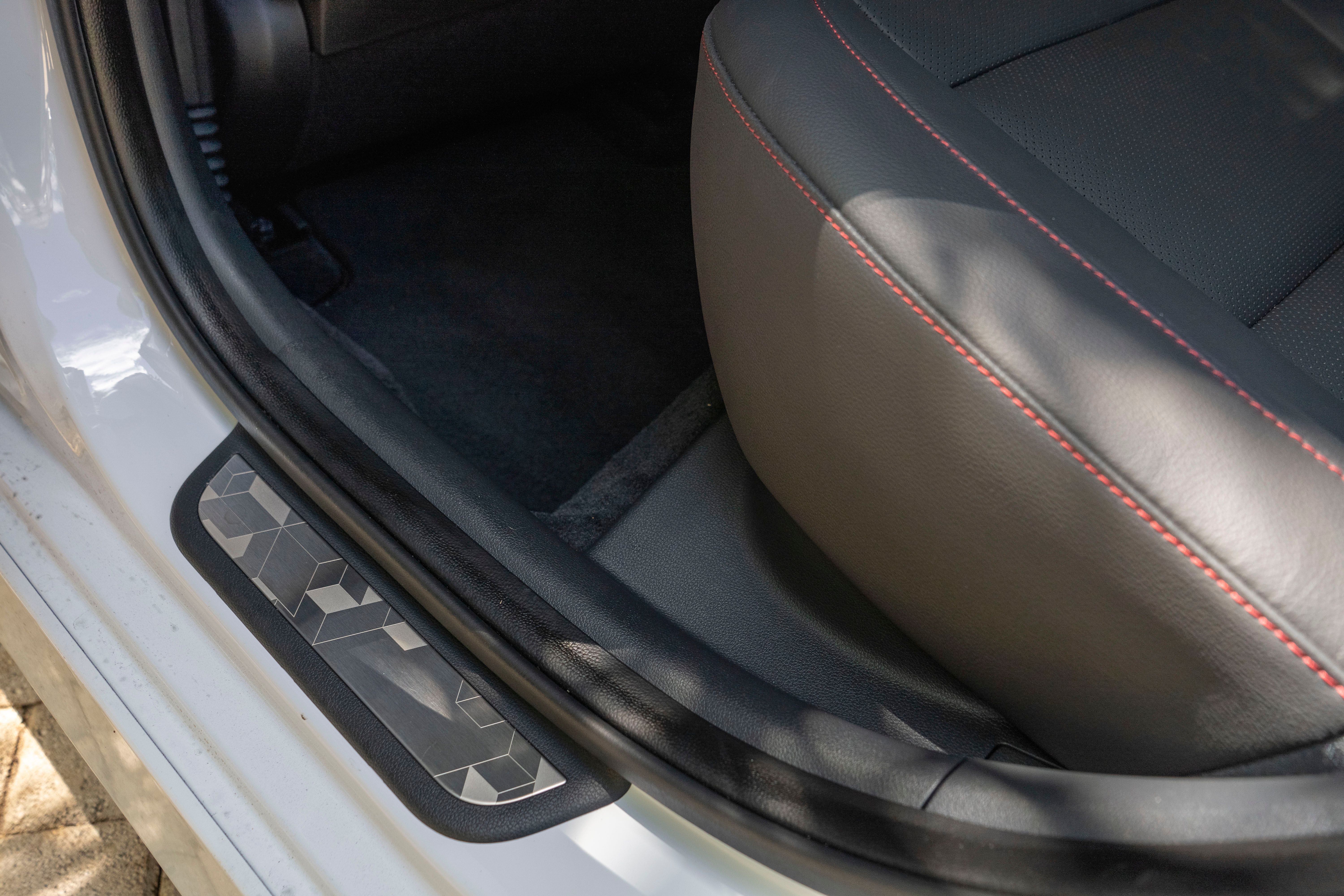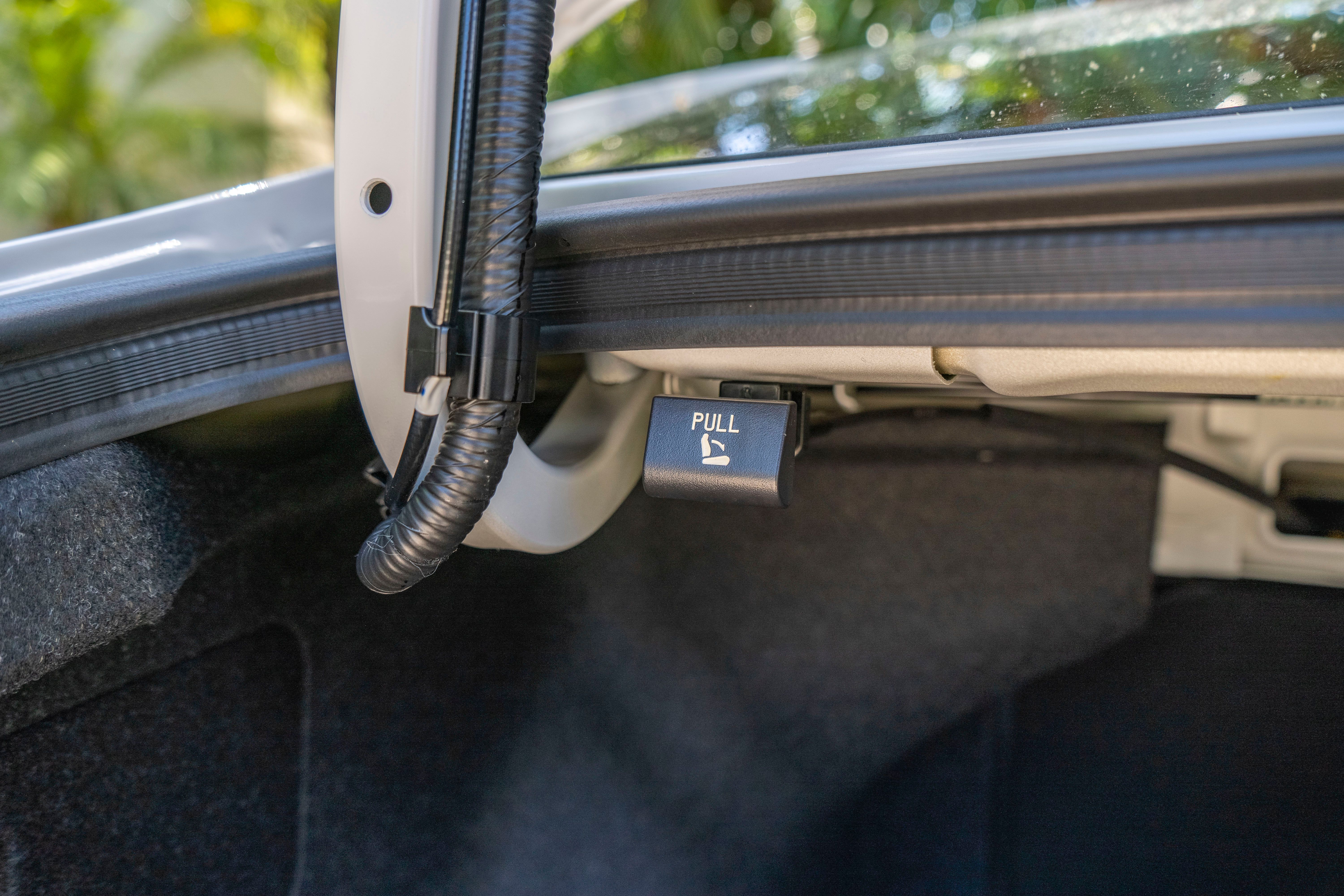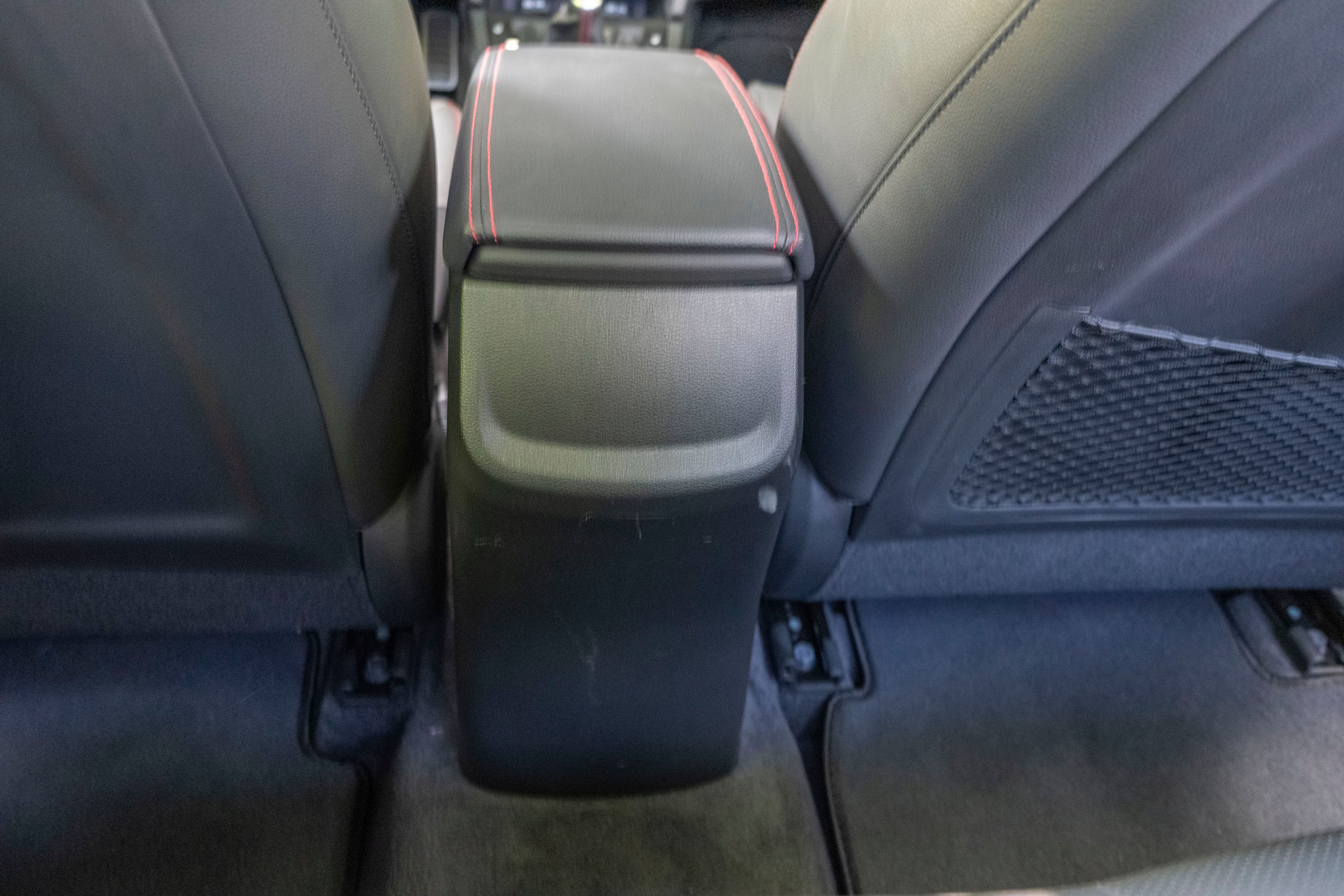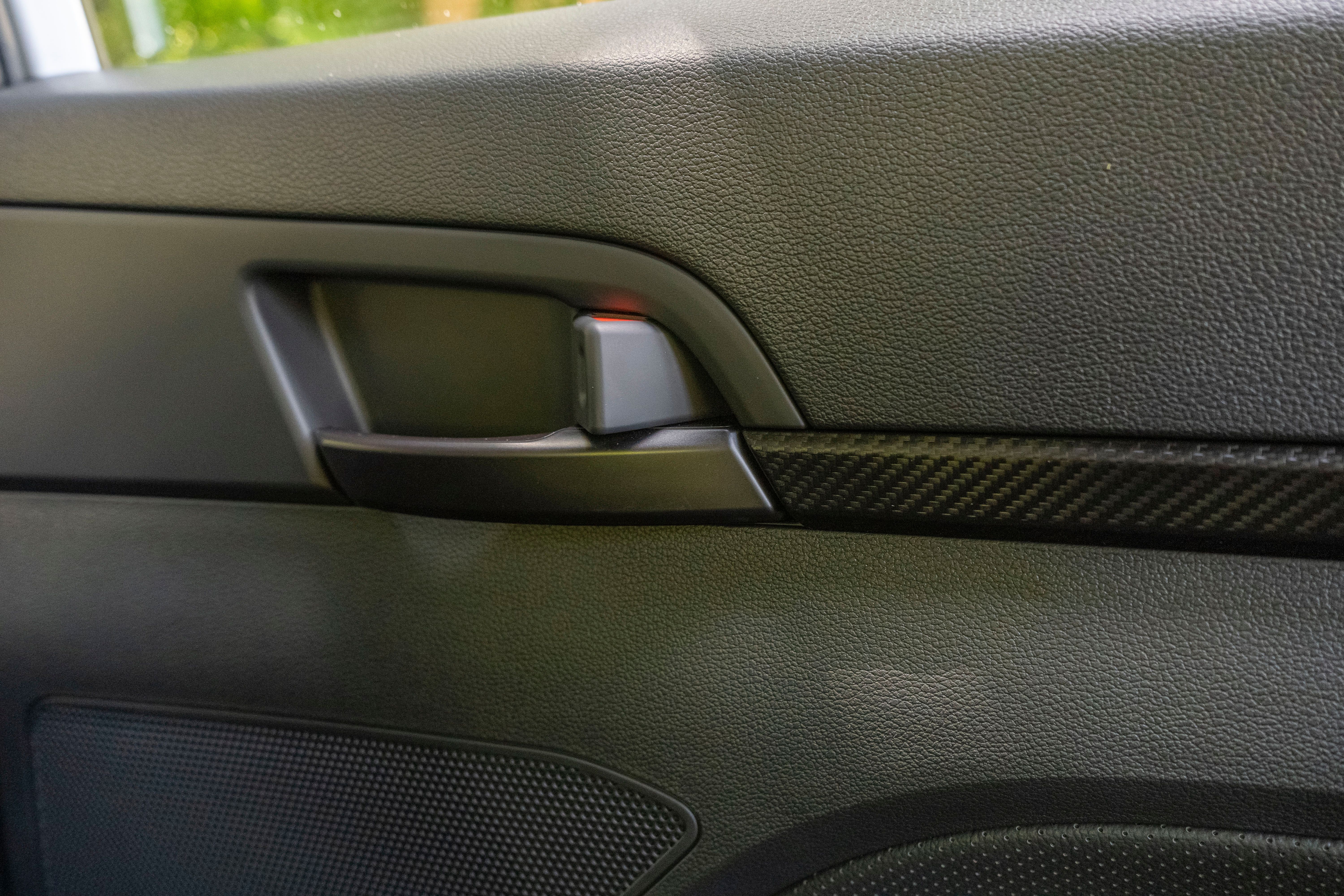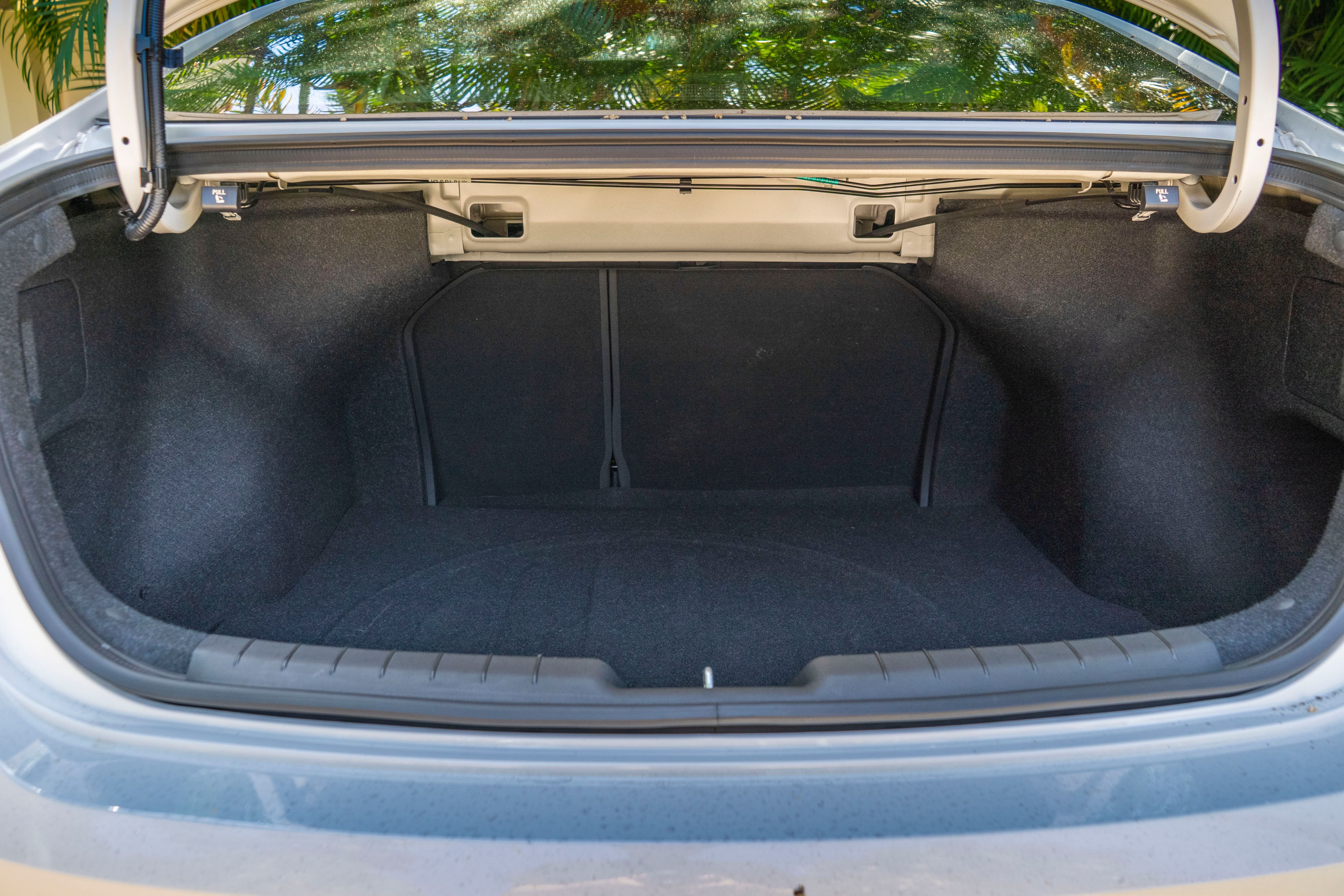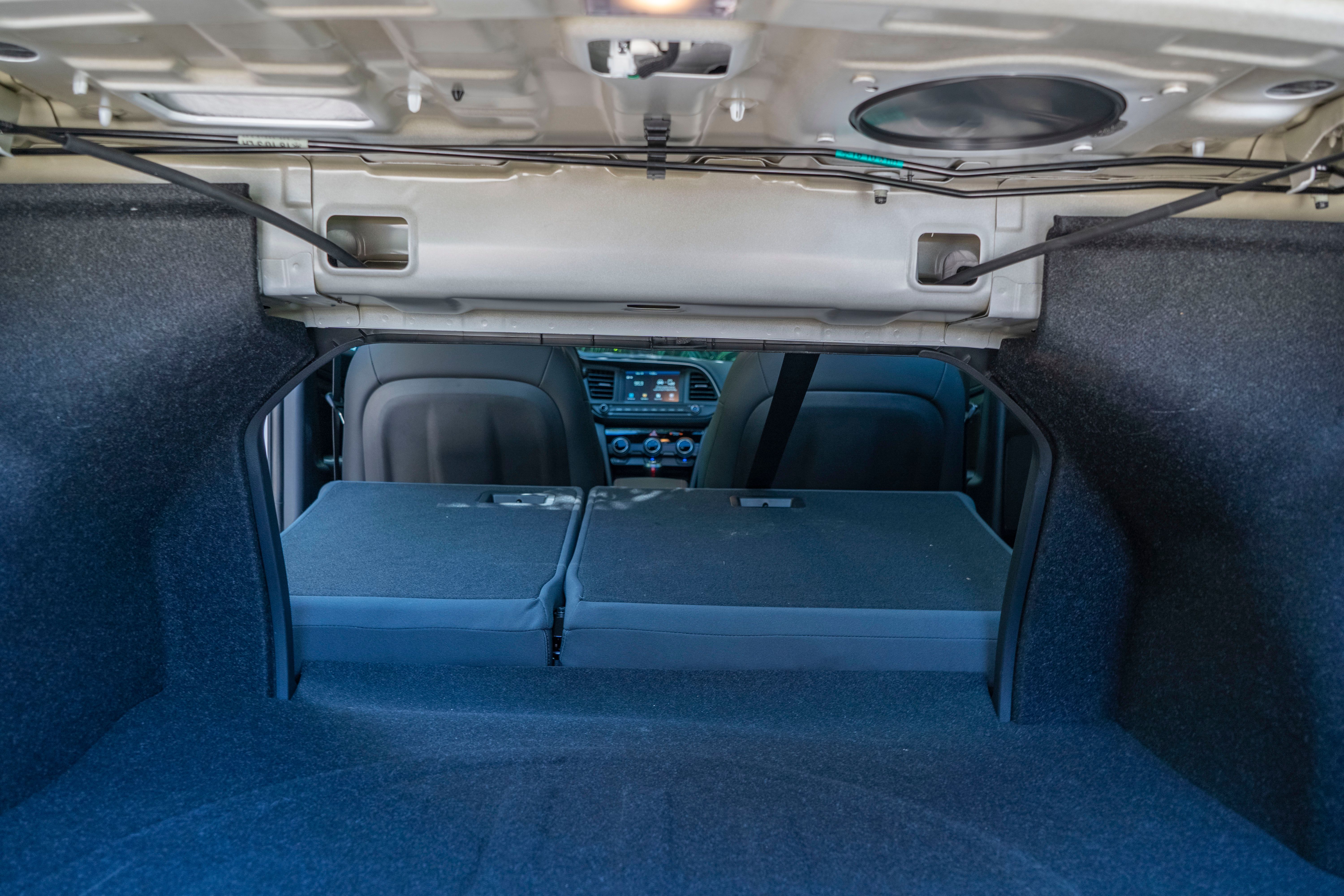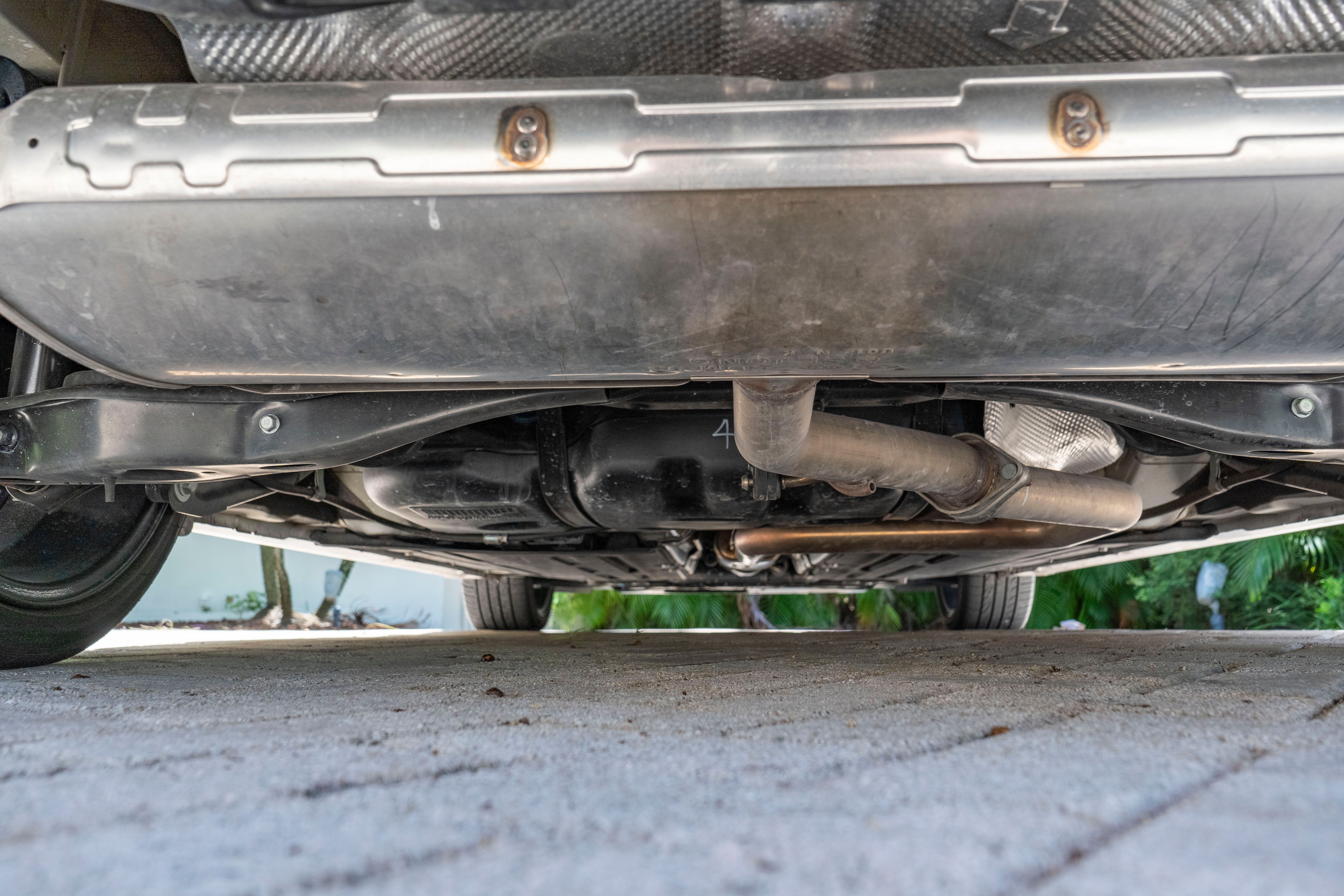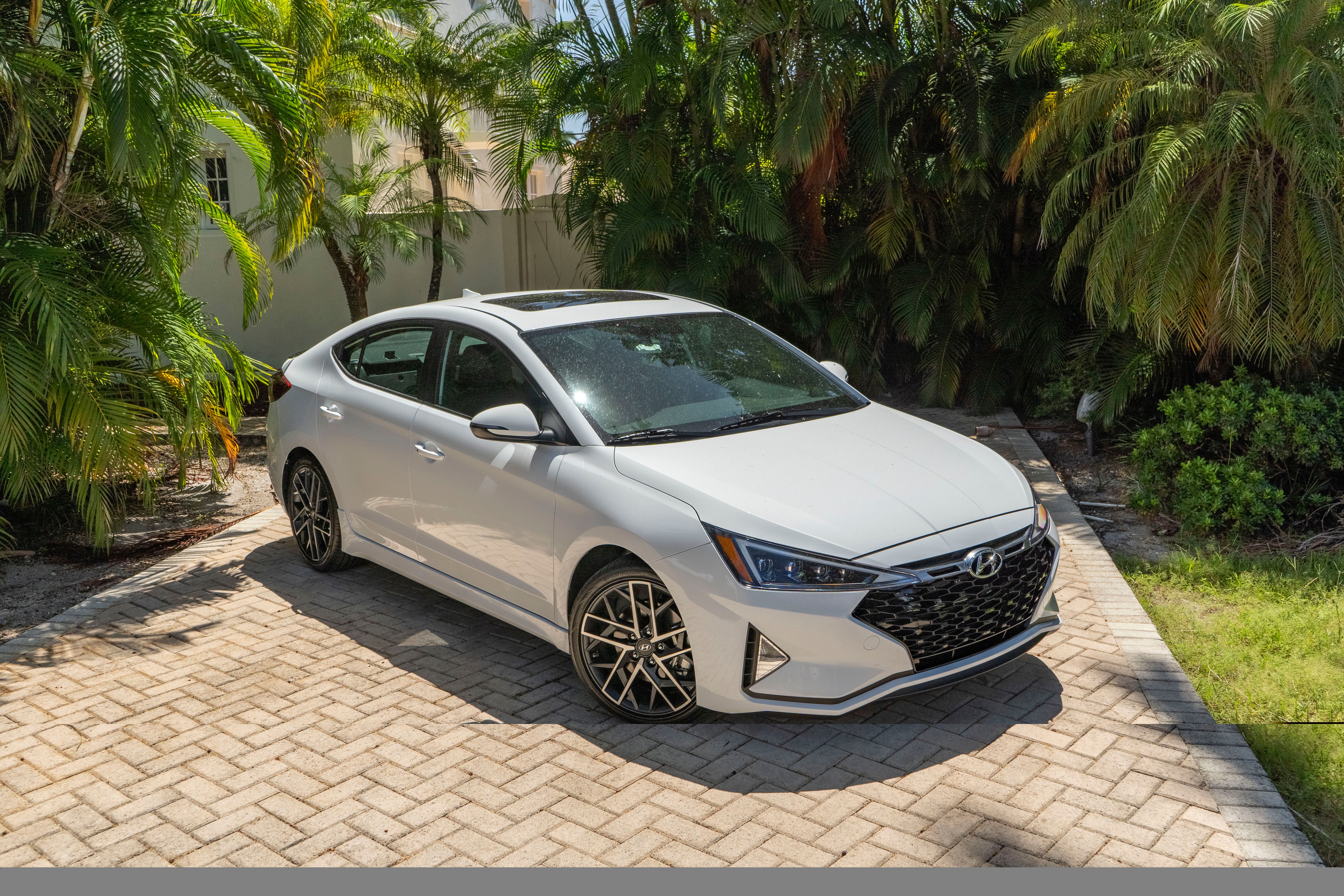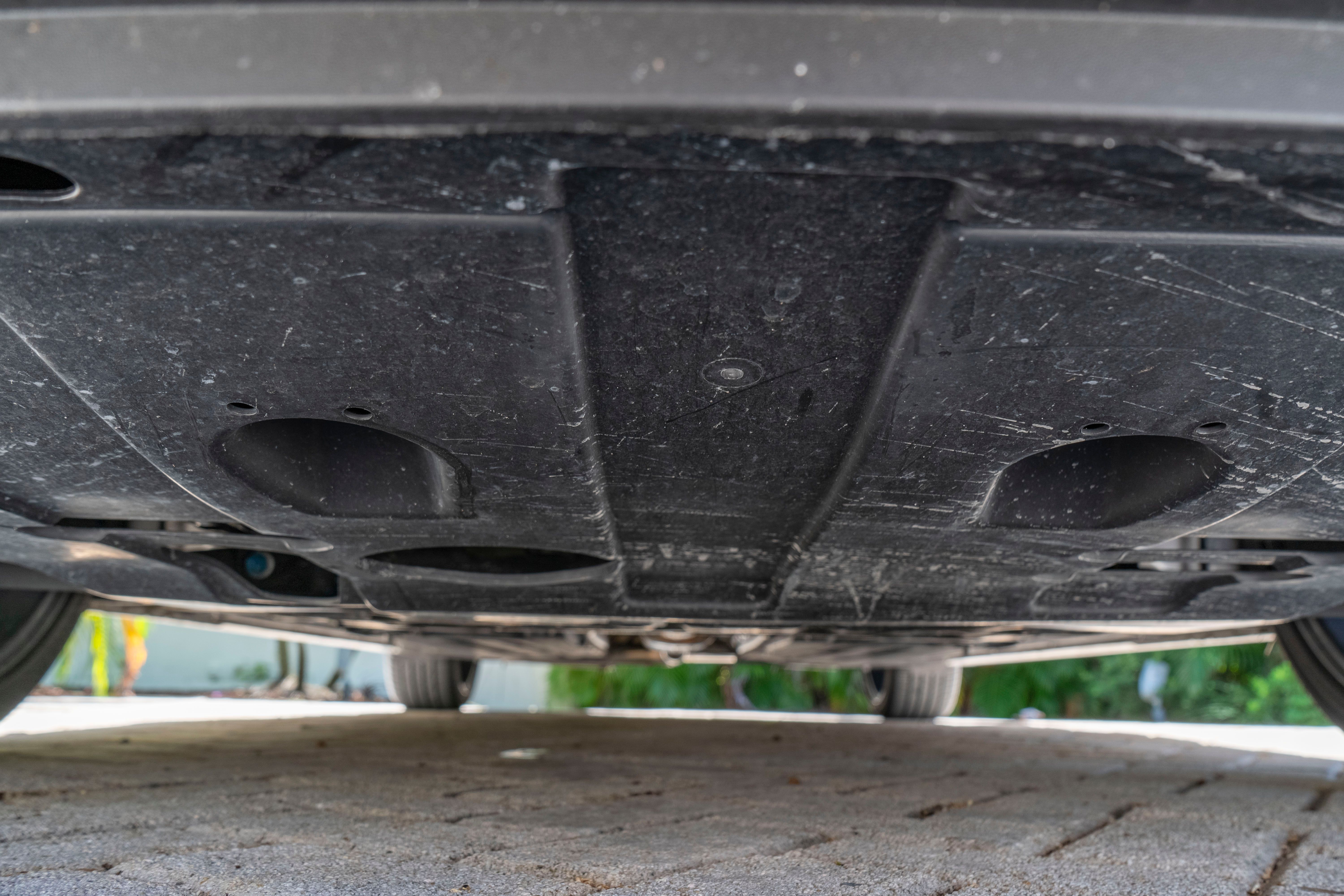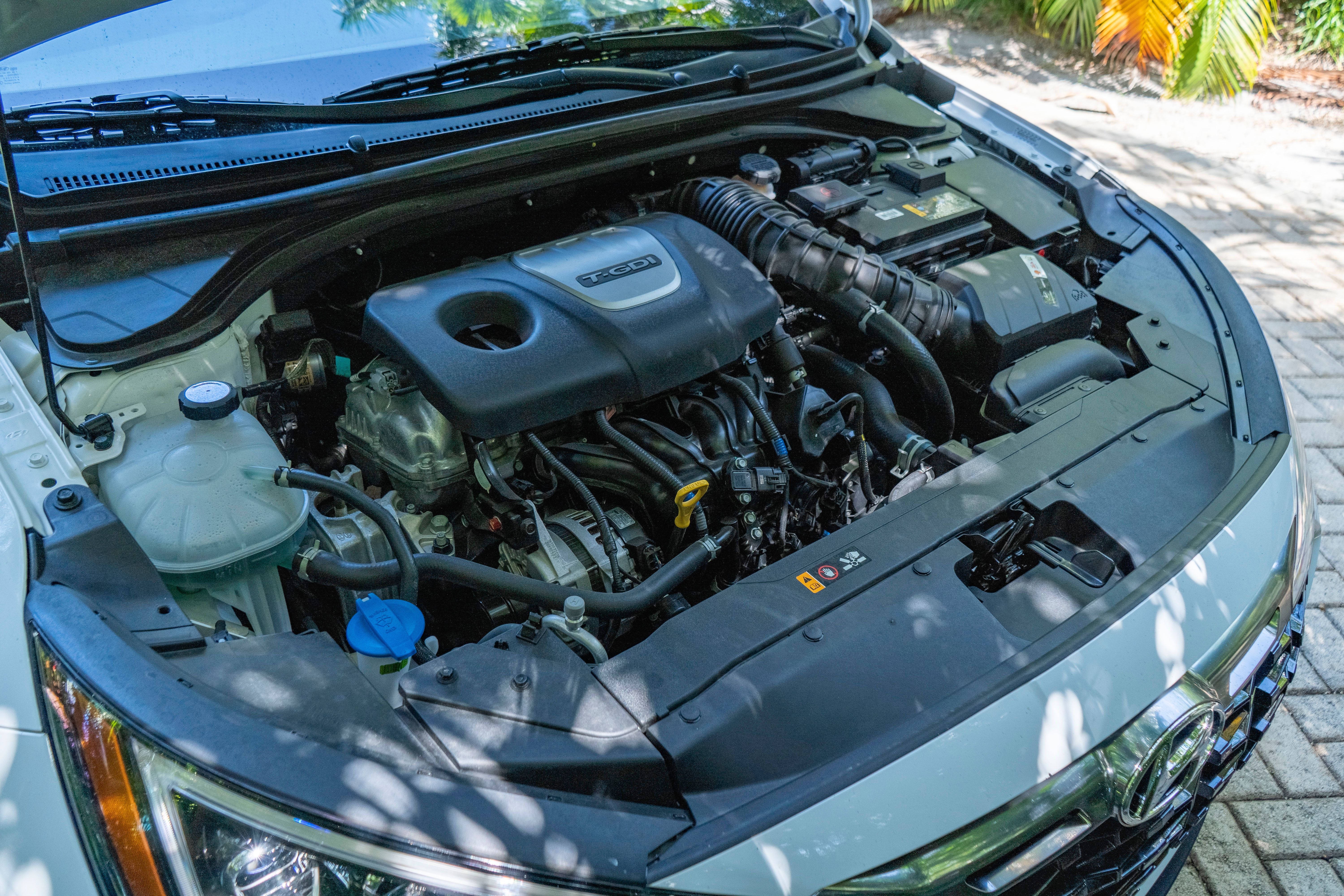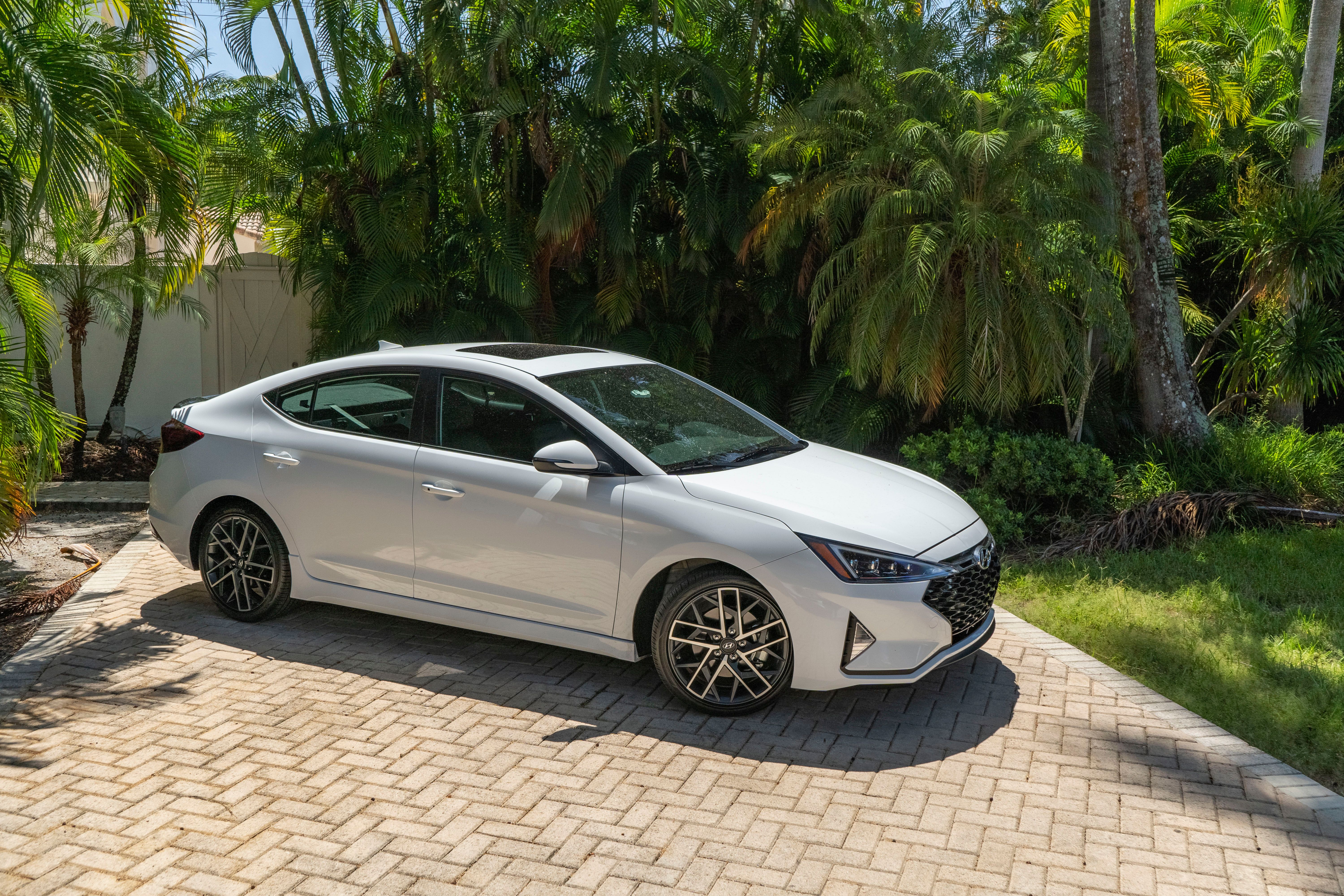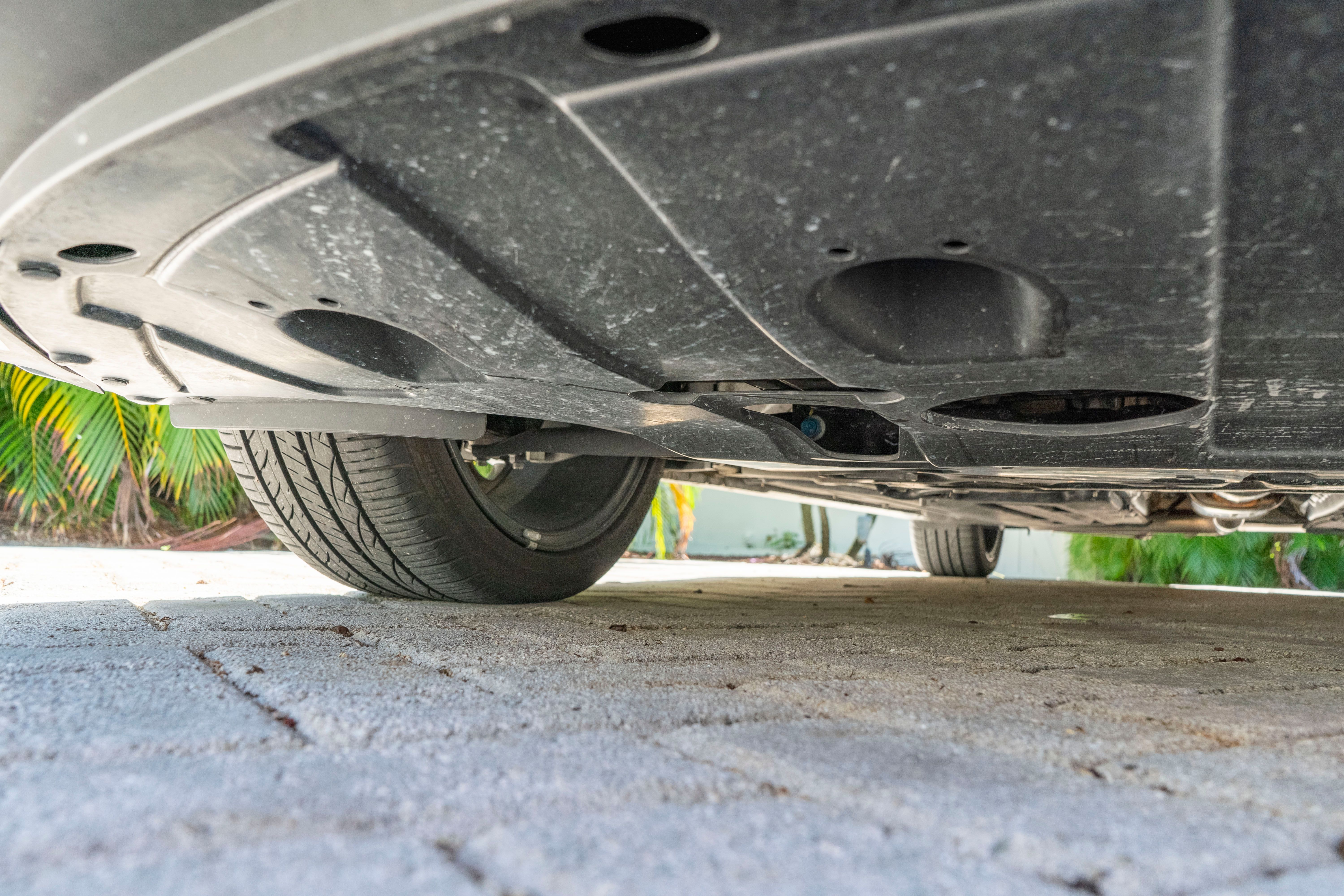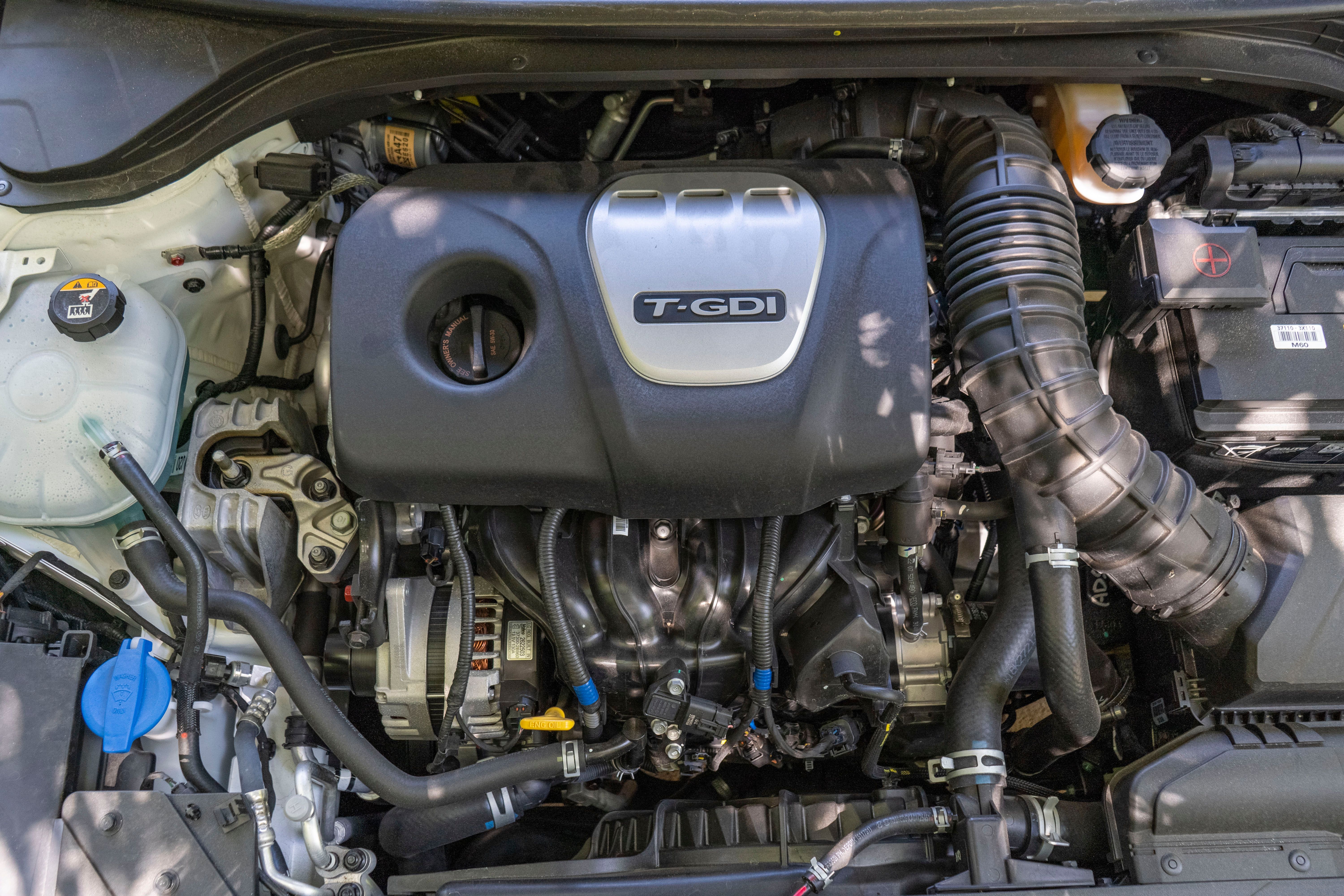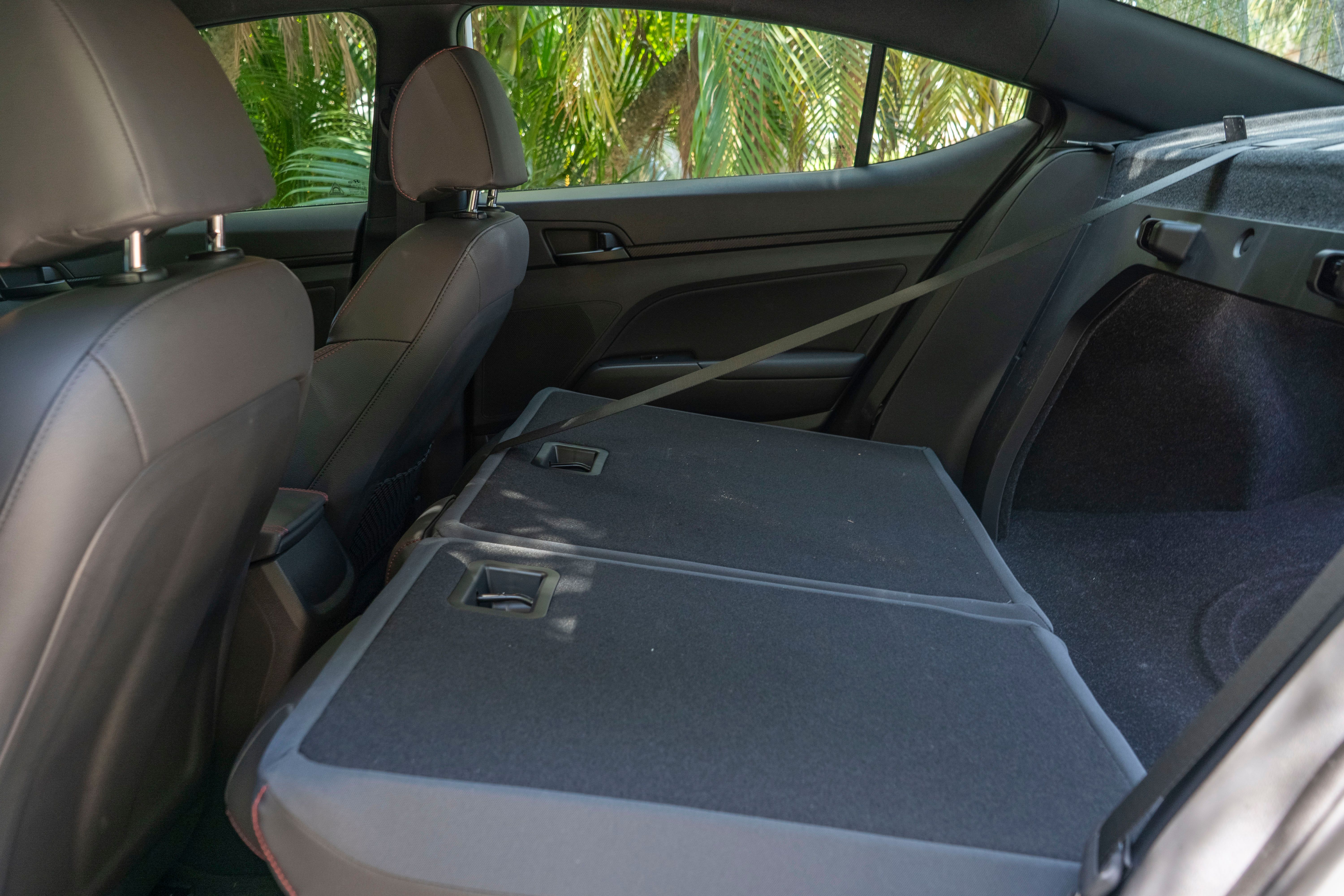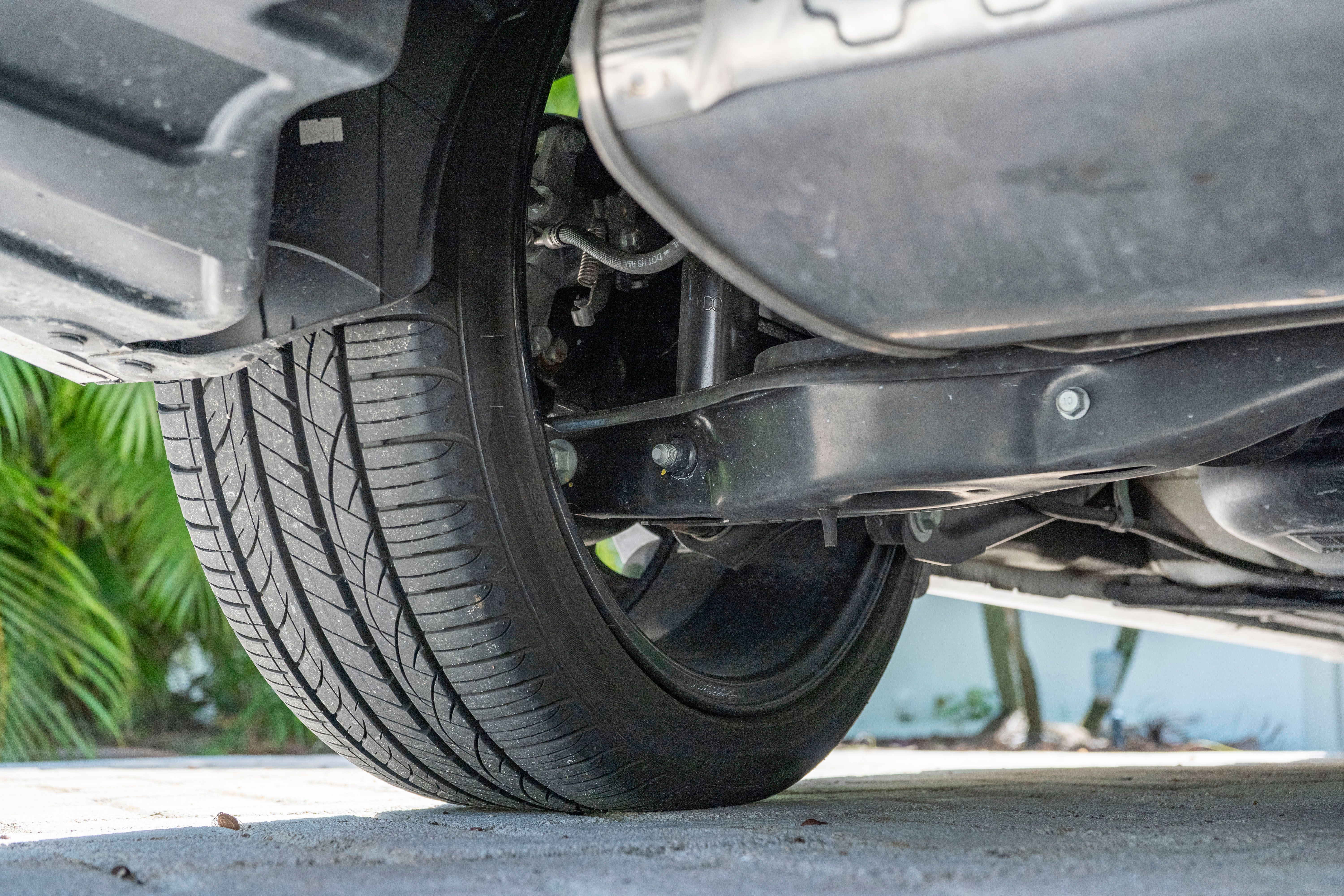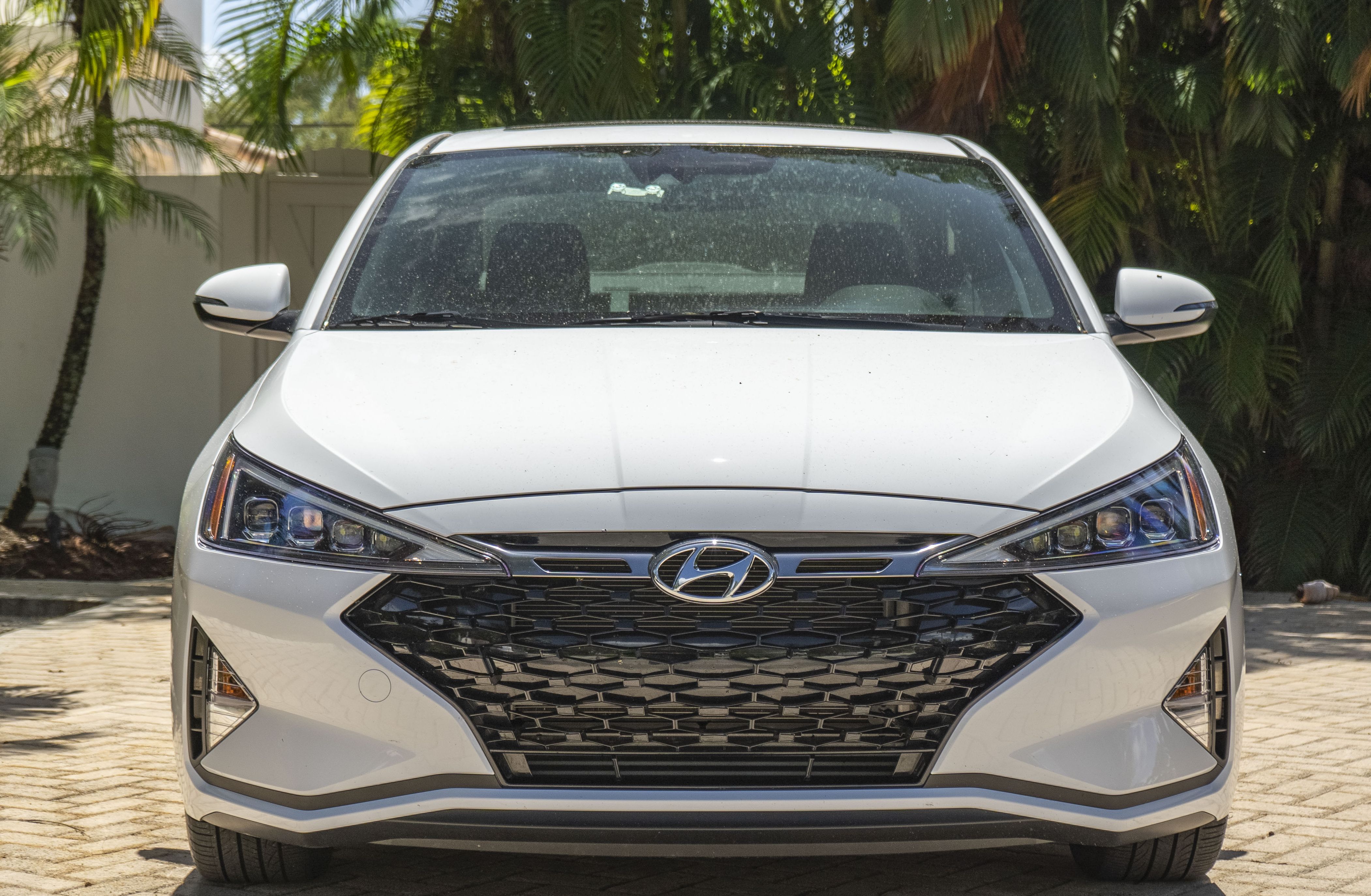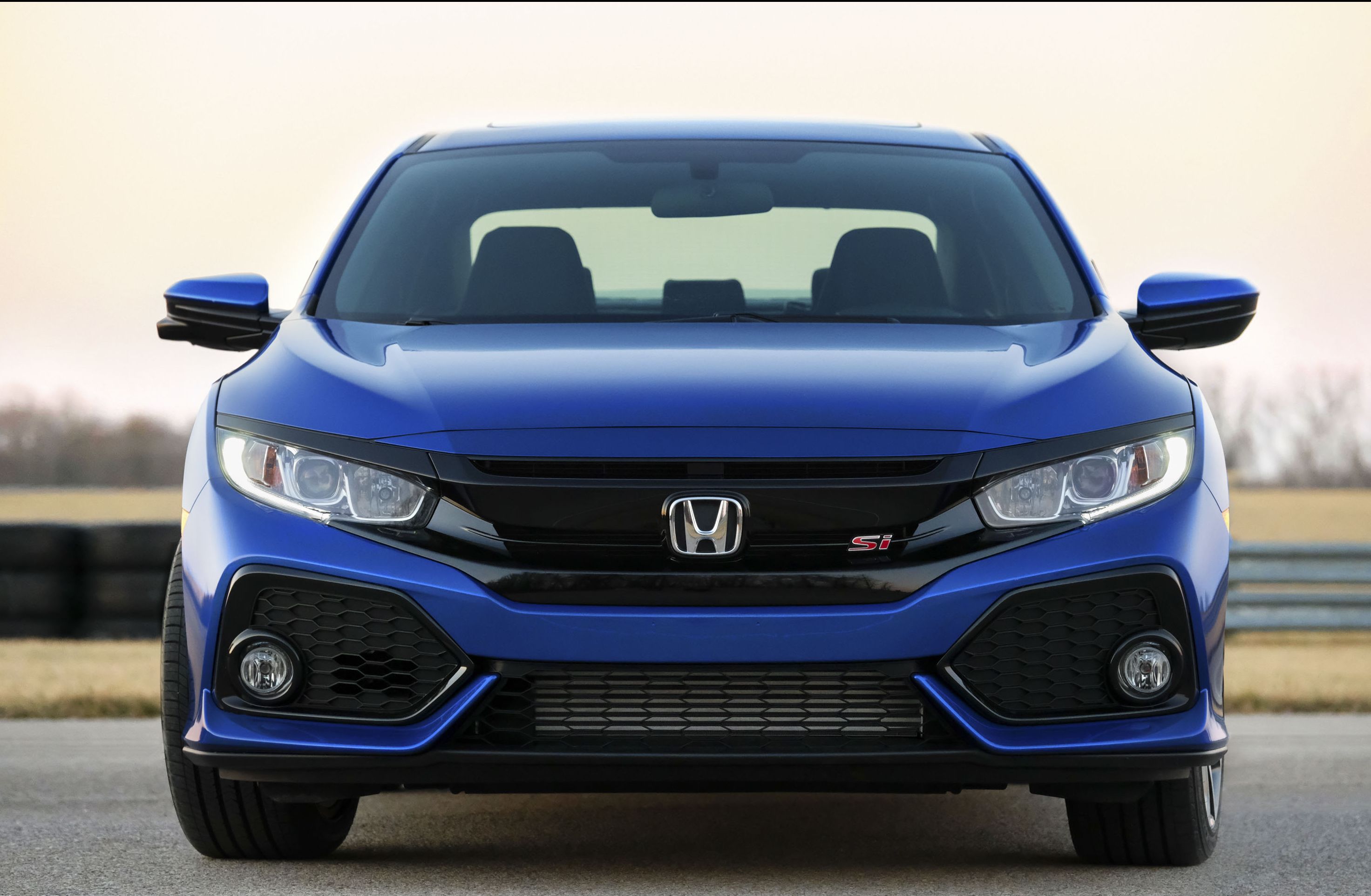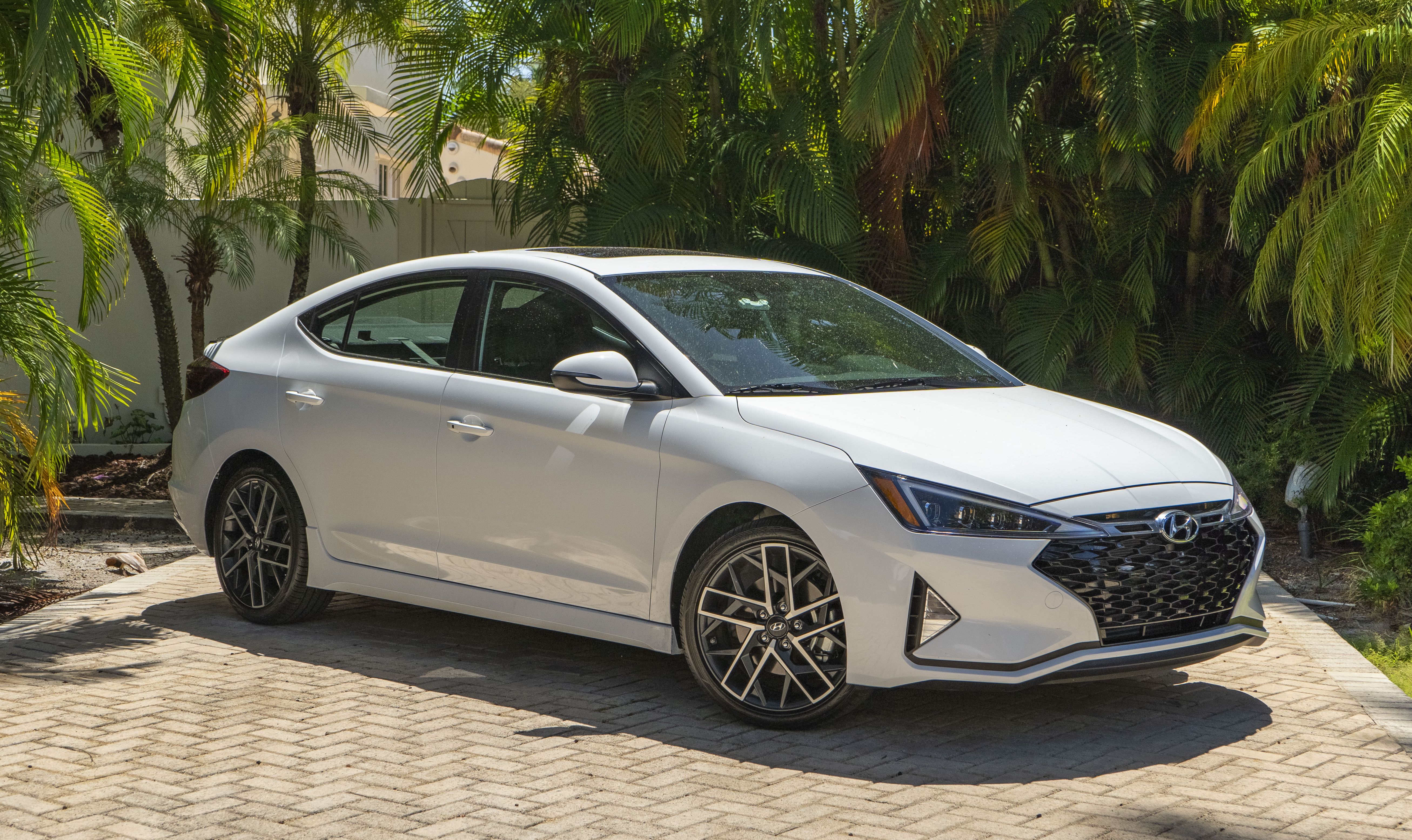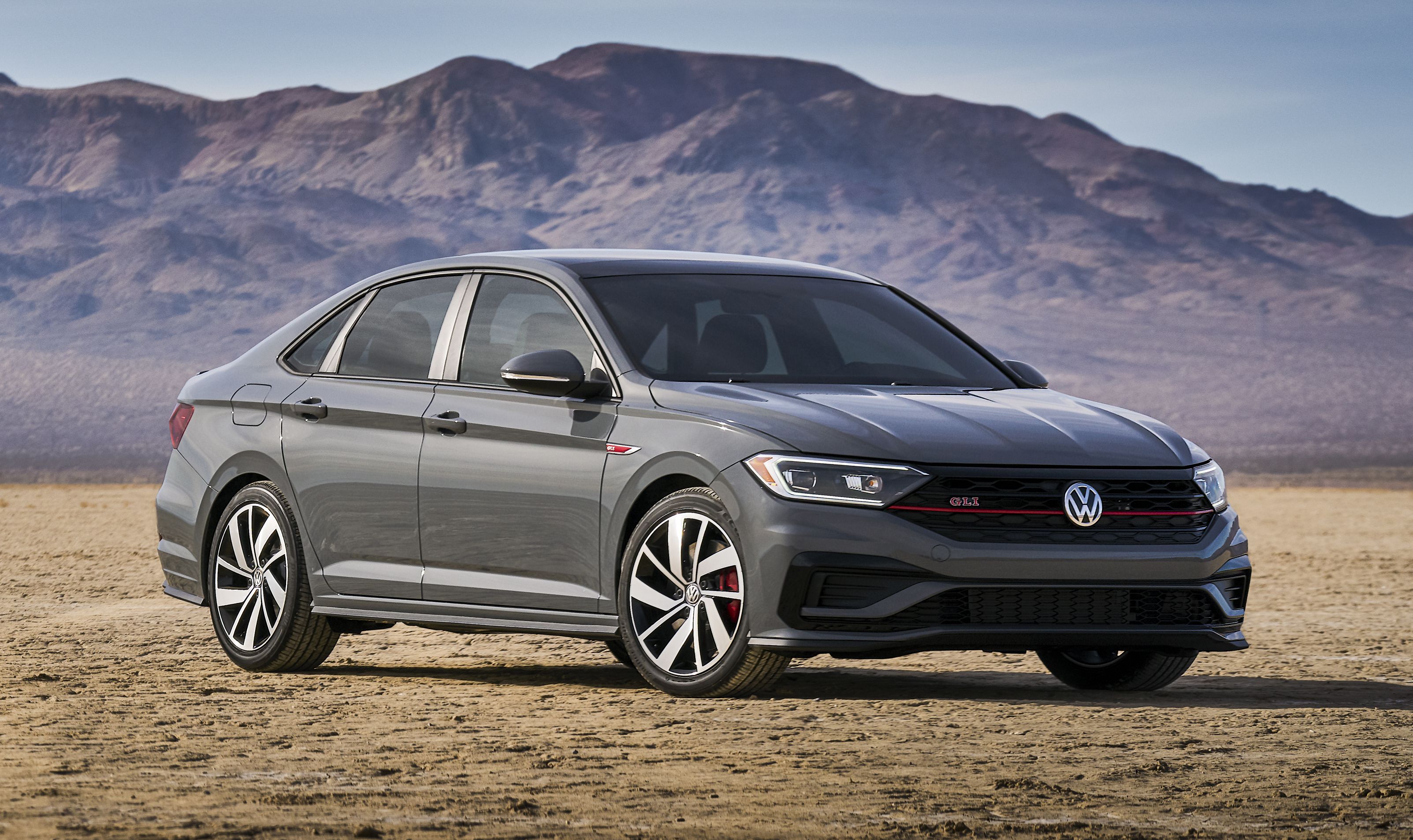The Hyundai Elantra isn’t exactly a spring chicken, being on the market for two decades as of 2020. Over the years, it’s gone through five generational shifts, with the most recent taking place in 2015 with a major facelift happening in 2019. The Elantra of today is completely different than the car it once was and has moved on from its econobox roots into all-new territory where its design and driving dynamics can compete with great authority over the models it competes with, including the Honda Civic, Chevy Cruze, and even the Volkswagen Jetta. These days, the range-topping model in the lineup is the Elantra Sport, and we’ve been wondering just how sporty it really is. Well, we’ve finally had a chance to spend some time with it, and this is our experience.
2019 Hyundai Elantra Sport - Driven
- Make: Array
- Model: 2019 Hyundai Elantra Sport - Driven
- Engine/Motor: inline-6
- Horsepower: 201 @ 6000
- Torque: 195 @ 4500
- [do not use] Vehicle Model: Array
Hyundai Elantra Sport Exterior Design
To the untrained eye, the Elantra sport isn’t different from any of the lesser models in the lineup. In fact, the front end of the sport is almost identical to that of the entry-level SE trim (some $5,000 cheaper, mind you) save for a revised grille.
Looking at the Elantra from the side reminds us that we’re looking at more of an economy car than a sports car. It does have a gently sloping roofline, so it does have a fastback design of sorts, but the hood and front clip are very short and slope downward as well. This gives the car a slightly off-centered appearance. It isn’t really that bad, but nobody will mistake this for anything but a FWD Hyundai. If you look at Hyundai’s spec list for the Elantra sport, you’ll see that it has just one feature that it doesn’t share with any other trim level – the “sport side sill extensions.” That’s fancy talk for side skirts, but don’t be fooled, there’s nothing sporty about them. The only difference between these side skirts and those on the lesser model is that they are just a hair longer in the front and rear… by like 1 cm. They also seem to be a little wider in the rear, but the overall design is nearly indistinguishable from the lesser models. The Elantra Sport shares the mirror-mounted turn signal indicators with the Limited trim, which is the same story for the chrome trim that runs along the beltline. This, by the way, is only on the bottom of the windows, the chrome treatment doesn’t extend upward as it does on most cars.
Around back, the Elantra Sport follows the same routine.
Overall, the Elantra Sport is pretty attractive for what it is, but given the “Sport” nomenclature, we really expected it to have sportier styling in person. To be honest, if looks are all that matters to you, the lesser trims will probably suffice all the same. We just don’t like how the vehicle is boasted as having unique features when there really isn’t anything all that different.
How Big is the Hyundai Elantra Sport?
The Hyundai Elantra is a compact car that measures 181.9-inches long, 70.9-inches wide, and 56.5-inches tall. It rides on a 106.3-inch wheelbase, which is pretty standard in this segment.
Hyundai Elantra Exterior Dimensions Comparison
|
Hyundai Elantra Sport |
Honda Civic SI |
Volkswagen Jetta GLI |
Length |
181.9 |
182.8 |
185.2 |
|
|---|---|---|---|---|---|---|---|
|
Width |
70.9 |
70.8 |
70.8 |
||||
|
Height |
56.5 |
55.5 |
56.8 |
||||
|
Wheelbase |
106.3 |
106.3 |
105.6 |
||||
|
Front Track |
60.8 |
60.5 |
60.7 |
||||
|
Rear Track |
61.4 |
61.2 |
60.4 |
||||
|
Curb Weight |
3,131 |
2906 lbs |
3217 lbs. |
Hyundai Elantra Sport Interior Design
The exterior design of the Elantra Sport might not be as sporty as we like, but the interior is a whole different story.
We have to admit that Hyundai came up with the perfect blend of accenting here. The black headliner and black trim panels would be too much on their own, but the limited amount of red contrast sets things off just right. However, even with the occasional bits of leather time there is a lot of cheap-ish feeling plastic here as well, specifically along the bottom of the dash, around the shifter and e-brake handle, and the bezel around the infotainment system and instrument cluster. It’s not 1995-Hyundai bad, but if the automaker needs to improve anywhere it comes down to improving the cheap plastic trim.
There’s really nothing to write home about in the rear. The front seatbacks have little storage nets, and there is decent storage in the door panels. Outward visibility here sucks, though, thanks to that elevating beltline. The rear side windows seem impressively small, and younger kids may not even be able to see out of them at all. The rear seats are fairly comfortable but lack any real support, with the rear backrests being almost completely flat. The angle of the headrests can be a little annoying too if you’re just the right height, but it’s nothing to really complain about. Rear space, overall, is acceptable, but it’s also very boring back here. If you’re taking the kids on a long trip, you better bring the tablets along with some extra battery packs as there are no USB or 12-Volt socks for rear passengers.
Hyundai Elantra Interior Specs Comparison (in inches)
|
Hyundai Elantra Sport |
Honda Civic SI |
Volkswagen Jetta GLI |
Front Headroom |
40.3 |
37.5 |
38.5 |
|
|---|---|---|---|---|---|---|---|
|
Front Shoulder Room |
56.2 |
56.9 |
55.9 |
||||
|
Front Legroom |
42.2 |
42.3 |
41.1 |
||||
|
Rear Headroom |
37.3 |
36.8 |
37.2 |
||||
|
Rear Shoulder room |
55.3 |
55 |
37.4 |
||||
|
Rear Legroom |
35.7 |
37.4 |
54 |
||||
|
Minimum Cargo Room (cu-ft) |
14.4 |
14.7 |
14.1 |
Hyundai Elantra Cargo Room
Hyundai Elantra Infotainment System
We really liked the angle of the Elantra’s infotainment system. It is aimed in a way that you can use its various features while driving without having to reach too far or take your eyes off the road. However, it’s not the best-looking system out there, and it’s not the fastest either. Ease of use, on the other hand, is commendable. The premium audio upgrade wasn’t anything to write home about, so if you’re an audiophile , it may be best to skip on that option and go with some aftermarket speakers – you’ll definitely get better performance and clarity. The native wireless calling system is adequate, but we’d still recommend using Android Auto or Apple CarPlay. Voice recognition works okay too, but you can’t really do a whole lot with it, so don’t expect Mercedes MBUX level of command control.
Hyundai Elantra Sport Drivetrain and Performance
2019 Honda Elantra Sport specifications
|
Engine |
GAMMA 1.6 Turbo GDI 4-cylinder, DOHC |
|---|---|
|
Transmission |
7-speed DCT |
|
Power Output |
201 @ 6000 |
|
Torque |
195@ 1500~4500 |
|
Driveline |
Front Wheel Drive |
|
Fuel |
Gas |
|
Fuel Capacity |
14 |
|
Fuel Economy |
26/33/29 |
|
0-60 mph |
7.7 seconds |
|
Top Speed |
145 mph |
In terms of suspension, most Elantra models feature front MacPherson struts up front and Torsion beam in the rear. The Elantra Sport gets the same front setup but is the only model to feature a rear multi-link independent rear suspension. This does improve the driving dynamic to some extent and, outside of the power output, is one of the big things that makes the Sport stand out from the pack. The Elantra Sport features the same power steering and turning diameter (34.78 feet curb-to-curb) but does ride on trim-specific 18-inch wheels and larger front brakes. According to Hyundai, the Elantra Sport can hit 60 mph in 7.7 seconds and tops out at 145 mph.
To put this performance into perspective, you need to look at the competition. In this case, we’ll compare it to the Honda Civic Si and the Volkswagen Jetta GLI. The former offers up 205 turbocharged horses at 5,700 rpm and 192 pound-feet of torque at 2,100 rpm. Meanwhile, the Jetta GLI will get you 228 horsepower and 258 pound-feet of torque. The Civic SI comes exclusively with a six-speed manual, but the Jetta GLI can be had with the same or a seven-speed automatic. The Honda Civic SI will get you to 60 mph a whole second quicker than the Elantra Sport at 6.7 seconds while the Jetta GLI will make the same 60-mph sprint in 6.1 seconds, an impressive 1.6-seconds faster than the Elantra. So, now we can say that the Civic Si and Jetta GLI will get to 60 mph faster, but if you’re in a top speed race, you want the Elantra all day long. It tops out at 145 mph, while the Civic SI tops out at 130, and the Jetta GLI is limited to a very boring 126 mph.
With all of this said, the Elantra Sport may be sporty among its own kind, but from a performance standpoint versus the competition, it’s not really worthy of the Sport name. That holds true on paper at least, but how does it really drive? Well, we’re glad you asked
Hyundai Elantra Sport Driving Impressions
We have to admit that we went into this week with the Elantra Sport with little hope of being impressed. Then we sat down inside and realized it was a lot more comfortable than we expected. Even better yet, it drove better than we expected as well.
For 201 horsepower, that 1.6-liter under the hood is pretty responsive, and it doesn’t seem to experience much in terms of turbo lag. Our tester has the six-speed manual, and it was a dream to row through. The throws were considerably short for a Korean car, and the gearbox felt accurate. To be honest, it’s one of the better manual gearboxes on the market. Unfortunately, Hyundai did away with it for the 2020 model year, so make sure you buy a 2019 Elantra Sport if you really want decent performance. At this power point, the seven-speed DCT is probably just short of disastrous when it comes to performance.
Overall, the Elantra Sport is actually a pretty decent car. You won’t mistake it for something higher on the luxury chain, but it certainly makes for a good family car that’s also fun. It’s not something you’d want to track on a regular basis, but it’s perfect for safe, semi-spirited drives. Part of that comes thanks to the comfortable and supportive front seats.
In the end, we have to say that the Elantra Sport is definitely the model to get – you don’t want to mess around with the lesser models. It even does pretty well in the fuel economy department as we were able to meet EPA estimates. We managed 26 mpg in the city and 34 on the highway – 1 mpg more than expected. On the combined cycle, you can expect about 29 mpg, which really isn’t bad given the nature of the car.
Hyundai Elantra Sport Fuel Economy
The Hyundai Elantra Sport is rated at 26 mpg in the city, 33 mpg on the highway, and 29 mpg combined. In comparison, the Civic SI can match in the city but pulls 3 more mpg on the highway and 30 mpg combined. The Jetta GLI proves inferior in this department, managing just 25 mpg in the city, 32 mpg on the highway, and 28 mpg combined.
Hyundai Elantra Pricing
Our tester was the Hyundai Elantra Sport, and it starts out at $22,300. The Elantra lineup itself, however, starts out at just $17,700 (barebones SE trim) and increases incrementally to SEL, Value Edition, ECO, Limited, and Sport. In comparison, the Civic Si starts out at $25,930, while the Volkswagen Jetta GLI starts out at $25,995. In other words, the Elantra Sport is the cheapest of the bunch, but it’s also lower on the performance totem pole outside of top speed where it reigns supreme among the three.
Hyundai Elantra Pricing
|
Hyundai Elantra SE |
$17,700 |
|---|---|
|
Hyundai Elantra SEL |
$18,200 |
|
Hyundai Elantra Value Edition |
$19,350 |
|
Hyundai Elantra Eco |
$20,000 |
|
Hyundai Elantra Limited |
$21,300 |
|
Hyundai Elantra Sport |
$22,300 |
Hyundai Elantra Sport Competition
Honda Civic SI
|
|
ids=865906,865907 |
no_overlay=false |
before_label=Hyundai Elantra Sport |
after_label=Honda Civic SI> |
Obviously, the Civic Type R is the car to have but, when it comes to sedans, the Civic Si is the fastest you can buy. It’s powered by a 1.5-liter four-cylinder that’s good for 205 horsepower and 192 pound-feet of torque. That’s 4 ponies more and three pound-feet shy of the Elantra Sport. However, where the Elantra Sport weighs more than 3,100 pounds, the civic SI tips the scales at just 2,906 pounds. With this power output, the Civic SI sedan is capable of beating the Elantra Sport to 60 mph by one-second flat (6.7 seconds vs. 7.7 seconds). On the other hand, the Elantra Sport will go much faster in the long run as the Civic Si tops out at 130 mph, some 15 mph slower than our main contender. In the Civic SI’s defense, however, it does manage to meet or beat the Elantra Sport’s fuel economy, and it looks much more aggressive. It’s even differentiated from the rest of the Civics in the lineup, something the Elantra Sport really can’t lay claim to. Pricing for the Civic SI starts out at $25,930, just over $2,000 more than the Elantra Sport.
Read our full review on the 2018 Honda Civic SI
Volkswagen Jetta GLI
|
|
ids=865908,865909 |
no_overlay=false |
before_label=Hyundai Elantra Sport |
after_label=Volkswagen Jetta GLI> |
The Volkswagen Jetta GLI is, essentially, a Golf GTI Sedan, and as of the 2020 model year it’s now faster and better than ever. It might say Jetta on the outside, but it really does ride on Golf GTI underpinnings, and it’s powered by a 2.0-liter four-banger that delivers a cool 228 horsepower and 258 pound-feet of torque. It has a very low, limited top speed of 126 mph, so it won’t win any top-speed races, but it’ll get you to 60 mph in 6.1 seconds, more than half a second faster than the Civic Si and 1.6 seconds faster than the Elantra Sport. The interior is also nicely done with a similar theme to that of the Elantra sport, including a flat-bottom steering wheel, red contrast stitching, and supportive seats. On that note, Volkswagen's infotainment system is also significantly better than what the Elantra Sport offers on even its best day. Pricing for the Jetta GLI starts out at $25,995 making it the most expensive of the three offered here, but it’s significantly more powerful and newer as well.
Read our full review on the 2020 Volkswagen Jetta GLI
Final Thoughts
We went into our week with the Elantra Sport with low expectations, but it didn’t take long for us to realize that the Elantra Sport was much better than we anticipated. It’s not a car that should be mistaken for something like the Subaru WRX, but it makes a perfect family car that offers decent performance. We really appreciated things like radar cruise control and blind-spot alert as standard equipment when that’s not always the case with more expensive cars. The Elantra Sport’s driving dynamics are on par or better than the cars it competes with and, while it’s not the most powerful car on the block, it has its own qualities that make it stand out as a strong competitor in the segment. With a starting price of around $23,000, it’s easily affordable on a budget, and there’s plenty of room and performance to keep the average joe happy.

